First of its kind: Onboard the Virgin Atlantic sustainable aviation fuel flight to NY
OVER THE ATLANTIC OCEAN – If you were on Virgin Atlantic Flight 100 from London to New York on Tuesday, you could be forgiven for thinking it was just a typical flight.
It wasn’t. Virgin’s Flight 100 was the world's first transatlantic flight using 100% sustainable aviation fuel on a commercial jet and garnered the airline and its partners a prize of 1 million pounds from the British government for their efforts. The flight occurred with relatively little pomp and circumstance, and with standard cabin service, it was like a regular slog across the Atlantic on a Boeing 787.
That was the whole point.
“This flight is super important because it’s showing us that we can go all the way,” Alastair Blanshard, sustainable aviation lead at the consulting firm ICF, one of the partners that helped organize the flight, told USA TODAY. “It’s easy to show that a technology works in a laboratory, but to show that it works 24 hours a day for 20-plus years is a very different challenge.”
While Virgin Atlantic’s demonstration flight may have shown that more sustainable aviation is technically possible, executives and airline experts onboard acknowledged that the industry isn’t ready to convert to SAF across the board tomorrow.

Is sustainable aviation fuel safe?
Safety seemed to be one of the biggest questions on everyone’s mind before the plane took off. Current regulations only allow airlines to fly with 50% sustainable aviation fuel or less on revenue flights, so Virgin’s 100% SAF flight required special approval from regulators on both sides of the Atlantic and was not allowed to carry paying passengers.
Those onboard were confident things would be fine, but some expressed skepticism before the flight took off. One industry executive in the business class cabin told his colleagues he felt it was “a little bit like the Titanic” as everyone was settling in, and the founder of the Virgin Group, Sir Richard Branson, said in a speech after the flight that he saw some white faces on fellow passengers as departure neared.
Needless to say, Flight 100 made it across the Atlantic without incident, and that was also the point.
“We knew coming in today that we’d gone through all the safety checks needed to make this as safe as any other flight,” Holly Boyd-Boland, Virgin Atlantic’s sustainability lead and vice president of corporate development, told USA TODAY. “What we had to do for the flight today from a regulatory perspective is demonstrate the fuel’s performance.”
Those safety checks required months of experimenting with the exact fuel blend and testing on the ground to prove to regulators that it would perform just like traditional petroleum-based jet fuel.
When can I take a sustainable aviation fuel flight?
Not any time soon.
“I don’t think you’re going to see that in the next 10, 15 years,” Boyd-Boland said. “What today’s flight test demonstrates is that the regulatory cap we have at the moment is something we can look at again.”
But even if the technology is ready for prime time, the production capacity hasn’t quite caught up.
“Right now, SAF production is really scarce,” said Corneel Koster, Virgin Atlantic’s chief customer and operating officer. “It needs to scale up about 150 times, is what we calculated, to be able to hit the 10% mandate by 2030.”
British regulators plan to require airlines to fly with 10% SAF on all flights by 2030, and that’s still far shy of the 100% SAF blend used on Tuesday’s flight.
“We are in early days for sure, but we are flying in the right direction and we just took off,” Federica Berra, senior vice president at Air BP, one of the fuel suppliers for the flight, told USA TODAY. “Everyone in the industry has collaborated to make this happen.”
Dave Kettner, president and general counsel at Virent, the other fuel supplier for the flight, agreed.
“It’s all about scale. It’s the big talk in the industry now. How can you get sustainable aviation fuel into the market?” he said. “We need to all be able to work together to understand how do you bring this new market into reality?”
Behind the scenes: This company makes jet fuel out of just air and water
How else can flying be more eco-friendly?
Fuel burn is a significant contributor to flying’s overall climate impact, but it’s not the only thing.
The contrails airplanes produce also contribute to warming temperatures, and Flight 100 was also used to study that phenomenon.
“It’s about how you fly the plane. You plan your routes, and while some of those are easier to change and some are tricky, at least it’s not a solution that requires completely new engines or a new way of traveling,” said Thomas Koch Blank, managing director for climate aligned industries at the Rocky Mountain Institute, one of the research partners on the flight. “We don’t need air balloons or whatever” to make flying better for the environment.
Kettner from Virent said that because SAF can burn more efficiently than traditional jet fuel, it may also be more eco-friendly from the perspective of maintenance and fuel loading.
“We’re hearing word that the engines on the plane are running cooler, which is good because then that does engine longevity,” he said. “From our other demonstrations, we’ve also seen that fuel efficiency is better, so you can also burn less fuel.”
Virgin’s Koster said that while the airline was excited to be at the forefront of SAF flying for a day, they’re not planning to hide what they’ve learned from others.
“Anything that is learned in the testing or the runup to the flight on certification, anything that is learned today from analyzing this flight, its profile, it’s emissions, on the ground, end to end, anything that gets learned gets shared transparently with the industry and anyone that wants to see it,” Koster said, acknowledging that all stakeholders need to work together to address the climate impacts of flight.
Zach Wichter is a travel reporter for USA TODAY based in New York. You can reach him at [email protected]
What Is Greener? Boat vs. Plane Emissions
Olivia Young is a writer, fact checker, and green living expert passionate about tiny living, climate advocacy, and all things nature. She holds a degree in Journalism from Ohio University.
:max_bytes(150000):strip_icc():format(webp)/DSC00327-3-e1603657890293-8c51ab129699408f91501471597ee7b3.jpg)
- Ohio University
:max_bytes(150000):strip_icc():format(webp)/ScreenShot2021-04-07at1.57.45PM-bcef177316c94cdf998457c694cce6d5.png)
- University of Tennessee
Stephen Frink / Getty Images
- Public Transportation
In 2019, after boycotting air travel on account of its colossal carbon footprint, Swedish climate activist Greta Thunberg set sail on a 15-day transatlantic voyage from the U.K. to New York for a U.N. Climate Action Summit. Her widely publicized endorsement of slow, carbon-neutral travel shone a light on the environmental impact of flying , ultimately leading to a whole flight-free movement. But alas, traveling a la Thunberg (i.e., via sailboat) is perhaps too technical and time-consuming to be considered a viable means of transportation, and trading airplanes for cruise ships can lead to an even bigger problem, considering boats are on par with planes in their greenhouse gas emissions. In some ways, watercraft can be even more polluting.
Several factors should be considered when weighing the emissions rate of boats versus planes, such as the vehicle's age, its fuel type and efficiency, the length of the trip, number of passengers, and so forth. Learn more about the different kinds of gasses passenger planes and cruise ships emit, the environmental impact of those gases, and which of these notoriously dirty modes of transport is greener.
Airplane Emissions
LeoPatrizi / Getty Images
Of the reported 16.2% of global greenhouse gas emissions for which transportation, in general, accounts, air transport (of both people and freight) is responsible for 1.9%. A 2018 report from the International Council on Clean Transportation said passenger transport accounted for 81% of total aviation emissions—that's 747 million metric tons of secreted carbon dioxide per year. The International Council on Clean Transportation says if the aviation industry were a country, it would be the sixth top greenhouse gas emitter. In the U.S. alone, emissions from domestic flights have increased by 17% since 1990, and passenger air travel continues to have a positive growth rate globally, interfering with efforts to slow global warming.
Carbon dioxide makes up about 70% of aircraft emissions. CO2 is the most widely understood greenhouse gas, which is produced by the consumption of jet fuel. The type of plane, number of passengers, and fuel efficiency are all factors in exactly how much CO2 a plane emits, but the Environmental and Energy Study Institute defines the ratio as about three pounds per pound of fuel consumed, "regardless of the phase of flight." A chunk of the gas emitted by a single flight, the nonprofit notes, can linger in the atmosphere for thousands of years.
In addition to CO2, though, burning jet fuel also generates nitrogen oxides , classified as indirect greenhouse gases because they contribute to the creation of ozone. Although still a relatively small component of total aviation emissions, NOx emissions from air travel are increasing at a faster rate than CO2, doubling from 1990 to 2014. That increase can be attributed to a growing aviation industry—one whose primary environmental mission is to curb emissions from the more notorious CO2.
Of course, not all planes are created equal, and while none are truly eco-friendly, some are greener than others. The Airbus A319, for instance, outperforms the classic Boeing 737 of its size (the 300 model) in fuel efficiency. It consumes about 650 gallons of fuel per hour compared with the latter's 800 gallons per hour. The Airbus A380 was briefly marketed as a "Gentle Green Giant," but the ICCT notes that the Boeing 787-9 was 60% more fuel-efficient than the A380 in 2016.
The Effects of Radiative Forcing
The EESI says only 10% of gases produced by planes are emitted during the takeoff and landing (including the ascent and descent); the rest occur at 3,000 feet and higher. This is especially damaging because of radiative forcing, a measure of how much light gets absorbed by Earth and how much is radiated back to space. The contrails—vapor trails—planes leave in their wake cause radiative forcing and trap gases high in the atmosphere, where they cause more damage than at the ground level.
Boat Emissions
Marcutti / Getty Images
Like planes, boats also emit a cocktail of toxic greenhouse gases—including but not limited to CO2 and NOx. The amount emitted, likewise, depends on the ship's size, age, average cruising speed, number of passengers, and length of trip. There are all sorts of watercraft, but when comparing the footprint of maritime transport—accounting for 2.5% of global greenhouse gas emissions—to that of air travel, it's perhaps most logical to analyze the vessel most similar in size to a passenger plane: a cruise ship.
Traditional cruise ships run on diesel, one of the most CO2-producing fuel types available. According to Sailors for the Sea, a nonprofit ocean conservation organization affiliated with Oceana, marine diesel generates 21.24 pounds of CO2 per gallon of fuel. What's more, cruise ships emit black carbon—soot produced by the combustion of fossil fuels and biomass—and almost six times as much as an oil tanker emits, at that. According to a 2015 report from the ICCT, cruise ships account for 6% of marine black carbon emissions despite making up only 1% of ships globally. The warming effect black carbon has on the climate is thought to be up to 1,500 times stronger than that of CO2.
The European Federation for Transport and Environment found in a continent-wide study on luxury cruise ship emissions that the amount of NOx released by these hefty liners was equivalent to 15% of Europe's entire car fleet. It also found that port cities throughout Europe suffered from air pollution caused by extraordinarily high levels of sulfur oxides generated by the ships. In Barcelona, for instance, ships are generating five times more SOx than cars.
Large cruise ships designed for long-haul trips even have their own incinerators. The average cruise ship produces seven tons of solid waste every day, which leads to a reported 15 billion pounds of trash being dumped into oceans (as ash, mostly) per year. Besides the direct impact this has on marine life, the incineration process itself generates additional emissions of CO2, NOx, sulfur dioxide , ammonia, and other toxic compounds.
Ocean Acidification
In the same way planes intensify their emissions by belching greenhouse gases at altitude, emissions from ships are extra harmful because the CO2 that escapes their exhausts is promptly absorbed by seawater. Over time, this can change the pH of the ocean—a phenomenon called ocean acidification . Because increased acidity is caused by a reduction in the amount of carbonate, shells made of calcium carbonate may dissolve, and fish will find it difficult to form new ones. Ocean acidification also takes a toll on coral, whose skeletons are made of a form of calcium carbonate called aragonite.
Which Is Greener?
Daniel Piraino / EyeEm / Getty Images
A 2011 case study of cruise ships in Dubrovnik, Croatia, estimated that the average CO2 emitted per person, per mile on a medium-sized 3,000-passenger cruise ship was 1.4 pounds. By that calculation, a round-trip cruise from Port Canaveral in Orlando, Florida, to Nassau, Bahamas—a popular, 350-mile transatlantic route frequented by Royal Caribbean International, Carnival, and Norwegian Cruise Line—would equal about 980 pounds of carbon emissions per person. That same return route, if traveled from Orlando International Airport to Nassau's Lynden Pindling International Airport in the economy class of a passenger aircraft, would add up to only 368 pounds of CO2 emitted per person, according to the International Civil Aviation Organization's Carbon Emissions Calculator. And that's only emissions from carbon, not NOx or any other gases.
Of course, a case can be made that ferries and other, less-polluting boats provide eco-friendly alternatives to air travel. This could be the case for overwater routes that ferries can handle, such as the heavily trafficked route from Melbourne to Tasmania, Australia, or the shorter-but-equally-busy route between Morocco and Spain. But the slower-moving vessels that boast entire waterparks and golf courses on board are likely to always trump aviation in terms of greenhouse gas emissions.
Tips for Reducing Your Carbon Footprint While Traveling
- Before booking a flight or a cruise, do your research on which airlines and cruise lines are taking steps to reduce their carbon footprints. Friends of the Earth regularly creates " cruise ship report cards " in which all the major cruise operators are given a grade based on air pollution reduction, sewage treatment, water quality compliance, and other factors. Atmosfair has released a similar ranking of airlines based on fuel efficiency.
- Whether traveling by air or water, remember that the shorter the trip, the greener. Choose direct flights over ones with multiple stops to minimize mileage.
- Consider carbon offsetting your travel. Many airlines are now offering this as an additional service, but you can also donate to a carbon offsetting program of your choice, such as Carbonfund.org or Sustainable Travel International .
" Transport Sector CO2 Emissions by Mode in the Sustainable Development Scenario, 2000-2030 ." International Energy Agency .
Ritchie, Hannah. " Sector by Sector: Where Do Global Greenhouse Gas Emissions Come From? " Our World in Data , 2020.
Graver, Brandon, et al. " CO2 Emissions From Commercial Aviation, 2018. " The International Council on Clean Transportation , 2019.
" Airplane Emissions ." Center for Biological Diversity .
Overton, Jeff. " Fact Sheet | The Growth in Greenhouse Gas Emissions From Commercial Aviation ." Environmental and Energy Study Institute , 2019.
" European Aviation Environmental Report 2016 ." European Union Aviation Safety Agency, 2016, p. 6.
Rutherford, Dan. " Size Matters for Aircraft Fuel Efficiency. Just Not in the Way That You Think ." The International Council on Clean Transportation , 2018.
Karcher, Bernd. " Formation and Radiative Forcing of Contrail Cirrus ." Nature Communications , vol. 9, no. 1824, 2018., doi:10.1038/s41467-018-04068-0
" Reducing Emissions From the Shipping Sector ." European Commission .
" Carbon Footprint ." Sailors for the Sea .
Comer, Bryan, et al. " Black Carbon Emissions and Fuel Use in Global Shipping ." The International Council for Clean Transportation , 2015, p. vii.
" Black Carbon ." Climate & Clean Air Coalition .
Abbasov, Faig, et al. " One Corporation to Pollute Them All ." The European Federation for Transport and Environment , 2019, pp. 8-11.
" Needless Cruise Pollution: Passengers Want Sewage Dumping Stopped ." Oceana, p. 4.
Caric, Hrvoje. " Cruising Tourism Environmental Impacts: Case Study of Dubrovnik, Croatia ." Journal of Coastal Research, Special Issue no. 61, 2011, pp. 104-113.
" ICAO Carbon Emissions Calculator ." International Civil Aviation Organization .
- How to Go Green: Commuting
- What Is Greener? Flying vs. Driving
- How Much Air Pollution Comes From Cars?
- How to Reduce Your Carbon Footprint From Flying
- Which Flight You Choose Has a Huge Impact on Emissions
- The Environmental Impact of Ocean Noise
- British Airways Partners with Sustainable Jet Fuel Company
- Saudi Arabia Unveils Plan for the World's Largest Airport
- American Airlines Orders 20 Supersonic Jets—Is It Really Sustainable?
- EasyJet Ditches Carbon Offsetting in Favor of Actually Cutting Emissions
- Blimp Promises Low-Carbon Air Traveling
- United Airlines Orders 15 Supersonic Jets
- Should We Fly Less or Fly More Efficiently?
- Electric Vessels Are Not Enough to Slash Shipping Emissions
- Calls for Taxing Private Jets of the Superrich Are Getting Louder
- United Airlines Claims It Flew an Aircraft Using 100% Sustainable Fuel—Did It?

Breaking Ground: The Inaugural Sustainable Transatlantic Flight – Pioneering Aviation’s Environmental Shift
- By Green Initiative
- December 8, 2023
- No Comments
In a defining moment for the aviation industry, the inaugural sustainable transatlantic flight, VS100, has broken ground in pursuing eco-friendly air travel. Departing from London’s Heathrow Airport on November 28, 2023, this historic journey marked the first-ever transatlantic flight powered entirely by sustainable aviation fuel (SAF) . The flight, operated by Virgin Atlantic and bolstered by UK government support, has ignited celebration and scrutiny across various spheres.
A bold ambition lies at the heart of this groundbreaking flight: reducing net carbon emissions. Aviation, long criticized for its substantial environmental impact, faces a pivotal question: Could this pioneering flight hold the key to mitigating the industry’s environmental challenges?
Traditionally, airlines have experimented with blends of up to 50% alternative fuels, termed SAF, but the VS100 flight stands out, using fuel derived predominantly from grease and other waste products. Its mission? To showcase a tangible path towards significantly slashing net carbon emissions associated with commercial flights.
The significance of this feat hasn’t gone unnoticed. Mark Harper, UK Transport Secretary, who was on board the flight, emphasized its importance, envisioning a future where transportation undergoes a radical decarbonization, with a staggering 70% reduction in lifecycle emissions.
Chancellor Rishi Sunak echoed these sentiments, recognizing the flight as a pivotal stride toward greener air travel and the crucial decarbonization of our skies. Such sentiments underscore the UK government’s commitment to the ‘jet zero’ objective—a concerted effort to minimize carbon emissions linked to aviation.
Yet, alongside accolades, the journey towards sustainable aviation encounters substantial challenges. While Virgin Atlantic champions the safety and efficacy of SAF as a viable alternative to conventional kerosene, Sir Richard Branson, the airline’s founder, echoed a sentiment throughout history: ‘The world will always assume something cannot be done until you do it.’
Central to this initiative is using SAF, which airlines consider pivotal to curb net emissions. However, the current availability of such fuel remains relatively low compared to the global consumption of kerosene, posing a significant hurdle to widespread adoption.
Shai Weiss, CEO of Virgin Atlantic, stressed the imperative of radical collaboration while acknowledging the stark reality: the inadequacy of current SAF production. To achieve large-scale viability, substantial investments must be made.
Recognizing the pivotal role of sustainable aviation in the future landscape, the UK government has pledged ongoing support to the SAF industry. Efforts for job creation, economic growth, and the ambitious’ jet zero’ goal have been underscored. Plans to construct five SAF-dedicated plants by 2025 in the UK illustrate this commitment, despite the imported nature of the fuel used in the pioneering flight from the US and the EU.
However, amidst industry and government commendations, environmental advocates remain skeptical. Critics highlight misleading assertions, especially regarding the Department of Transport’s claim that SAF will render guilt-free flying a reality.
While the VS100 flight marks a crucial milestone in sustainable aviation, it also serves as a poignant reminder of the considerable challenges ahead. The road to widespread adoption of sustainable aviation fuel demands innovation and unprecedented collaboration and investment. As industry pioneers forge ahead, the balance between aspirations and realities will shape the future of eco-friendly aviation.
Sources: Virgin.com , The Guardian , Gov.uk , Stakeholders.com
Related Articles:

Lima Airport Partners Leads the Way in Sustainable Aviation: Recognized at ACI-LAC Annual Assembly 2023
- Carbon Neutral , Climate Action , Climate Positive , SAF , Sustainable Aviation , Sustainable Flight , UK Government , Virgin Atlantic
Green Initiative
Leave a comment cancel reply.
You must be logged in to post a comment.
About Green Initiative
- Team and Advisory Council
Policies, Terms & Appeals
- Complaints and Appeals
- Forest Friends Refund Policy
- Privacy and Cookie Policy
- Terms and Conditions
- Carbon Compensation Tool
- GI Management Tool
- Building Tourism Back Better
- Design Your Climate Action
- Engage in Ecosystems Restoration
- Forest Friends Tree Planting and Ecosystem Restoration
- Get Certified
- Please fill in the Contact Form
- +51 947 306 717 (GMT -5)
- +31 6 341 66 437 (GMT +1)
- Certified Clients
- Climate Projects
- Our Climate Action Plan
- Machu Picchu, Peru
- Peninsula de Osa, Costa Rica
- Tambopata, Peru
Where We Are
Brasil: Bahia, Paraná, Santa Catarina, Rio de Janeiro
Canada: Toronto
Netherlands: Maastricht
Switzerland: Zürich
USA: Washington – DC, San Francisco, CA

Advertiser Disclosure
Many of the credit card offers that appear on this site are from credit card companies from which we receive financial compensation. This compensation may impact how and where products appear on this site (including, for example, the order in which they appear). However, the credit card information that we publish has been written and evaluated by experts who know these products inside out. We only recommend products we either use ourselves or endorse. This site does not include all credit card companies or all available credit card offers that are on the market. See our advertising policy here where we list advertisers that we work with, and how we make money. You can also review our credit card rating methodology .
The Ultimate Guide to Green Travel — Includes 50 Green Travel Tips
Amar Hussain
Senior Content Contributor
785 Published Articles
Countries Visited: 63 U.S. States Visited: 9
Keri Stooksbury
Editor-in-Chief
34 Published Articles 3189 Edited Articles
Countries Visited: 47 U.S. States Visited: 28

Table of Contents
What is green travel, 50 green travel tips, top 10 eco-friendly tour operators, top 10 best eco-friendly hotels in the u.s., top 10 best eco-friendly hotels abroad, final thoughts.
We may be compensated when you click on product links, such as credit cards, from one or more of our advertising partners. Terms apply to the offers below. See our Advertising Policy for more about our partners, how we make money, and our rating methodology. Opinions and recommendations are ours alone.
Becoming a green traveler can make a massive difference to the way you see the world, and the impact you have when traveling through it. Even small and subtle adjustments can reduce your footprint and help protect the environments we travel to.
There are many definitions of green travel that also overlap with sustainable travel, responsible travel, and eco-tourism. Whatever you want to call it, it is essentially traveling responsibly while taking into consideration your environmental, social, and economic impact. It is also the art of traveling sustainability every time you embark on a new adventure.
Hot Tip: The simplest way for travelers to remember to travel green is through the mantra “reduce, reuse, and recycle.”
There are many small changes that you can make to your travel plans that can make a big difference overall. Here are 50 of them, just to get you going.
As obvious as this may seem, swapping air travel for more carbon-neutral transportation such as the train is the single easiest way to go green if you can. While this may not be feasible for trips abroad, this may well be an option for domestic travel.
Fly From Green Airports
If you have to fly, try and make your flight plans based on where you fly from and through. If you can choose more eco-conscious airports along the way, then so much the better. Denver and Boston are 2 of the most environmentally friendly airports in the U.S .
Don’t Drive to the Airport
Where possible, always make public transport your first choice when getting to and from the airport. Choose buses, metros, subways, or even car-sharing if you can. These are cheaper, easier, and much greener.
Choose a Fuel-Efficient Airline
Not all airlines are as fuel-efficient as they could be. Frontier, Spirit, and Southwest are the 3 most fuel-efficient airlines in the U.S. , and American, Hawaiian, and JetBlue are the least efficient. For transatlantic flights, Norwegian is ranked the best, and British Airways is the worst.
Choose a Fuel-Efficient Aircraft
Although not always possible, see if you can find an airline that will take you where you want to go on either an Airbus A350-900 or a Boeing 787-9 — 2 of the most fuel-efficient planes available .
If 25% of a flight’s total emissions happen during takeoff and landing, the less often you have to take to the skies and land back on earth, the better. Flying direct is more time-efficient, too!
Fly Coach Sometimes
Coach class offers a more sustainable way to fly for a number of reasons. First-class seats take up a ton of space and add more weight, and their passengers require more staff than those sitting in economy.
Travel Lightly
The more weight there is on a plane, the more fuel consumption that is required. Pack like a minimalist pro, and help to reduce your carbon footprint.
Offset Your Carbon
You can donate money to carbon offsetting programs that fund environmental projects that work towards absorbing carbon from the atmosphere, such as planting trees. Some airlines already offer programs you can donate to, or you can choose your own. 3 options are:
- Climate Action Reserve
- Gold Standard
When You Get There

Getting Around on the Ground
When you reach your destination, switch renting a car and taxis for public transportation or car-sharing, and if you are staying somewhere central, get ready to walk or cycle instead.
Take the Train
If you are in Europe, America, Australia, India, China, Southeast Asia, or any other large landmass, chances are the rail services will be excellent. Train travel offers low emissions, affordable fares, and a great way to see the country as you jump on the “slow travel” trend bandwagon.
Book an Eco-Tour
Eco-tourism in on the rise and if you want to visit some of the remote, protected places in the world, an eco-tour is a great alternative to commercial mass tourism and offers far more socially responsible travel options.
Use an Eco-Friendly Car
If you really do need to rent a car when you get there, look for an eco-friendly alternative to a gas-guzzling SUV or RV. Avoid renting a car that is bigger than what you need to help reduce your carbon footprint.
Staying There
Choose a carbon-neutral hotel.
When booking your stay, look for a hotel that follows the LEED (Leadership in Energy and Environmental Design) guidelines and focuses on cutting down emissions by using low energy light bulbs and linen reuse programs, among other initiatives.
Look for Global Certification, Too
If you are traveling outside of the U.S., look for local eco-friendly initiatives such as EarthCheck (Australia), Green Globe, Rainforest Alliance (Latin America, Caribbean), and the Green Tourism Business Scheme (U.K.).
Ask About Recycling
Your hotel should be happy to tell you what, if any, programs they have in place to handle their recycling needs. If you think they are lacking, let them know via the guestbook or suggestion box.
Go Car-Free
Many eco-friendly hotels will provide their guests with free use of bicycles to get around or will offer car-sharing or shuttle services to negate the need for you to use your car at all.
Check out the Menu
Locally-sourced, freshly-produced organic fare is not only better for the world around you, but it also tastes better, too. Win, win!
Hire an Adventure Concierge
If you want to experience a really out-there adventure, do it responsibly by booking the services of an adventure concierge to show you how to reconnect with the great outdoors as consciously as possible.
Work With the Community
While you may not want to roll your sleeves up on vacation, make sure that the place you stay and the services you use do. Always look for hotels that utilize local resources to ensure their investment in the local economy. You might even consider volunteering abroad, too.
Get Packing

Use Soap Instead of Shower Gels
Soap bars may seem a little old fashioned, but they are more compact to carry with you, are not wrapped in plastic, and last a lot longer than your average bottle of shower gel.
Use a Shampoo Bar
Again, not being squeezed out of a plastic bottle makes shampoo bars an instantly better choice. Plus, they take up very little room in your toiletry bag and are often made from entirely natural ingredients.
Go for Bamboo Dental Products
Plastic toothbrushes, picks, and sticks are a no-no! Switch to full compostable bamboo brushes and toothpicks instead.
Buy Organic Towels
An organic cotton or bamboo towel is a must-have for any serious adventurer. Not only are these natural materials better for the environment, but they are also lightweight to carry, dry quickly, and can be used as a blanket, too.
Take a Marine-Safe Sunscreen
Sunscreen is important, but try to purchase a product that is formulated without oxybenzone and octinoxate, as these 2 chemicals are toxic to coral reefs and other marine life.
Pack a Cloth Bag
Never leave home without one. These cloth bags are easy to fold away in your luggage and can be used on the beach, at the store, or even to carry your picnic in. Choose 1 made from sustainable organic cotton or hemp where possible.
Take Reusable Straws
If you must use straws when drinking, make sure you are not using plastic ones. Paper straws are quick and easy or invest in your own set of stainless steel ones to take with you.
Pack a Zero-Waste Picnic Set
If you are likely to be taking your own food with you often, pack a reusable lunch bag and bamboo cutlery. This will help you to stay away from the dreaded single-use plastics.
Take a Reusable Water Bottle
You will probably want this for the journey anyway, but always be sure to take your own BPA-free water bottle that you can refill.
Save Water While You Are There
Always opt for showers over baths, as the humble shower uses only a fraction of the amount of water that a soak in the tub does. Don’t spend too long in there, either.
Switch off the Water When Not Using It
Lather up in the shower, shave, or shampoo your hair with the water turned off, and always turn off the faucet while you are brushing your teeth.
Wash Your Own Clothes
If you need to, wash your clothes in your hotel room and hang them up to dry. You can take laundry soap bars with you to ensure that they are truly clean.
Hang Your Towels
If you leave wet towels on the floor, the maid will take them away for washing, whether they are dirty or not. Hang them up and reuse them for a few days to save water and energy.
Use a Menstrual Cup
These innovative cups offer an eco-friendly alternative to traditional sanitary solutions. Easy to use, compact, and incredibly clever, you will want to use this back at home, too.
Rather than showering off every time you are hot, take a dip in the pool or ocean instead. It will cool you down, and you can shower it all off later.
Report Leaks
If your hotel shower is leaking, or the taps don’t turn off, tell the front desk. They could be wasting water without even knowing it.
Save Energy While You Are There
Turn off when you leave.
Every time you leave your room, be sure to turn off any air conditioning or heating units, all the lights, and the television.
Close the Curtains
Drawing the curtains or pulling down the blinds can help to keep out the heat of the sun, and keep the room warm in winter.
Leave the “Do Not Disturb” Sign-On
Your room doesn’t need cleaning every day, and by leaving the sign up, the staff won’t even try. This means less use of chemical cleaning agents and unnecessary energy.
Ditch the Car
Walk, ride a bike, or take public transport to cut down on gas usage.
Back at Home
Unplug appliances at home.
Every type of appliance consumes energy even when it’s not switched on or on standby. Turn off all of your energy-draining appliances before you leave.
Turn Down Your Water Heater
Turn your water heater to its lowest or “vacation” setting to keep it saving energy while you are away. Modern fridges and freezers sometimes have eco settings, too.
Use a Timer
Make your house look occupied without wasting energy by plugging your lights into a timer. If you don’t have any smart home technology, a mechanical plug timer will do just fine.
Explore Sustainably
Stick to the trails.
Stay on marked paths and trails when out adventuring to avoid harming native flora and fauna, or worrying wildlife that you may be unfamiliar with.
Avoid Wildlife Encounters
Elephant rides, tiger encounters, and other wild animal attractions are often unregulated and could lead to you accidentally supporting the mistreatment of animals. Only ever book encounters that are ethical and support wildlife conservation.
Respect Animals in the Wild
Never get too close to wild animals who could feel threatened or scared. They may attack you out of fear, which is not a good situation for either you or them.
Never Stand on Coral
Coral is very delicate — touching it or standing on it can cause irreparable damage. If you do any diving or snorkeling tours where guides are damaging the coral, leave reviews online so that others know to avoid them.
Do Your Research
Examine your route, check the weather forecast, and have a plan in place. If you get lost or put yourself in unnecessary danger, you may need a ranger rescue, which is a drain of public resources.
Know Where It Is You Are Going
Learn a bit about local customs, or a phrase or 2 in the local language, and always remain courteous at all times. When you are a guest in another town, city, or country, you will enjoy the experience so much more if you are able to really immerse yourself in the local culture.
See How You Can Help
From picking up litter while out hiking to taking on a volunteer project, there are always ways to show your concern for the world around you. Research before you leave or ask what you can do when you get there.
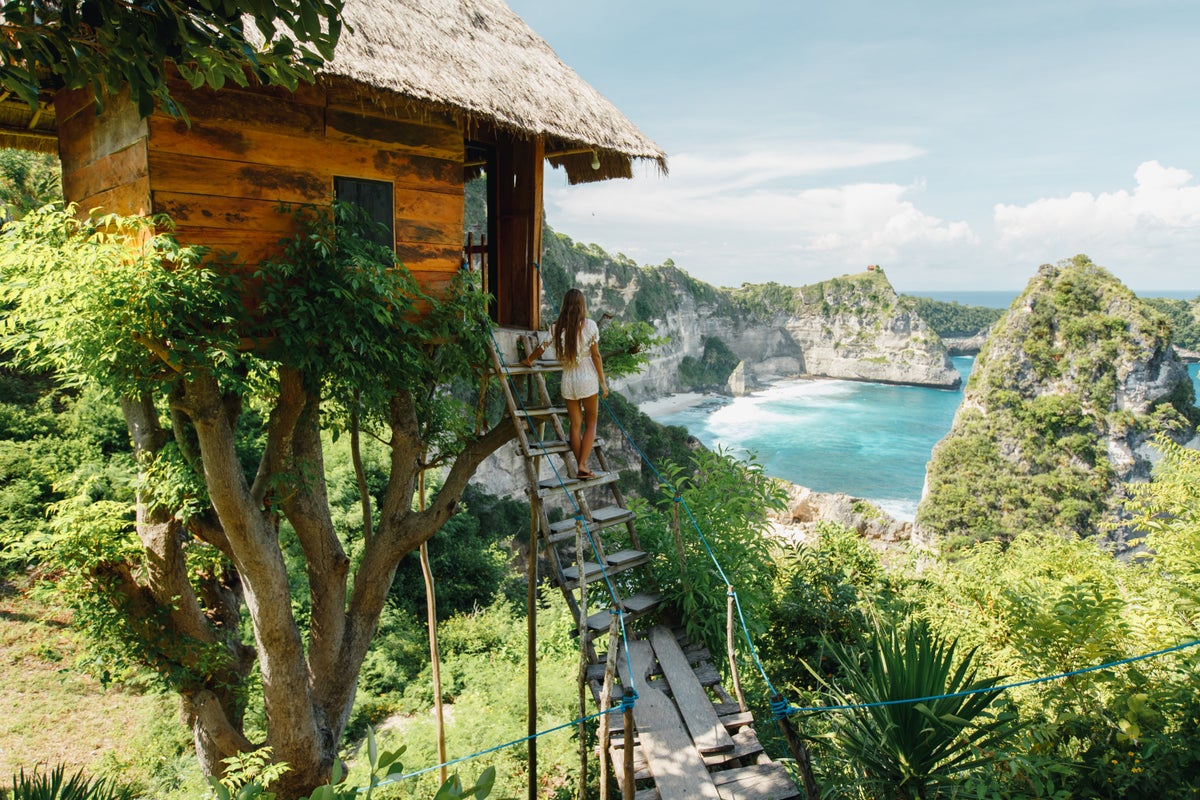
If you would like to have a professional tour operator plan your perfect trip, or are interested in getting more involved with local communities, there are many specialist companies out there that will help you do that.
Eco-friendly tour operators will help you to broaden your horizons while at the same time reducing your footprint. Here are 10 of the very best.
G Adventures
Founded in 1990, G Adventures was set up to offer authentic, sustainable travel experiences, the likes of which had never been seen before. Offering inventive alternatives to cruises and resort hotels, G Adventures can help travelers to find tailor-made and authentic life-changing adventures to perfectly suit their needs.
Intrepid Travel
Since 1988, the team at Intrepid Travel has been offering small group adventures all around the world and is now one of the biggest and most trusted tour operators in its field. Committed to making a real difference by investing in local communities, wildlife conservation, and the environment, travelers get to see the world and make new friends, while at the same time making a real difference.
Blue Ventures
Operating for over a decade now, Blue Ventures is a science-led social enterprise that helps to nurture and sustain locally-led marine conservation projects. Rebuilding fishing communities in places where the ocean is vital to the culture and economy, travelers can volunteer to join Blue Ventures’ responsible initiatives across the world.
Offering small group adventure holidays since 1981, Explore! is committed to offering authentic, localized experiences while leaving as light a footprint on the world as possible. From stopping elephant rides to offsetting CO 2 emissions, the travel operator works with both local and global initiatives to help make the world a better place for everyone.
Mosaic Adventure
Since 2009 Mosaic Adventures has been offering fully specialized trekking itineraries, adventures, and cultural trips in Nepal, Bhutan, and Tibet. Its eco-conscious, small group tours tread lightly while taking a lucky few travelers into some of the most remote areas of the Himalayan peaks and beyond.
Since its first trip in 1979, Backroads has been doing everything it can to make its 2-wheel trips as positively impactful as possible.
It is involved in community projects, buys locally grown products, and practices the principles of Leave No Trace (pack it in, pack it out). It does this for all of its bike tours, walking tours, safaris, cruises, and yoga breaks that demonstrate its commitment to providing responsible travel opportunities.
Covering 80 destinations worldwide, Peregrine supports local economies by working with tour leaders from the regions it visits, sourcing local produce, and carbon offsetting every trip. Travelers can enjoy small group tours in some of the most remote corners of the world while knowing that the travel company they have chosen offers responsible travel solutions. Peregrine also advocates for child protection and animal rights in the tourism industry.
Wildland Adventures
Wildland Adventures was founded on the principle that environmentally responsible travel can be a powerful force for change, and its ethos remains the same to this day. Offering small luxury tours to a wide range of remote destinations, the tour operator supports the affiliate program The Travelers Conservation Trust (TCT) that allows travelers to support local initiatives and small-scale community development projects.
Lindbald Expeditions
The historical legacy of Lindblad Expeditions was to bring travelers to some of the most exotic parts of the world, including Antarctica, Galápagos , Easter Island, and the Amazon, while allowing travelers to experience authentic local cultures. The founders also continue to look for ways for the company to help preserve natural resources as well as getting involved in conservation efforts.
Elevate Destinations
As a provider of custom-designed, eco-luxury adventures and safaris, Elevate Destinations combine upscale tourism with support for local communities and conservation. Offering travelers the chance to embark on their very own ecologically sound adventures, Elevate trips allow explorers to experience and fully understand remote and protected areas.
If you’re looking for an eco-friendly hotel for some domestic travel, look no further than these great hotels.
Cavallo Point Lodge, Sausalito, California

This beautiful hotel housed in a historic building focuses not just on sustainability but also on restoration and preservation as well. With a LEED Gold certification, this stunning traditional home-style hotel works with local suppliers to recycle materials and provide sustainable solutions in a stunning location overlooking the Golden Gate Bridge.
Guests will love the well-appointed bedrooms that offer sensors and timers for energy-efficient fixtures and fittings, as well as natural cooling systems and in-room recycling. There is also a choice of 2 on-site restaurants at Cavallo Point Lodge that serve up delicious local dishes, and the Healing Arts Center for Wellbeing has a host of treatments, classes, and wellness experiences for you to enjoy during your stay.
Proximity Hotel, Greensboro, North Carolina

Sophisticated, stylish, and perfectly sustainable, the Proximity Hotel has been designed with environmentally-friendly amenities in mind.
As the first hotel in the U.S. to receive the LEED Platinum certification from the Green Building Council, this hotel features 100 solar panels on the roof, a bistro bar made of salvaged walnut trees, an elevator that captures the energy and feeds it back into the electrical grid, and interiors made from ultra-efficient materials.
Guests can rest easy in the luxurious guest rooms knowing that the bathroom fittings reduce water usage by over a third. Air quality is provided by circulating large amounts of outside air into guest rooms, and eco-friendly amenities are provided throughout the Proximity Hotel , including bicycle hire to discover the Greensboro area.
H2hotel, Healdsburg, California

Located on the site of a former gas station, this LEED Silver-certified establishment is a real testament to transforming previously wasted spaces into sustainable solutions. Offering a wide range of luxurious yet earth-conscious amenities and set in the heart of Sonoma Wine Country, this is the perfect hotel for those who want to enjoy excellent wine without making a dent on the environment.
The H2hotel utilizes solar panels to heat the pool and hot water, smart sensors for fans, lights, and air conditioners, and an amazing green roof that filters water with its very own bio-diverse environment. The on-site Spoon bar also specializes in locally-produced food and is a delightful spot to relax after a day exploring the Healdsburg area.
Element New York Times Square West, New York

Situated in the heart of the Big Apple, this stylish Manhattan hotel offers authentic city living with additional eco-friendly benefits thrown in. Designed to incorporate as many sustainable features as possible, this is a downtown hotel with a difference.
Bedrooms feature carpets made from recycled materials, low-flow faucets, and earth-friendly paints and interiors, as well as kitchenettes with Energy Star appliances. In the communal areas, guests can admire artworks mounted on bases made from recycled tires or enjoy a drink on the natural rooftop terrace with outstanding views of the city.
Reducing your carbon footprint in a big city environment can be difficult, but Element New York Times Square is certainly committed to changing that.
Hotel Felix, Chicago, Illinois

This chic, urban hotel offers a taste of the luxe-life thoughtfully combined with earth-friendly initiatives and amenities. As the first hotel in the Windy City to earn Silver LEED certification, this hotel is dedicated to recycling in a big way.
The Felix is packed full of organic materials and renewable resources, and the interiors have been created to capture the elements of earth, wind, water, and fire to create a cozy retreat from the urban streets. Carpets made from recycled materials, low-energy lighting, and organic beauty products in the spa are just a few of the eco-friendly touches that set The Felix apart from the competition.
Hyatt at Olive 8, Seattle, Washington

As the first hotel in Seattle to be granted with the LEED-certification, this Hyatt hotel offers much more than just the usual familiar, chain-hotel comforts. On the top of the building sits a green roof that provides the perfect urban habitat for birds, bees, and butterflies, and an in-house water conservation program helps to reduce water wastage throughout every area of the hotel.
Beautifully appointed bedrooms continue the earth-conscious theme with in-room recycling and energy-efficient lighting, while suites and upgrades even have their very own water bars. The on-site restaurant at the Hyatt prides itself on offering farm-to-table offerings from local suppliers, and there is also a spa with organic treatments and beauty products.
Calistoga Ranch, Calistoga, California

Nestled into a canyon in the Upper Napa Valley , the Calistoga Ranch offers luxury lodge accommodation with a ton of eco-friendly amenities woven into the fabric of the establishment. With over 150 acres to explore, guests can stay in any of the freestanding lodges scattered around this car-free estate.
Dine on organic, locally-produced dishes at the on-site eatery, and sleep soundly knowing that your lodge is not only made from natural, sustainably-sourced materials but also that it features energy-saving light bulbs. It also has water flow reducers and ecologically friendly toiletries and cleaning products.
The Calistoga Ranch also offers its very own vineyard, an indoor and outdoor fitness center and acres of picturesque hiking trails within easy reach of your own front door.
Hotel Terra, Teton Village, Jackson Hole, Wyoming

Designed to let you enjoy the great outdoors from the comfort of indoors, this stunning resort hotel features a lot of huge glass windows to make you feel at one with your snowy surroundings. With natural air being circulated around the hotel, you will feel like you are sleeping on a mountain top as you bed down on your organic mattress after a busy day on the slopes.
Designed with nature enthusiasts in mind, the Terra Hotel also offers aluminum water bottles and on-site water stations, low VOC carpets and interiors, radiant underfloor heating, dual-flush toilets, low flow shower fixtures, and solar-powered faucets. The on-site spa uses only organic products, and the ski-in, ski-out nature of the hotel reduces the need for vehicles around the resort accommodation.
Bardessono Hotel and Spa, Yountville, California

This LEED Platinum-certified property offers first-class accommodation paired with eco-friendly practices and standards. Using woods milled from salvaged trees, underground geothermal heating systems, and over 900 solar panels, this is a luxury hotel that takes care of both its guests and the environment.
Guests can enjoy low VOC compound materials, no carpeting, and drapes throughout the Bardessono Hotel , hot water and heating powered by 300-foot wells on the property itself, and low-energy lighting. The on-site restaurant also offers organic, natural, locally sourced produce for guests to savor.
The Hawaii Island Retreat at Ahu Pohaku Ho’omaluhia, Hawaii

Island resorts don’t come much more perfect than this one. The Hawaii Island Retreat at Ahu Pohaku Ho’omaluhia takes green initiatives to the next level with a wealth of earth-friendly additions to be found throughout the entire resort.
Solar panels and windmills are used to create heating and to purify the saltwater pools, while the on-site 50-acre organic farm produces goat milk, avocados, and much much more. The design of the hotel uses the cross breezes from the Kohala to eliminate the need for air conditioning, and bedrooms all offer low-flush toilets, low-flow showers, in-room reclining, and sustainable-sourced linens and interior elements.
Situated in a paradise, the Hawaii Island Retreat makes vacation dreams come true.
There are some incredible eco-friendly hotels that can be found across the world. Here are 10 of the best.
Zuri Zanzibar, Kendwa, Tanzania
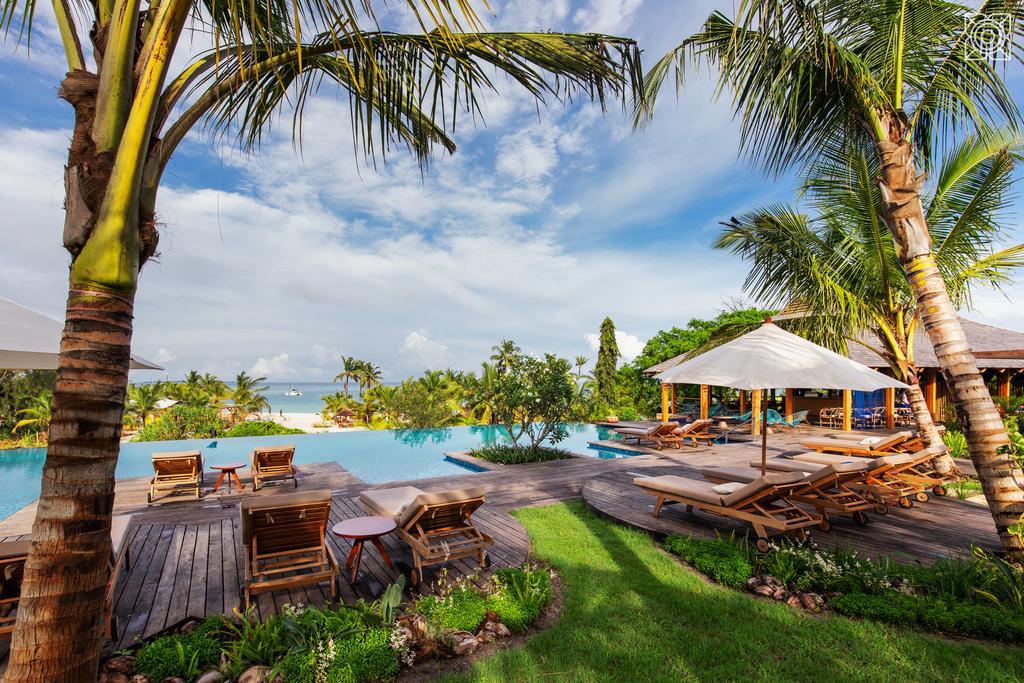
Designed to look just like a traditional African village, the entire hotel is built to work alongside the natural environment and not to damage it in any way. Comprising a range of thatched-roof villas that balance on stilts, guests can take shelter from the sun under the shade of the ancient baobab trees, or sip a cool drink on the white sands of Zuri Beach.
Overlooking the stunning blue seas of the Indian Ocean, Zuri Zanzibar is the world’s first hotel to be awarded EarthCheck’s Sustainable Design Gold Certification and offers standout eco-friendly initiatives and solutions, including an energy-efficient Evening Breeze air-conditioning system in the luxury villas and a home-grown fragrant spice garden.
Six Senses Con Dao, Vietnam

This eco-friendly, 5-star resort offers some of the most luxurious, environmentally-sound accommodations in the world. Designed and built to help reduce consumption while supporting local communities and ecosystems, a stay at the Six Senses Con Dao will awaken all of yours while restoring your faith in human nature.
The Six Senses’ commitment to sustainability and low carbon footprints can be found in every corner of the resort. It has solar panels that heat your shower water, fresh air climate conditioning, and even a Crystal Water system with its refillable glass bottles that save over 10,00 plastic bottles from heading to landfill every month. The Six Sense Hotel is an eco-marvel, found in one of the most beautiful places in the world.
Soori Bali, Tabanan, Bali, Indonesia

A stunning well-being retreat on the island of Bali, Soori Bali, offers guests the chance to unwind and refocus in sustainable surroundings. Designed to meet the requirements of the EarthCheck international environmental standards, the resort has been crafted out of locally sourced materials, combined with opulent and inspiring interiors.
The Soori Bali fully utilizes the island’s famous rainy season with its rainwater filtration systems, and the open-plan spaces allow natural light and air to flow freely. Guests can enjoy total relaxation at the on-site spa that offers a range of treatments with traditional practitioners and herbalists.
Spice Island Beach Resort, Saint George’s, Grenada

This luxurious 5-star resort offers first-class accommodation curated with sustainability in mind. The Spice Island Beach Resort is just a short walk from the world-famous white sands of Grand Anse Beach and has received numerous Green Globe Certifications in recent years.
The resort helps to keep its carbon footprint low by using solar panels to heat the water, providing an on-site desalination system to provide clean water, and using local suppliers and community connections where possible. As one of the very best hotels on one of the prettiest islands in the world, a stay at The Spice Island Beach Resort is a truly memorable occasion.
Thala Beach Lodge, Port Douglas, Queensland, Australia
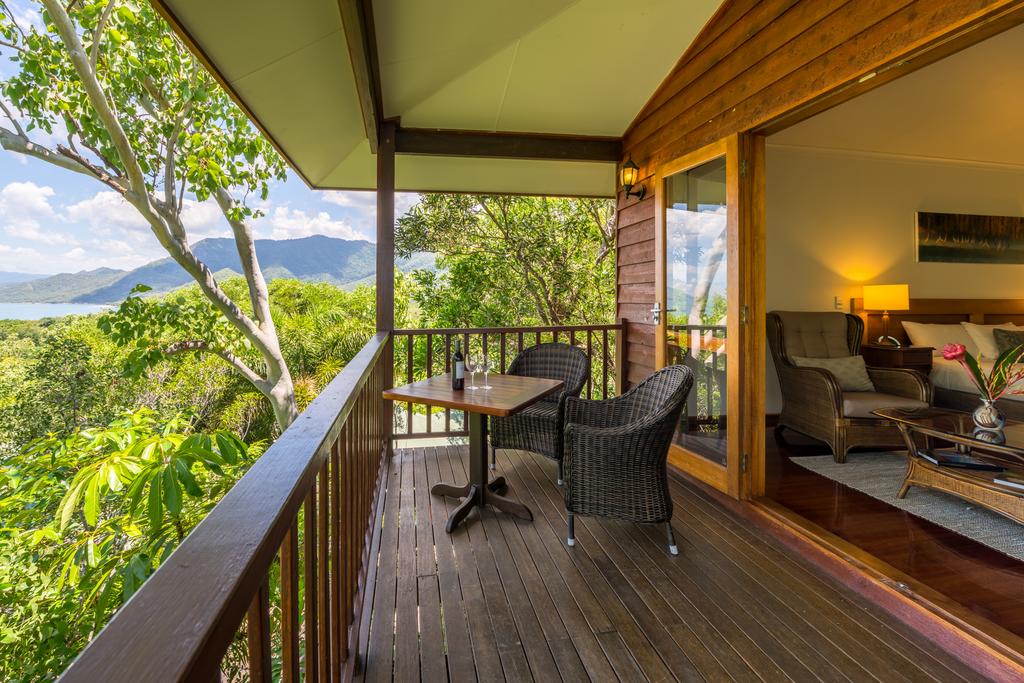
Set on over 140 acres of native forest, the Thala Beach Lodge has been awarded one of the highest eco-tourism accreditations, Advanced Ecotourism Certification. Nestled away on a nature reserve offering views out across the Coral Sea, this quiet corner of Queensland is home to one of the most incredibly eco-friendly accommodations in the world.
This beautiful art deco resort allows guests to stay in comfortable and authentic lodges, while there are plenty of earth-friendly amenities to enjoy including the organic coconut plantation, the natural swimming pools formed by granite boulders and waterfalls, and the regular talks from the local elders of the Kuku Talanji community. There are also lots of free guided tours available at Thala Beach Lodge .
Park Hyatt Maldives Hadahaa, Maldives
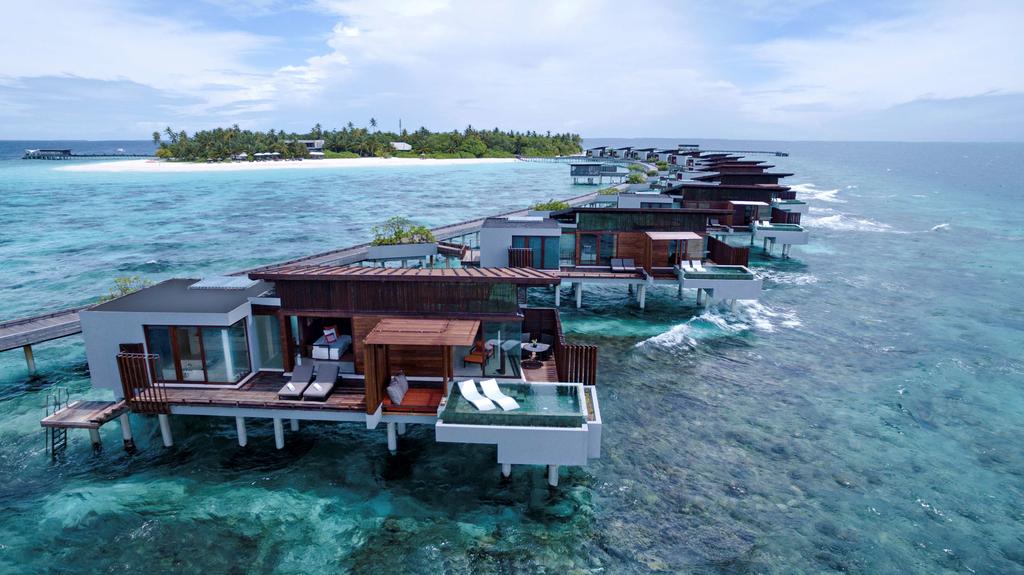
Offering luxury stays on the exclusive island of Hadahaa, the Park Hyatt Maldives offers picture-perfect 5-star villas, first-class diving, and the miles of sandy beaches you would expect to find in the Maldives. What may surprise you, though, is that this famous hotel is also one of the most eco-friendly in the Indian Ocean.
Tucked away in a lush green location, parts of the hotel have been built over the water to minimize disruption to existing ecosystems, and the hotel promotes recycling, fresh air conditioning, and solar heating where possible.
The Park Hyatt Maldives Hadahaa is also the sole recipient of a silver EarthCheck certificate and is the only resort in the Maldives to be awarded by EarthCheck for both design and construction.
The Park Hyderabad, Hyderabad, India

Situated in the business and entertainment district of this bustling city, you would think that The Park Hyderabad is just another upscale urban hotel, but you would be wrong to do so. While the hotel does indeed offer first-class, 5-star accommodation and amenities, it is also one of the few in India to have achieved LEED Gold certification.
The design of the building starts by maximizing natural light that in turn allows it to consume less electricity. It is also careful to use interiors made from sustainable materials wherever possible. For guests at The Park who wish to reduce their personal carbon footprint, green transportation, bikes, and electric cars are very much encouraged to explore the city outside your doorstep.
Whitepod, Monthey, Switzerland

This unusual concept hotel is not luxurious, nor does it offer a huge host of amenities. But for all that it lacks, it more than makes up for with its superb on-piste location, unique sleeping accommodation, and incredible eco-friendly credentials.
Guests are able to sleep on the side of the mountain in a selection of well-appointed pods that have a minimal environmental impact. Each pod is heated by stocking up its own wood stove, lighting is provided by LED bulbs, and there is no bottled water. Whitepod also uses timers on boilers to keep consumption down and water-saving devices on taps and showers.
Lefay Resort & Spa Lago di Garda, Italy
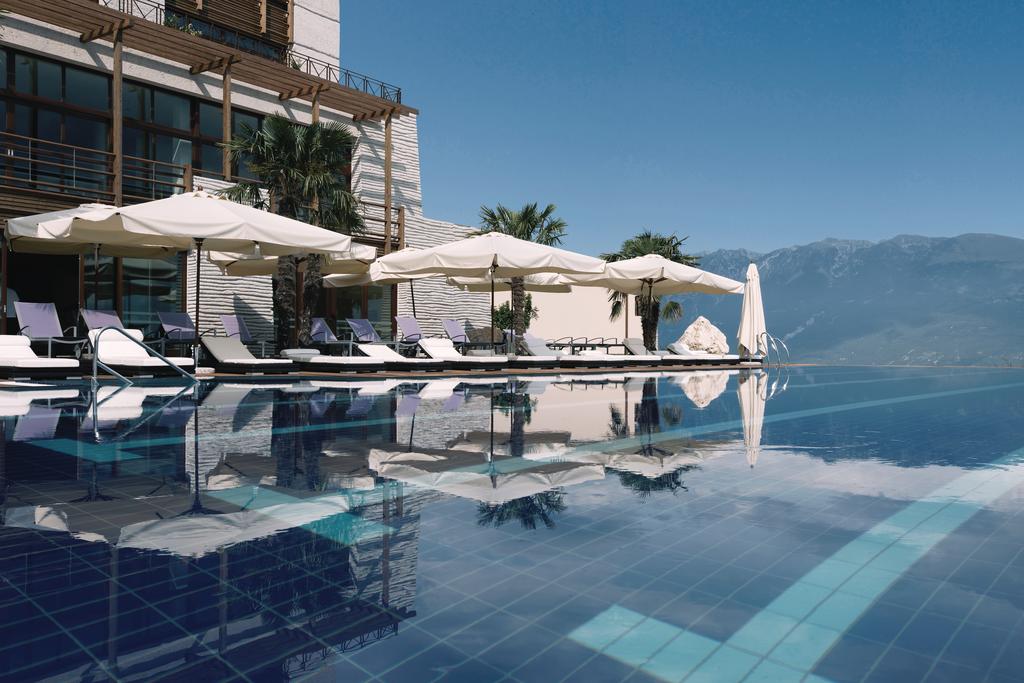
With amazing views out across Lake Garda, the Lefay Resort is an eco-conscious hotel that offers total luxury in this stunning part of the world. Awarded the platinum level GreenLeaders certification, the hotel has been built using natural materials, most of which were locally sourced, including olive wood, Italian walnut, and even marble.
Guests can marvel at the beautiful infinity pool and enjoy the first-class cuisine in the on-site eateries, as well as enjoying a host of treatments available at the Mondo Lefay Spa. They will also be impressed by the use of renewable energy sources at the Lefay Resort for cooling and filtering the air and producing electricity, as well as in-room sensors to turn off electrics when the rooms are empty.
Casa De Las Olas, Tulum, Mexico
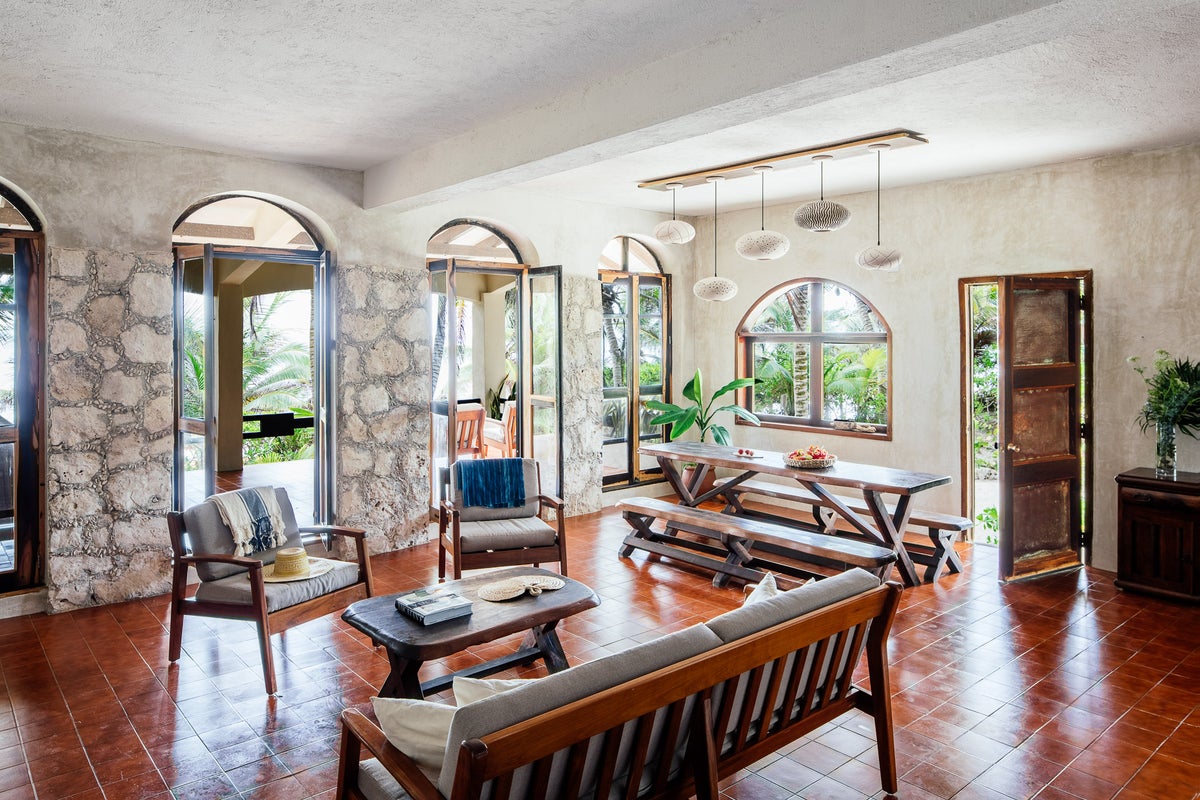
With a strong eco-ethic, this luxury resort hotel is the only property in Mexico with a LEED review and 1 that is committed to combining opulence with sustainability at all turns. Retro-fitted solar panels help to reduce the hotel’s carbon footprint while personal touches like hand-sorted trash offer a truly bespoke twist on traditional recycling.
Guests at Casa De Las Olas can also enjoy rainforest showers using re-filtered well water, as well as locally sourced food from family farms, all carefully handpicked to ensure the freshest and ripest ingredients are always available. Luxury awaits at this stunning, eco-friendly resort just outside of downtown Acapulco.
There is a big world out there just waiting to be explored, and with a bit of forward planning, you can reach the furthest corners of the earth while being a truly responsible traveler. From simple lifestyle changes like ditching plastic straws and single-use bottles, to committing to volunteer with conservation projects, every single person can make a difference — and that includes you!
Frequently Asked Questions
What is green travel.
Green travel can often be referred to as eco-travel, where you travel responsibly and minimize your impact in natural environments. More broadly, this can also involve your impact culturally, socially, and economically, and traveling in a sustainable manner.
What is the most green way to travel?
There are many green alternatives to flying or driving that include, cycling, walking, buses, trains, and electric cars. Depending on the type, motorcycles may also be more fuel-efficient than cars.
How do you become a green tourist?
The simplest method of becoming a green tourist is to remember the 3 Rs for sustainability: reduce, reuse, and recycle. If you consider these with every aspect of travel from packing to transport, you can become a green tourist.
Was this page helpful?
About Amar Hussain
Amar is an avid traveler and tester of products. He has spent the last 13 years traveling all 7 continents and has put the products to the test on each of them. He has contributed to publications including Forbes, the Huffington Post, and more.
INSIDERS ONLY: UP PULSE ™

Get the latest travel tips, crucial news, flight & hotel deal alerts...
Plus — expert strategies to maximize your points & miles by joining our (free) newsletter.
We respect your privacy . This site is protected by reCAPTCHA. Google's privacy policy and terms of service apply.
Related Posts
![eco friendly transatlantic travel American Express Green Card — Full Review [2023]](https://upgradedpoints.com/wp-content/uploads/2018/03/American-Express-Green-Card.png?auto=webp&disable=upscale&width=1200)
UP's Bonus Valuation
This bonus value is an estimated valuation calculated by UP after analyzing redemption options, transfer partners, award availability and how much UP would pay to buy these points.
This site uses cookies.
Some of these cookies are essential, while others help us to improve your experience by providing insights into how the site is being used.
Cookie preferences
This website uses cookies so that we can provide you with the best user experience possible. Our Cookie Notice is part of our Cookie Policy and explains in detail how and why we use cookies. To take full advantage of our website, we recommend that you click on “Accept All”. You can change these settings at any time via the button "Update Cookie Preferences" in our Cookie Notice.
Necessary cookies (required)
Necessary cookies enable core functionality. The website cannot function properly without these cookies, and can only be disabled by changing your browser preferences.
Analytical cookies
Analytical cookies help us to improve our website by collecting and reporting information on its usage.
- Click Here to Register for Our Helicopter Webinar
- Request a demo of IBA NetZero
- B747-400 Parts For Sale
- Request a demo of IBA Insight
- Introducing IBA Airlines Pro
- Knowledge Hub
Back to Articles & Analysis
Next Article
Previous Article
Airbus A321 Neo LR - The New Go-to for Green Transatlantic Travel?
With the steady rise in narrowbody aircraft flying across the pond, is the Airbus A321neo LR the new 'go-to' transatlantic narrowbody aircraft for the environmentally and money conscious traveller and operator?
Share this article
Image: Airbus
In recent weeks, North America's JetBlue launched its first transatlantic route from New York, John F. Kennedy International Airport (JFK) to London Heathrow (LHR) operating its two Airbus A321 Neo LR's (Registrations: N4022J & N4048J) delivered new to the airline in April and June 2021 respectively. Although the idea of using a narrowbody on transatlantic routes isn't exactly new, the JetBlue flights represent a first for the ultra-low-cost market in North America.
The route was only previously achievable in the narrowbody class with the likes of the British Airways BAW001 Airbus A319 flight from London City airport (LCY) to John F Kennedy International (JFK) in a premium, low density, business class only flight. Whereas the Airbus A321 Neo LR, with its maximum range of 4,000 nautical miles, can easily operate the across the transatlantic corridor and has the added flexibility to serve the equally lucrative short haul high demand routes. The upcoming A321 NEO XLR will further extend this to 4,700 nautical miles
The Jet Blue Airbus A321 Neo LR represents up to a -19% saving per seat per Km in CO2 compared to a Boeing 757-200 on a similar sector
The Airbus A321 Neo LR operated by Jet Blue (138 seats) represents a significant cost per seat and, as a direct result, CO2 per seat mile benefit when compared to previous generation competing aircraft on long sector routes. According to data from our InsightIQ Carbon Emissions Calculator 'CEC', the Airbus A321 Neo LR operated by JetBlue represents up to a -19% saving per seat per Km in CO2 when compared to a Boeing 757-200 operating a similar sector length. An A321 LR in a more dense seat configuration would make this saving even more notable.
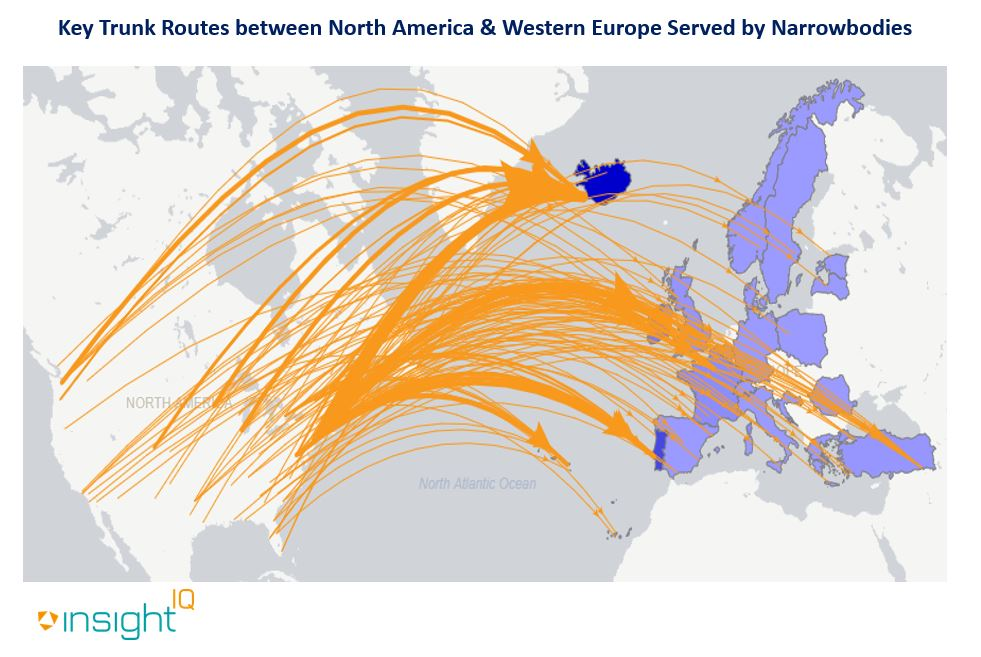
Driven by the InsightIQ flights data module, the map above shows the key trunk routes served by the narrowbody aircraft class between North America and Western Europe. In 2021, the operator with the most numerous Narrowbody flights is Icelandair, serving many destinations in the United States. It is no surprise that the 757-200 is the preeminent aircraft operating between North America and Iceland with a commanding 63% of all flights operated by the type. With the likes of Icelandair, Delta Air Lines and United Airlines commanding 43.8%, 34.56% and 21.6% of all flights from North America to Iceland. Within the remaining mix of aircraft, Icelandair operate their Boeing 737 MAX 8 & 9's, however the Seattle route is largely unfeasible due to the range limitations of the MAX.
Removing the Iceland from the roster of destinations changes the picture a considerable amount; TAP Air Portugal, Aer Lingus and Azores Airlines are the top operators flying the transatlantic route, and unsurprisingly are all operating the A321 Neo or A321 Neo LR with a total aggregated CO2 per seat km of 60.57 g/km according to InsightIQ CEC.
As an asset, the Airbus A321 Neo LR serves to fill the void from where the ageing 757-200 & -300 and in some respects the 767 family will undoubtedly create as they begin to retire in the near future.
According to InsightIQ fleet data , the average age of passenger configured 757 family aircraft is 26 years old, with a large section of the fleet now ripe for P2F conversions in the ever-growing freighter market, with many looking to the 757 family as a good compromise due to the lack of feedstock for the A321 CEO which has been driven by the growth in the e-commerce markets in recent years. The A321 Neo LR's versatility is another benefit of the type. The aircraft could be seen as a more liquid asset in years to come and less volatile when compared to widebodies, which have been notoriously difficult to place when coming off lease with considerable exposure to the market.
IBA's InsightIQ analysis platform flexibly illustrates multiple asset, fleet and market positions, actual and potential, to inform client choices and identify acquisition opportunities. Immediate access to crucial aircraft, engine, lease rate and fleet data eases appreciation of historic and future aircraft concentrations and operator profiles.
Sign up for a system demo
Sign up for our newsletter
Related content

JetBlue and the Transatlantic Air Travel Market
As JetBlue completes its first test flight from New York to London Heathrow using its new Airbus A321LR, we use fleets, flights and orders data from InsightIQ to look at JetBlue and the state of play on the London - New York market.
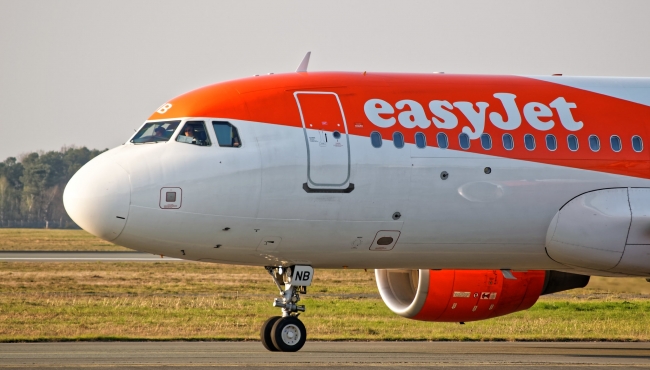
A320 NEO Reduces Carbon Emissions by 18% on EasyJet Gatwick to Tenerife Route
Using unique data from IBA's InsightIQ Carbon Emissions Calculator, we analysed EasyJet flights between London Gatwick Airport and Tenerife South Airport.
Book a demo today
Newsletter sign up
- Privacy notice
IBA House, 7 The Crescent, Leatherhead, Surrey KT22 8DY
National Geographic content straight to your inbox—sign up for our popular newsletters here

How to travel better: a beginner's guide to sustainable travel in 2023 and beyond
Sustainable, green, responsible — planet-friendly ways to explore the world are more popular than ever but how do you start to make better decisions when you travel? The first step is to understand what sustainable travel is and why it’s important.
What’s sustainable travel? Sustainable travel is about travelling in a way that’s sensitive to the climate and nature emergencies while ensuring that the wellbeing of the places we visit gain long-term benefit from us travelling there. It’s a balancing act between maximising the positives of travel while reducing or eliminating the negatives.
What’s happening and why? The concentration of carbon dioxide currently in the atmosphere is well over 400 parts per million higher than at any time in at least 800,000 years — and it’s still increasing, causing global temperatures to rise. The consensus is that a rise of just 1.5C will cause dangerous warming of the planet. The stability of our world’s climate hinges on whether we can keep this small rise in global temperatures in check and time’s running out. This is the decade that counts.
How does this impact the natural world? Commensurate with the climate crisis is the nature emergency: worldwide, 1 million animal and plant species are threatened with extinction due to the intensification of agriculture and forestry, resource extraction, hunting, invasive species, urban sprawl, pollution and climate change. Yet, this is not just about the disappearance of remote rainforests or polar bears at the extremities of the planet – habitat and biodiversity loss are happening on a colossal scale in the UK, to our hedgerows and forests, our garden birds, and the fish in our seas.
What can you do about it? Being a sustainable traveller is not about making grand, one-off gestures, it’s a state of mind, an ongoing attitude to conscious adventure that influences all aspects of how we holiday, including what we pack in our luggage and how we travel out to destinations, as well as the choice of hotels and activities we take part in while we’re there.

How do I even get started? To begin with, consider packing less: travelling lighter will reduce the chances of having to dispose of items; it makes it much easier to travel around, especially on foot, by bike or on public transport; and it’s more fuel efficient — especially noticeable if you’re travelling in an electric car. A useful device for packing economically is to consider the three Rs: Reduce: What can I get away with not taking; are there items that can double up for several uses? Reuse: What can I take that I can reuse over and over again? Recycle: What can I take that can be recycled once I’ve finished using it? Try to avoid taking single-use plastic, such as bottles, bags and straws, which break down over time into tiny microplastics that enter the food chain when they’re consumed by marine wildlife and ultimately cause serious health issues for humans. Instead, pack a refillable water bottle, coffee cup, Tupperware containers for food and toiletries, and a shopping bag — it’ll be handy not just as a replacement for buying a plastic bag at a supermarket, but also when you’re out buying food and groceries at a local market.
What’s the most important change that I can make? The single more significant way to reduce the carbon emissions of travelling is to tackle the transport portion, which is often responsible for at least 70% of the carbon emissions of a holiday. The most effective way to do this is to reduce the distance travelled and to travel in a way that burns less or, even better, no fossil fuels, using more sustainable modes of transport; or by not travelling in a vehicle at all, choosing instead to travel on foot, by bike or under sail. There’s a steep difference in terms of the amount of carbon dioxide emitted by aeroplanes compared with most land-based vehicles. There are concerted efforts to decarbonise air travel using alternative fuels and methods of propulsion (such as via electricity and hydrogen), but even the most optimistic predictions support that this change is at least a decade away for most airlines. For the time being, the emissions from just one long-haul flight can be more than those caused by someone driving a standard petrol car for a whole year. Taking the train within the UK emits about six times less than flying and taking the bus emits about nine times less. In Europe, where many trains (including Eurostar) are electric, the emissions from rail travel can be as much as 10 times less than flying.
And what if I do need to fly? If you do fly, bear in mind that there’s quite a large disparity between the carbon emissions of aircraft and the operating procedures of airlines, so do use online tools such as the ‘Greener Choices’ label on the search results provided by the flight search engine skyscanner.net , which flags up those flights that have less than average emissions.
While flying continues to be such a large polluter, consider adopting a more selective approach to flying: just as with the flexitarian approach to food where you eat a mainly plant-based diet and only occasionally eat lean meat and sustainably sourced fish, a similar attitude to flying could be that you mainly travel overland and only occasionally fly, staying for longer, and making the most of the flight by choosing a positive-impact holiday that benefits nature conservation and/or genuinely benefits the wellbeing of local communities.

What does my carbon impact look like once I get to a destination? There are other factors that will affect your carbon emissions when you’re at the destination, including your choice of hotel and the food you eat. The average carbon footprint of a night in a typical hotel in the UK is about 31.1kg CO2, according to the Hotel Carbon Measurement Initiative, so choosing a hotel that has lower than average carbon emissions can make a significant difference to your holiday’s footprint. Thankfully it’s becoming easier to find green accommodation — keep an eye out for the green filters on specialist accommodation booking sites, such as Airbnb’s ‘off-the-grid’, Sawday’s 'Sustainable stars' and i-escape's 'eco rating', there are several online agencies that specialise in green accommodation, such as fairbnb.coop and myecostay.eu , and even the big online agencies, such as Booking.com , TripAdvisor and Google , now flag up eco-certified hotels in their search results. Many of these eco-certified accommodations do much more than reducing their carbon emissions, they’ll also reduce the amount of waste they send to landfill and reduce the use of chemicals and the amount of water they use.
Feasting on local, seasonal food washed down with the local tipple conveys a sense of place better than any travel brochure. It’s also much better for the environment as there are significant emissions of carbon arising from the ‘food miles’ associated with transporting food great distances. Whether it’s freshly baked bread for breakfast, salad from the local market for lunch, or the catch of the day at the nearby restaurant, choosing local isn’t just good for the planet, it’s also healthier and a great way to put money into the local community.
Where to go Some of the most colourful cities in Europe are a great choice for a green break, such as Bristol, Angers, Nantes, Zurich, Ljubljana and Copenhagen. Here, pragmatic local authorities are implementing the circular economy to create sustainable transport, housing and economic development policies that are accelerating their transition to net zero, which has the knock-on effect of improving the experience for sustainable travellers. For example, regenerative wetlands and connected green spaces help manage storm water, air quality and improve biodiversity, but also provide wonderful green sanctuaries that are great for appreciating urban nature or for just chilling out in parks and gardens across urban villages.

And how to get around? Countries that have a modern, high-speed rail infrastructure make it easy to travel with a lower carbon footprint. Switzerland has an extensive public transport network across the country (the Swiss Travel Pass provides free admission to 500 museums as well as unlimited travel on trains, bus, boat and public transport in cities), while France, Spain, Italy and Germany have impressive high-speed rail networks, particularly between major cities.
What about long haul? Further afield, some countries have made concerted efforts to include tourism in their sustainable development goals. Following decades of tree clearing for agriculture and livestock production, in the 1980s the Costa Rican government implemented policies that have halted and reversed this deforestation. Today, over half of Costa Rica’s land is covered by forest, compared to just 26% in 1983, allowing it to make the most of the biodiversity in its rainforests and pioneer the concept of ecotourism, developing small-scale, high-end eco lodges that have contributed to the conservation of its rainforests. Guyana, too, is developing community-based ecotourism to fund the protection of its rainforests. Lodges such as Iwokrama River Lodge , Rewa Eco-Lodge and Surama Eco-Lodge enable visitors to enjoy the country’s incredible biodiversity, while contributing to its conservation and to the livelihoods of remote communities.
Where can I look for more information? Richard Hammond is a sustainable travel expert and founder of Green Traveller and the author of The Green Traveller: Conscious Adventure That Doesn’t Cost the Earth (£18.99, Pavilion).
Subscribe to National Geographic Traveller (UK)
Follow us on social media
Twitter | Facebook | Instagram
Related Topics
- SUSTAINABLE TOURISM
You May Also Like

A beginner's guide to sipping rums

5 ways to make travel more meaningful in 2023
For hungry minds.

A beginner's guide to fernet, the bitter Italian spirit


How South Australia's Eyre Peninsula is leading the way in sustainable seafood, from cockles to kingfish

Is this the end of short-haul flights? How sustainability is shaping the future of air travel

10 of the best UK destinations for spring travel

10 whimsical ways to experience Scotland
- Environment
History & Culture
- History & Culture
- History Magazine
- Gory Details
- Mind, Body, Wonder
- Paid Content
- Terms of Use
- Privacy Policy
- Your US State Privacy Rights
- Children's Online Privacy Policy
- Interest-Based Ads
- About Nielsen Measurement
- Do Not Sell or Share My Personal Information
- Nat Geo Home
- Attend a Live Event
- Book a Trip
- Inspire Your Kids
- Shop Nat Geo
- Visit the D.C. Museum
- Learn About Our Impact
- Support Our Mission
- Advertise With Us
- Customer Service
- Renew Subscription
- Manage Your Subscription
- Work at Nat Geo
- Sign Up for Our Newsletters
- Contribute to Protect the Planet
Copyright © 1996-2015 National Geographic Society Copyright © 2015-2024 National Geographic Partners, LLC. All rights reserved
Subscribe to Updates
Don't just get logical, get ecological.
Subribe to our updates below to stay up to date with all things sustainability.
Record $8.8 Billion Pulled from US Sustainable Funds in Q1
The us military is now being served plant-based meat, international energy agency report: clean energy investment up by 70%.

Transatlantic Flight Breaks Ground with 100% Sustainable Aviation Fuel
In a groundbreaking moment for the aviation industry, Virgin Atlantic has achieved the world’s first transatlantic flight using 100% Sustainable Aviation Fuel (SAF).
Departing from London Heathrow and touching down at New York JFK, this pioneering journey signals a significant milestone in the pursuit of sustainable air travel.
Embracing a Greener Way of Flying
Supported by government funding , the flight aims to showcase the aviation sector’s commitment to exploring eco-friendly alternatives. Traditional aviation fuels have long been criticized for their contribution to carbon emissions.
In contrast, SAF holds promise by potentially reducing “lifecycle emissions” by up to 70%. The use of SAF derived from waste fats and US corn production waste emphasizes the fuel’s diverse and renewable sources.
A Quote From The Founder
Founder of Virgin Atlantic, Sir Richard Branson, said, “The world will always assume something can’t be done, until you do it. The spirit of innovation is getting out there and trying to prove that we can do things better for everyone’s benefit.
“Virgin Atlantic has been challenging the status quo and pushing the aviation industry to never settle and do better since 1984. Fast forward nearly 40 years, that pioneering spirit continues to be Virgin Atlantic’s beating heart as it pushes the boundaries from carbon fibre aircraft and fleet upgrades to sustainable fuels.
“I couldn’t be prouder to be onboard Flight100 today alongside the teams at Virgin Atlantic and our partners, which have been working together to set the flight path for the decarbonization of long-haul aviation.”
Addressing the Challenges of Sustainable Aviation Fuel
While the successful demonstration of a SAF-powered transatlantic flight is a momentous achievement, challenges in the widespread adoption of SAF persist.
One significant hurdle is the limited supply of SAF, necessitating swift policy and investment actions to scale up production. Current fuel standards only permit a 50% SAF blend in commercial jet engines, highlighting the need for further advancements in this area.
It will take time before SAF becomes accessible for widespread use. The current cost of SAF remains higher than traditional fuels, and scalability of production is crucial to prevent inflated flight prices. The journey ahead involves not only addressing the technical aspects but also navigating the economic considerations of SAF adoption.
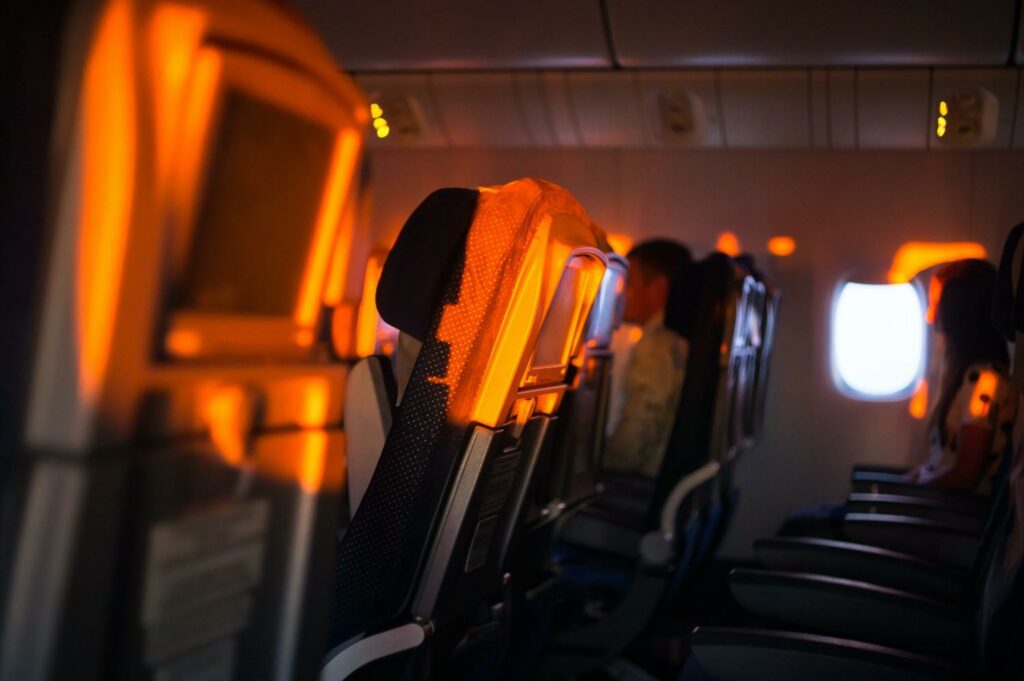
Sustainable Aviation Fuel ‘s Mid-Term Viability
Amid ongoing discussions about future technologies like electric and hydrogen-powered flight, SAF emerges as a pragmatic and mid-term solution for decarbonizing long-haul aviation.
The Flight100 initiative serves to underscore the safety and viability of SAF as a drop-in replacement for fossil-derived jet fuel. This success story prompts the aviation industry and governments to accelerate efforts in establishing a robust SAF industry.
Scaling Up Sustainable Aviation Fuel for Broader Impact
Despite its immense potential, SAF currently constitutes less than 0.1% of global jet fuel volumes. Flight100 acts as a catalyst, urging policymakers and investors to act swiftly and decisively to overcome production challenges.
The flight’s success reinforces SAF’s potential to lead the aviation industry toward a more sustainable future, serving as a vital component in the broader strategy for reducing the sector’s environmental impact.
Closing Thoughts: Sustainable Aviation Fuel’s Role in Aviation’s Green Future
Flight100 shows SAF’s capacity to revolutionize air travel . As electric and hydrogen technologies remain on the horizon, SAF stands out as a practical and feasible solution available today. While challenges exist, the success of this transatlantic flight sparks optimism and underlines the urgency for a collective effort from industry stakeholders and governments.
The future of aviation hinges on proactive policies, substantial investments and ongoing innovations to transform SAF into a mainstream and accessible fuel source, to help reduce the aviation industry’s environmental footprint.
Our diverse team of sustainability news writers blends corporate, academic and lifestyle expertise to guide you towards a more ethical way of living.
Related Posts
Leave a reply cancel reply.
Save my name, email, and website in this browser for the next time I comment.
Type above and press Enter to search. Press Esc to cancel.
Get Daily Travel Tips & Deals!
By proceeding, you agree to our Privacy Policy and Terms of Use .
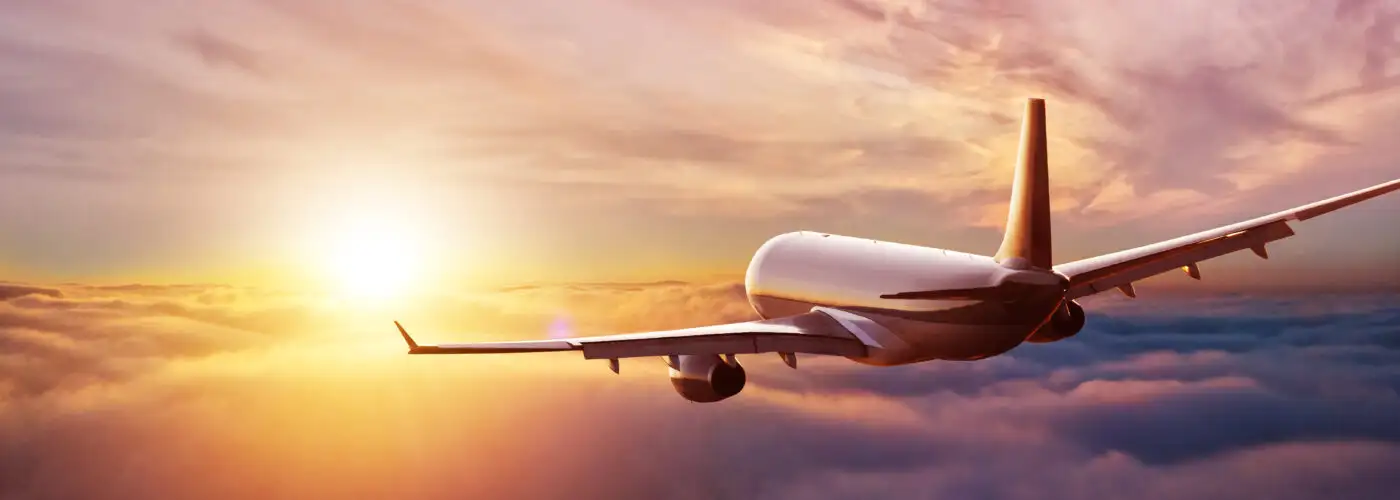
The 7 Most Affordable Transatlantic Carriers for 2023
Carol McPherson
Carol McPherson is an Editor for SmarterTravel Media. Follow her on Instagram @cj_mcpherson.
A member of SmarterTravel since 2019, Carol is an eco-friendly travel enthusiast with a passion for exploring historical sites and trying new things (especially new foods!) She’s lived in Boston and Rome, and hopes to call more cities home in the future.
The Handy Item I Always Pack: “Noise cancelling headphones. I can handle a flight of any length if I have my headphones and a good podcast.”
Ultimate Bucket List Experience: "Hiking trip in New Zealand."
Travel Motto: “You never know until you try!”
Aisle, Window, or Middle Seat: “Aisle for long-haul flights, window for short. Does anyone pick middle?”
Travel Smarter! Sign up for our free newsletter.
A European vacation can be expensive , but airfare doesn’t have to be. With low-cost carriers like Norse Atlantic and French bee increasing their presence in the United States in recent years, it’s never been easier to book a transatlantic flight on a budget. Below are seven affordable carriers that can get you to Europe without emptying your bank account.
Editor’s Note: Fares are accurate at time of publication.
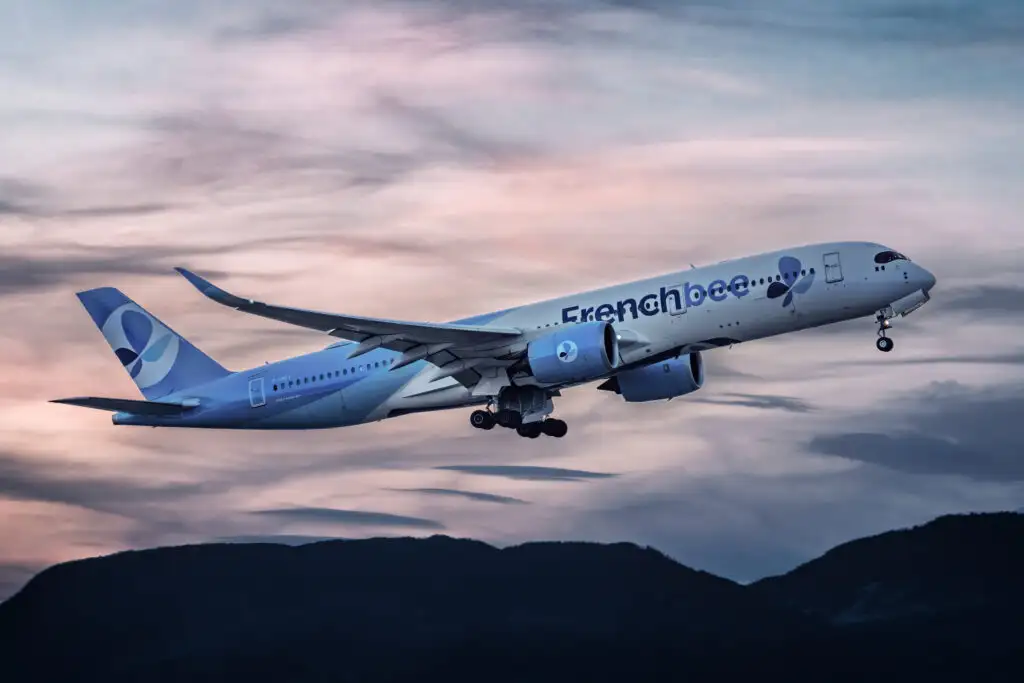
Launched in 2018, low-cost carrier French bee operates out of five major airports around the US, including its recently expanded service from Miami International Airport. Destinations include Paris and Tahiti. Guests can book a standard ticket for as little as $460 roundtrip or can upgrade to Premium Economy for a fraction of the cost of a Premium Economy ticket on traditional carriers.
About the Fleet: French bee’s fleet is made entirely of Airbus A350 XWB aircraft, which are one of the most fuel-efficient models available and produce 40% less noise pollution than the previous generation.
Who Should Book French bee: Travelers looking to explore Paris or to use France as a homebase for a larger EU trip. Climate-conscious travelers may also appreciate the airline’s Green Pilot Certification —the first airline in the world, alongside its sister company Air Caribe, to receive the status.
SmarterStay: Spend a Long Weekend in Paris, France
Norse Atlantic Airways
If you’re planning a trip to the UK, Norse Atlantic Airways is for you. Launched in 2021 and based in Norway, Norse Atlantic operates flights between the US and the UK, Norway, Italy, Germany, and France. This long-haul carrier is set to add four new routes to London this summer, making it the airline with the most routes between the US and London Gatwick (LGW).
This expansion will add service from Boston, Los Angeles, San Francisco, and Washington Dulles to existing routes from New York (JFK), Orlando, and Fort Lauderdale (service from Orlando and Fort Lauderdale will be launching May 2023).
About the Fleet: Norse Atlantic operates their flights with Boeing 787 Dreamliners , which produce 25% lower CO 2 emissions than the previous generation of aircraft.
Who Should Book Norse Atlantic: Travelers looking to get to London on a budget.
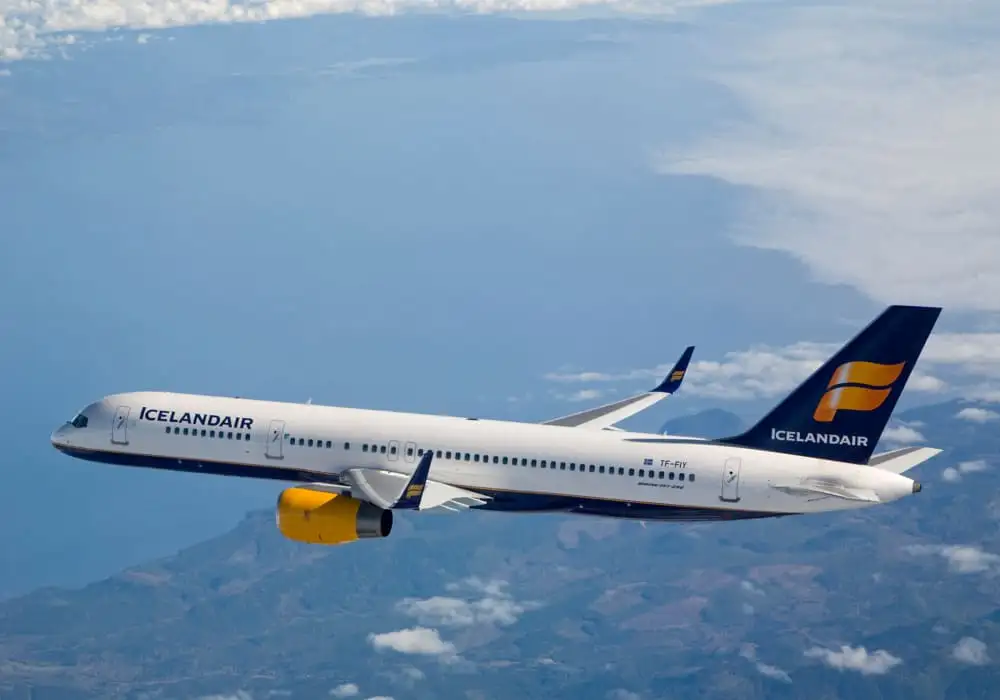
While not technically transatlantic, IcelandAir offers several flights from the US to Europe connecting through Reykjavik. It operates from twenty-one US airports across the country, with service expanding to include Detroit Metropolitan Airport beginning May 18th. With a wide network of US departure airports spanning coast to coast, travelers from anywhere in the country will be able to find an option that works for them.
About the Fleet: IcelandAir operates its long-haul flights on Boeing 757 (for trips to/from the West Coast and Canada) and Boeing 767 (for trips to/from Europe and the East Coast). They’ve also updated the fleet with the the Boeing 737 MAX 8 and Boeing 737 MAX 9, newer models that consume less fuel.
Who Should Book IcelandAir: Savvy travelers who want to take advantage of the airline’s “Add a Stopover” offer to explore Iceland.
The Best and Worst Airlines of 2022, Ranked
Condor is a low-cost carrier based out of Frankfurt, Germany that has been in operation since 1955. The airline maintains dedicated terminals at New York (JFK), Los Angeles (LAX), San Francisco (SFO), Anchorage (ANC), Fairbanks (FAI), and Seattle (SEA), with additional routes to Boston, Las Vegas, Baltimore-Washington, Minneapolis, Portland, and Phoenix.
About the Fleet: Condor operates its long-haul flights on Airbus A330-200, Boeing 767-300ER, and Airbus A330neo aircraft.
Who Should Book Condor: Travelers flying from the West Coast and Pacific Northwest.

PLAY Air , founded in 2019 by former WOW Air executives, is another relatively new budget airline on the scene. Operating from just three East Coast airports—Boston Logan International Airport, Washington Dulles International Airport, and New York Stewart International Airport—PLAY air flies to 15 destinations across Europe, including France, Spain, Ireland, Greece, and the Czech Republic.
About the Fleet: PLAY Air operates its itineraries on Airbus A320neo and A321neo aircraft.
Who Should Book PLAY Air: East Coasters looking for a quick and easy flight.
What Happens to Items Left Behind at TSA Checkpoints?
Worldwide by easyJet
EasyJet itself does not operate transatlantic flights, but through their Worldwide by easyJet program, travelers can book multi-leg journeys through their many partners, including PLAY Air and Norse Atlantic . Through Worldwide, travelers can book flights from New York, the Los Angeles Area, Chicago, Atlanta, and Orlando to European destinations like Rome, Barcelona, Edinburgh, and more.
About the Fleet: EasyJet has one of the “youngest” airfleets in the world , with the average age of their aircraft being just under 7 years. Flights operate on Airbus A319, Airbus A320CEO, Airbus A320NEO, and Airbus A321NEO. Note that when connecting to a partner airline through the Worldwide initiative, flights will be operated on the partner airline’s fleet.
Who Should Book easyJet: Travelers who want to browse easyJet’s extensive roster of destinations and let the best deal guide their trip.

It may be surprising to see a bigger brand name on this list, but JetBlue does technically fall into the low-cost carrier category. Rivaling traditional major carriers in both reputation and brand recognition, JetBlue flies out of 73 airports across 32 states plus 6 airports from Washington DC, Puerto Rico, and the US Virgin Islands. They also partner with American Airlines, Hawaiian Air, IcelandAir, JSX, Qatar Airways, Singapore Airlines, Silver Airways, South African Airways. AerLingus, Cape Air, and Porter, furthering their reach.
Passengers can fly Blue Basic for optimal savings or opt to fly Mint , Jetblue’s first class which offers extra comfortable lie-flat seats with aisle-access and plenty of legroom.
About the Fleet: Jetblue operates flights on a wide range of aircraft , including models that burn less fuel and models that reduce engine noise . Check Jetblue’s list of plane names to find the unique—and often pun-laden— name of your aircraft before departure.
Who Should Book Jetblue: Travelers who want the familiarity of a well-established domestic carrier for their long-haul experience.
You Might Also Like:
We hand-pick everything we recommend and select items through testing and reviews. Some products are sent to us free of charge with no incentive to offer a favorable review. We offer our unbiased opinions and do not accept compensation to review products. All items are in stock and prices are accurate at the time of publication. If you buy something through our links, we may earn a commission.
Top Fares From

Don't see a fare you like? View all flight deals from your city.
Today's top travel deals.
Brought to you by ShermansTravel
9-Nt Dublin, Cork, Killarney & Galway...
Railbookers

Luxe, 7-Night Caribbean & Mexico Cruise...
Regent Seven Seas Cruises

Ohio: Daily Car Rentals from Cincinnati

Trending on SmarterTravel

The Most—and Least—Ecofriendly Ways to Travel
What type of transportation should you take if you want to leave the smallest carbon footprint the answer is not that simple..
- Copy Link copied

Being a greener traveler isn’t as simple as swapping one mode of transport for another.
Photo by misign/Shutterstock
The flight shame movement has taken off on the basis that flying is terrible for the environment. But for those who want to do better by planet Earth and reduce their climate change–inducing carbon footprint, simply reducing their reliance on air travel will only address one small slice of the problem.
In the United States, the overall transportation sector is the biggest producer of greenhouse gas emissions, according to the U.S. Environmental Protection Agency (EPA) . In 2017 (the most recent year for which data is currently available), transportation accounted for 29 percent of greenhouse gas emissions, followed by electricity at 28 percent, and industry at 22 percent.
Within the transportation sector, road vehicles are actually the biggest culprit, accounting for a whopping 82 percent of those emissions, with aircraft accounting for 9 percent, and rail for 2 percent (ships, boats, and other forms of transportation account for 7 percent combined), according to the EPA.
It’s a similar story on the global front. In the European Union, road transport accounted for 72 percent of transportation-related CO 2 emissions in 2016, according to a report released by the European Parliament this year. The next largest contributor was water transport (boats and ships), at 13.6 percent, followed by air travel at 13.4 percent. Rail only contributed 0.5 percent.
When in doubt, take a train
So, why does air travel get such a bad rap? Well, that’s because when you look at the emissions attributable to an individual passenger traveling by car versus rail versus air, air travel does pretty miserably. For instance, according to the site EcoPassenger , which calculates per-passenger carbon emissions between destinations in Europe, for a person traveling from London to Paris during a popular travel time (so when trains and planes are likely to be more full and thus more efficient), the CO 2 output would be 122 kilograms if that person flew, versus 48 kilograms if he or she drove or 15 kilograms by train.
And if you’re wondering where cruise ships fall into the lineup, they don’t have a strong track record either. The International Council on Clean Transportation recently concluded that even the most efficient cruise ships emit between three and four times more CO 2 per passenger, per kilometer than an airplane.
Rail travel, however, is consistently one of the lowest emitters. It’s not surprising that the flygskam or “flight shame” movement inspired by Swedish climate activist Greta Thunberg has put the emphasis on converting air travel to much less impactful rail journeys.
National rail operator Amtrak reports that one of its electric trains emits .074 kilograms of greenhouse gases (CO 2 ) per passenger mile, compared with .227 kilograms of greenhouse gases per passenger mile for short-haul flights (flights less than 300 miles), and .137 kilograms of greenhouse gases per passenger mile for longer flights (flights between 300 and 2,300 miles). That translates into 70 percent fewer emissions for a rail journey when compared to a short-haul flight and about half the emissions for a rail journey when compared to a long-haul flight.
In short, if you opt to take a train versus a plane, your carbon output for that journey will likely be quite a bit lower. But that’s definitely not as easily done in the United States, which as the fourth largest country in the world has huge expanses to cross, and where the rail system is notoriously behind in sophistication and scope compared to its international counterparts, including the high-speed rail networks of Europe.
The environmental cost of driving
So, what if you opt to drive instead of fly? Well, that’s where the issue becomes more complicated. For one, depending on the distance and the passenger load, driving may not result in a considerably lower emissions output. A recent BBC article citing U.K. government energy data noted that CO 2 emissions per passenger, per kilometer traveled were .171 kilograms for a passenger car with one person in it, versus .102 kilograms for a long-haul flight, and .133 kilograms for a shorter-haul domestic flight within the United Kingdom.
Sure enough, the more people in the road-based vehicle, the lower the per-passenger emissions, with CO 2 emissions per passenger, per kilometer traveled being .043 for a bus, and .041 for each person in a car with four people traveling in it (versus only one, cited above). The lowest emitter (once again) was high-speed rail, at .006 kilograms, according to the U.K. government data.
Additionally, if you opt out of a flight and choose to drive instead, you are joining the masses on the road to be part of what is in fact the biggest overall contributor to greenhouse gas emissions in the transportation sector. A lot more people drive in this world than fly. The aviation industry accounts for about 2 percent of global carbon emissions, according to the Natural Resources Defense Council. So that means that if everyone were to stop flying, just 2 percent of the problem would be solved.
Focus on greener vehicles
While some people might be craving a simple, impactful solution to reducing their travel carbon footprint—and sure, making a statement by not flying, for instance, is certainly significant—the reality is that for those who want to make a lasting and longer-term difference, a more thoughtful approach to transportation decisions will be needed.
According to David Reichmuth, Ph.D., a senior engineer with the Union of Concerned Scientists’ Clean Vehicles Program, for travelers looking to reduce their impact, they should be thinking about several factors.
“There’s a lot we can do to make [transportation] cleaner and have fewer emissions. So, for passenger vehicles, having both more efficient gasoline vehicles but then also switching entirely from petroleum to electricity allows for reducing both tailpipe emissions and climate-changing emissions,” said Reichmuth.
Reichmuth added that concerned travelers should be thinking about greener vehicles, whether that is their own cars (which he argues is where the biggest impact could be made within a given household) or by being more informed about how efficient their aircraft, bus, or train is. Even within rail travel, for instance, there is a wide range of emissions output depending on the types of trains—diesel trains are typically more polluting than electric trains, and some electric trains are less efficient than others. He also said travelers should think about avoiding vehicle use when possible by walking or biking and should consider taking greater advantage of public transit opportunities and carpooling.
One way to be more informed about each mode of travel is to calculate and compare the carbon emissions output of a given trip. Thankfully, there are numerous, free, online calculators that help travelers do this now. The International Civil Aviation Organization, which is part of the United Nations, has a version for air travel that is intended for use in buying carbon offsets. The site offCents , meanwhile, allows users to calculate emissions for their rail, car, or airplane travel, with the aim of recommending corresponding offset programs, which users can contribute toward to offset their journeys.
Flex those influence muscles
Ultimately, the biggest factors impacting emissions related to travel are decisions that are made at the policy level—regulations that dictate what kind of emissions standards manufacturers must abide by.
Travelers who want to see their journey truly become greener should speak up. The airline industry is beginning to take notice of growing concerns about climate change and has begun to make some serious strides when it comes to scaling back on emissions, as well as offsetting them (they are also being required to do so by national and international regulations that have been put into place).
“To the extent that you can, take an active role in advocating for these policy actions. That can be at the local level,” said Reichmuth, noting that many municipalities have their own individual climate goals and action plans that citizens can get involved in. At the state and federal level, people can also advocate for and support clean vehicle policies that could ultimately result in travelers having a larger, and ideally greener, range of vehicles and modes of transportation to choose from.
>> Next: These Are the World’s Most Environmentally Friendly Countries


Tips for Eco-Friendlier Travel

Getting There
If you compare the fuel efficiency of different modes of transportation you will find the following: 1
- Amtrak train travel uses 2,978 BTUs per passenger-mile
- An automobile uses on average 3,496 BTUs per passenger-mile (based on 1.6 passengers)
- Airlines use 3,959 BTUs per passenger-mile
Beginning with this energy use and factoring in such other environmental factors as air emissions, water pollution, and infrastructural impacts on land and habitat, we give the following recommendations for choosing a mode of travel:
- Take the train. A train can use up to 70% less energy and causes up to 85% less air pollution than air travel. 2 Even though trains run on diesel, they are highly efficient because for much of the time the train’s wheels glide on the rail. Mass transit options such as the train or bus are better for the environment and give you the freedom to sleep, read, or do work on the way.
- Don’t fly if you can help it. One transatlantic flight for a family of four creates more CO 2 than that family generates domestically in an entire year, and about twice the emissions of a car traveling 12,000 miles. 3 Short flights are especially energy-guzzling because take-off and landing require so much extra energy. If you must fly, do it only for long flights and go nonstop whenever possible. 4 Planes also emit lots of pollutants at high altitudes, particularly nitrogen oxides, which may triple the climate impact of plane travel. 5 Flying is generally by far the least eco-friendly option.
- If you must drive a car, consider not just going fuel-efficient but renting a hybrid . You can start with listings from the Eco-Directory . For the issues associated with driving cars, and also a survey of future transportation technologies, read the Terrain article Car Wars: Renegotiating Our Relationship with the Open Road .
- Contribute to a carbon-offset program . If you have to fly, consider making your trip more "climate-neutral" by making a donation to zero- or negative-emission projects such as building renewable energy facilities that help to cancel out the carbon dioxide produced by your flight. Carbon offsets are available through organizations such as those listed in the Eco-Directory . Alternatively, you could donate an estimated amount of money to the environmental group of your choice, such as the Ecology Center .
Choosing a Destination and Staying There 6
- Greener hotels: Some hotels are making a commitment to reduce their environmental impact. Since some are doing more than others, ask each hotel about its environmental practices before making a reservation.
- Linens: Laundering sheets and towels consumes large amounts of energy, water, and detergent. Specifically ask that your linens and towels be changed less frequently.
- Human-powered and public transportation: Not only are walking and bicycling good for the environment and your health — they can also help you stumble upon all sorts of hidden treasures you might not have found otherwise. Many cities have bus and rail systems that can bring you to major hotels and attractions, reducing or eliminating the need for a car. If possible, don’t rent a car, don’t rent a scooter, and don’t fly within the country. Plan your trip using buses, trains, ferries, bicycles, and your feet.
- Ecotours: The city in which you’re staying may have sightseeing tours designed to minimize your impact on indigenous populations and the local environment. Check the city’s tourism website or call its chamber of commerce for details.
- Going camping? The Leave No Trace Center for Outdoor Ethics’s fact sheet on the Seven Principles of Responsible Camping will tell you how to camp with the least impact. Other great links on camping — including camping with kids, camp recipes, and making your own gear — can be found at knowledgehound.com .
For more ideas, Lonely Planet has a great Guide for Responsible Travel on their website. Have a great trip!
Much of this guide was adapted from articles from Grist and The Green Guide .
1 Source: Department of Energy, Sierra Club, http://www.sierraclub.org/howgreen/getaway/answer.asp
2 Source: http://www.climnet.org/publicawareness/transport.html
3 Source: http://www.redpepper.org.uk/temp/x-mar2005-stewart.htm
4 Jets produce an average of almost .4 tons of C0 2 per passenger per flight. Source: The Green Guide, http://www.thegreenguide.com/doc.mhtml?i=114&s=ecotourism
5 Little is known about the effects of atmospheric releases of NO x from planes and other sources. The pollution impact of every plane trip also includes your travel to and from the airport, all the golf carts driving around on the tarmac, and the thousands of airline employees who go to work to get you on the plane. These other "mobile sources" must be factored into the per-mile pollution burden of air travel. We weren’t able to find this calculation.
6 Adapted from the Union of Concerned Scientists, http://www.ucsusa.org/publications/greentips/304-lowimpact-travel-tips.html
Get Involved

- Contact Information
- Privacy Policy

- FARMERS’ MARKETS
- FARMERS’ MARKET EBT PROGRAM
- MARKET MATCH
- FARMERS’ MARKET FINDER
- FOOD POLICY COUNCIL
- ALLIANCE OF FARMERS’ MARKETS
- BERKELEY CURBSIDE RECYCLING
- RESOURCEFUL, YOUR PATH TO ZERO WASTE
- THE PROBLEMS WITH PLASTICS
- ZERO WASTE RESOURCES
- PLASTIC FREE JULY
- DISPOSABLE FOODWARE POLICY TOOLKIT
- BERKELEY CLIMATE ACTION COALITION
- CLIMATE ACTION EVENTS
- CLIMATE CHANGE RESOURCES
- CLIMATE EQUITY
- YOUTH ENVIRONMENTAL ACADEMY
- RESOURCE CENTER & HELPDESK
- CLASSES & EVENTS
- FACT SHEETS & LINKS
- ECODIRECTORY
- LIBRARY & SEED LIBRARY
clock This article was published more than 4 years ago
What’s the greenest way to travel?
Climate curious? Ask us anything about climate, and Washington Post reporters will answer.

Should I personally give up air travel, and should companies be pushed to reduce air travel by employees? If we cut our air travel by half, what impact would that have on the climate?
— Diane, California
How does long-distance travel affect climate change? (I.e., if I take Amtrak from D.C. to NYC instead of flying, how is that better given that the plane will still get there without me on it?)
— Kya, Washington
I want to take a trip to Florida to help out some ailing elderly relatives. For lowest emissions, should my wife and I fly round trip from the Washington, D.C., area or make the trip in a Tesla Model 3 at 133 mpg?
— Glenn, Maryland
Here is the stark and sad truth: There is almost no way to explore the planet without harming it.
Since 2017, the transportation sector has been the U.S. economy’s biggest source of greenhouse gases . Each year, people in the United States generate the equivalent of 1.9 billion metric tons of carbon dioxide to move ourselves and our stuff around — more than the cumulative emissions of every country in Africa put together. We’re driving, flying and cruising more miles than ever before — and we’re still relying almost entirely on fossil fuels to do so.
Canceling one round-trip ticket on a trans-Atlantic flight saves 1.6 tons of carbon dioxide — as much as the average citizen of India emits all year, according to a 2017 study published in the journal Environmental Research Letters. If Americans could slash our commercial aviation travel in half, we would avoid the equivalent of about 65 million metric tons of CO2; that’s as much annual savings as we’d get from replacing 2.5 billion conventional lightbulbs with energy-efficient LEDs.
This fact is sobering, but it should also be empowering. If you are lucky enough (and wealthy enough) to be among the tiny fraction of the world’s population who fly regularly, then a potent tool for protecting the planet is already within your reach. Go grab it.
Of course, there is some travel we cannot give up: essential work trips, visits to family and beloved friends. In those cases, a traveler must make the best of the options available to them. And that involves doing some math.
The standard unit for measuring carbon footprints is “tons of CO2 equivalent.” This describes the total global warming impact of all the greenhouse gases emitted by a person, business or country in terms of how much carbon dioxide it would take to achieve the same amount of warming over 100 years. Though a little unwieldy, this term lets scientists account for the fact that some gases — such as methane — are especially potent when it comes to trapping heat in Earth’s atmosphere.
But energy efficiency isn’t just about the total greenhouse gases emitted — it’s about how many people a vehicle can carry, and how far it can take those people. To evaluate modes of transport, scientists calculate the amount of CO2 equivalent generated to transport one passenger over a given distance.
These numbers vary depending on the length of the trip and the number of travelers. Since takeoff is the most fuel-intensive part of a plane trip, longer flights emit fewer greenhouse gases per mile than shorter ones, and nonstop flights are greener than ones that require connections. For this reason, a single traveler is better off flying directly from New York to Los Angeles than driving. But if you put more passengers in your car, or are going somewhere relatively close (say, from New York to Washington), it’s preferable to hit the road. Driving a hybrid or electric vehicle will make your trip greener than a flight of the same distance. Better still would be to take a train; according to a 2013 report from the National Academies of Sciences, Engineering and Medicine, the average emissions from a trip on a European high-speed train are half to a fifth of those from an equivalent flight.
What does that mean for Glenn’s journey from Washington to Florida? According to a calculator operated by Atmosfair , a German nonprofit that offers carbon offsets for travel-related emissions, a round-trip economy class flight from Dulles International Airport to Miami generates about 0.75 tons of CO2 equivalent per passenger. (That number more than doubles if you fly first class — as if waiting to board behind all the Platinum members wasn’t enough to turn you into a Jacobin.)
Gasoline produces about 20 pounds of carbon dioxide per gallon burned, and the average American car gets about 25 miles per gallon . This means the 2,100-mile round trip drive from Washington to Miami produces 1,680 pounds of CO2 — about 0.375 tons per single passenger. If Glenn drives his Tesla, he can get that number down to 0.07 tons.
Kya’s northward flight from Washington to New York would generate 0.21 tons of CO2 equivalent, according to Atmosfair. If she switches to Amtrak, she will produce just a quarter of those emissions.
Sure, the plane might still take off without her. The choices of one person can’t alter much in a world of 7 billion people, and too many people don’t have any choice at all.
Susan Shaheen , co-director of the Transportation Sustainability Research Center at the University of California at Berkeley, noted that many American communities lack sidewalks and reliable public transit systems. A shortage of affordable housing pushes people to live far from city centers, leading to lengthy commutes. The United States spends a much smaller fraction of its GDP on passenger rail infrastructure than most other developed nations; our rail network is among the least extensive in the world, and it has one of the worst safety records.
The dearth of environmentally sound transportation options is a global problem. This month, Greta Thunberg, the Swedish teenager whose weekly protest in front of her country’s parliament helped spark the youth climate movement, traveled to the United Nations’ climate conference in Spain via a zero-emissions sailboat. The 16-year-old doesn’t fly, so a multiweek boat voyage was the only way she could get across the Atlantic.
“I’m not traveling like this because I want everyone to do so,” she told reporters . “I’m doing this to sort of send a message that it is impossible to live sustainably today, and that needs to change.”
In travel, as in all other things, the people with the greatest capacity to combat warming are those with the money and power to introduce systemic change. Governments must regulate carbon-intensive modes of transportation and provide affordable, accessible alternatives to make a real difference. Corporations must invest in technologies to make travel more energy-efficient.
But individuals possess a form of power that governments and corporations don’t: People can transform culture. They can reduce the demand for unsustainable products, and they can inspire those around them to take action. Change is the cumulative effect of many individuals opting for a different, better path.
Kimberly Nicholas , the Lund University sustainability scientist who published the 2017 estimate of the climate costs of flying, said she has cut her air travel to just one flight a year — across the Atlantic to visit family. She bikes to work and vacations only in places she can reach by train. Whenever possible, she opts not to travel at all, giving work presentations via Skype and swapping in-person meetings for teleconferences.
To others, these might seem like sacrifices. But Nicholas said she’s come to appreciate the unexpected benefits of her choices — the tranquility of a train trip through snowy countryside; the comfort of having more time at home.
“We see the status quo as representing what’s good, and we overlook the problems,” she said. “We need to imagine the things that are better about a more sustainable system.”


Blog » Resources » 10 Best Cruise Lines for an Eco-Friendly Cruise in 2024
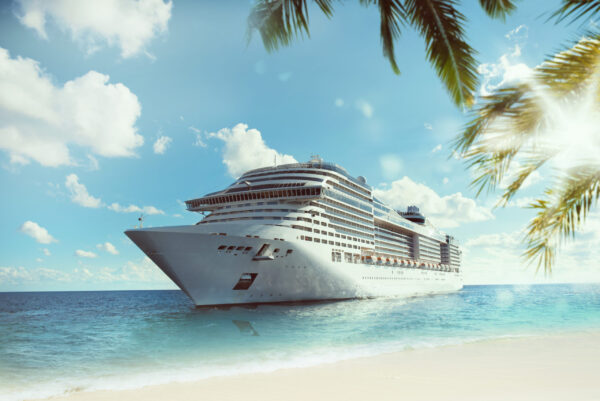
10 Best Cruise Lines for an Eco-Friendly Cruise in 2024
You have found our helpful list of the 10 Best Cruise Lines for an Eco-Friendly Cruise!
A cruise line catering to eco-conscious travelers is a maritime service provider committed to minimizing its environmental impact and promoting sustainable practices throughout all aspects of its operations. Such cruise lines prioritize the conservation of natural resources, employ eco-friendly technologies, and implement waste reduction strategies to safeguard marine ecosystems. From utilizing cleaner fuels and energy-efficient technologies to incorporating stringent waste management systems, these cruise lines strive to offer an environmentally responsible and sustainable cruising experience. By adhering to green initiatives, supporting conservation efforts, and fostering a culture of responsible tourism, cruise lines catering to eco-friendly travelers aim to provide a harmonious balance between maritime exploration and environmental preservation.
This list includes:
- The 10 Best Cruise Lines for an Eco-Friendly Cruise in 2024
- Cruise lines that have a spirit of fun that are friendly to the environment
- Eco-friendly vacation ideas to watch 2024
- Vacations you can take that are conscious of protecting the environment
- Rest and recreation that minimizes pollution
Let’s get right to the list!
This compilation of the best cruise lines for an eco-friendly voyage stands as a testament to the growing demand for sustainable and responsible travel on the high seas. This curated list identifies and celebrates cruise lines at the forefront of environmental stewardship, each dedicated to minimizing its ecological footprint and fostering a commitment to sustainable practices. From innovative green technologies and energy-efficient propulsion systems to initiatives aimed at reducing single-use plastics and supporting local conservation efforts, these cruise lines redefine the traditional maritime experience by prioritizing the planet’s well-being. This guide serves as an invaluable resource for environmentally-conscious travelers, offering a selection of cruise lines that not only showcase the world’s natural wonders but also uphold a deep commitment to preserving them for future generations through eco-friendly and responsible cruising.
1. Windstar Cruises
Windstar Cruises offers small-ship sailing experiences, often visiting off-the-beaten-path destinations. Their itineraries include hidden ports and intimate shore excursions, providing a more personalized and adventurous journey.
2. Hurtigruten
Known for its expedition cruises, Hurtigruten specializes in exploring polar regions like Antarctica and the Arctic. They offer adventure-packed itineraries, including wildlife encounters, ice-cruising, and excursions to remote and unique landscapes.
3. UnCruise Adventures
UnCruise Adventures focuses on small-ship, adventure cruising to destinations like Alaska, Costa Rica, and the Galápagos Islands. With activities like kayaking, hiking, and wildlife encounters, they cater to travelers seeking an active and immersive experience.
4. National Geographic Expeditions – Lindblad Expeditions
This partnership combines the expertise of National Geographic with Lindblad Expeditions to offer unique cruises to destinations like the Galápagos, Antarctica, and the South Pacific. The emphasis is on exploration, education, and connecting with nature.
Ponant is a luxury expedition cruise line that ventures into remote and extraordinary destinations, including the Arctic, Antarctica, and the Amazon. Their small ships provide an intimate setting for exploration and adventure.
6. Quark Expeditions
Specializing in polar adventures, Quark Expeditions takes travelers to the Arctic and Antarctica. With activities like polar camping and kayaking, they cater to those seeking an adventurous and immersive experience in extreme environments.
7. SeaDream Yacht Club
For a luxurious yet unconventional experience, SeaDream Yacht Club offers small-ship cruises that can access secluded ports and anchorages. Their itineraries focus on unique destinations and personalized experiences.
8. Star Clippers
For a different sailing experience, Star Clippers operates tall ship cruises that combine the charm of traditional sailing with modern amenities. Destinations include the Mediterranean, Caribbean, and Southeast Asia.
9. Atlas Ocean Voyages
Atlas Ocean Voyages provides adventurous itineraries to less-traveled destinations, offering activities like land expeditions, hiking, and wildlife encounters. Their ships are equipped for exploration in remote regions.
10. Aqua Expeditions
Specializing in river cruises, Aqua Expeditions takes travelers to unique destinations like the Peruvian Amazon and the Mekong River. Their small luxury vessels provide an intimate and adventurous experience.
In conclusion, this carefully curated list of the best cruise lines for an eco-friendly voyage stands as a beacon for conscientious travelers who seek to explore the world’s wonders while leaving a positive impact on the environment. Each cruise line highlighted here exemplifies a commitment to sustainable practices, setting a commendable standard for the cruise industry. As travelers embark on these eco-friendly journeys, they contribute to a collective effort in preserving our planet’s precious ecosystems. By choosing these cruise lines, passengers not only embark on memorable maritime adventures but also play a crucial role in fostering a sustainable and responsible approach to cruising. This compilation celebrates the harmonious union of exploration and conservation, inviting travelers to sail into a future where the beauty of our oceans is cherished and protected.
FAQ: 10 Best Cruise Lines for an Eco-Friendly Cruise in 2024
Here are some frequently asked questions about the 10 Best Cruise Lines for an Eco-Friendly Cruise in 2024!
How do eco-friendly cruise lines contribute to environmental sustainability?
Eco-friendly cruise lines contribute to environmental sustainability through a variety of initiatives. These may include using cleaner fuels, implementing energy-efficient technologies, reducing single-use plastics, practicing responsible waste management, and supporting conservation efforts at destinations visited.
Are eco-friendly cruise lines more expensive than traditional cruise options?
The cost of eco-friendly cruises can vary, but it’s a common misconception that they are significantly more expensive. While some sustainable practices may incur additional costs, many eco-friendly cruise lines are working to make environmentally responsible travel accessible and competitive in terms of pricing.
What measures do eco-friendly cruise lines take to reduce their carbon footprint?
Eco-friendly cruise lines adopt various measures to reduce their carbon footprint, such as employing energy-efficient propulsion systems, utilizing alternative fuels, optimizing itineraries for fuel efficiency, and implementing technologies to minimize emissions and energy consumption.

- Feb 11, 2023
What is Eco Travel? Everything You Need to Know
What is eco travel? Find out everything you need to know in this article, including how you can be a more sustainable traveler.

Travel has the power to connect us to new cultures, landscapes, and experiences. However, it's important to consider the impact that our travel can have on the environment and local communities.
That's where eco travel comes in - it's a way to explore the world while minimizing our impact on the planet. But what exactly is eco travel?
In this article, we'll delve into everything you need to know about eco travel, from its definition to the benefits it provides and the steps you can take to make your own travels more sustainable.
Jump Ahead: Everything You Need to Know About Eco Travel
What is Eco Travel?
The importance of sustainable travel.
How Does Eco Travel Differ from Traditional Travel?
What Are the Benefits of Eco Travel?
How Can I Travel More Sustainably?
Eco travel, also known as sustainable travel, is a type of travel that minimizes its impact on the environment and local communities.
It involves being mindful of how our travels affect the world around us and taking steps to reduce the negative impact while enhancing the positive.
Eco travel is not just about the destination, but also about the journey and the way we interact with the world during our travels.

As more people take to the roads, skies, and seas to explore the world, the impact of tourism is becoming increasingly apparent. From overcrowding and damage to natural habitats to exploitation of local communities and cultures, the impact of traditional travel practices cannot be ignored.
By choosing eco travel, we have the opportunity to reduce our impact and help preserve the world's most precious places for future generations.
How Eco Travel Differs from Traditional Travel
Eco travel is different from traditional travel in several key ways. While traditional travel may prioritize convenience, speed, and comfort, eco travel prioritizes sustainability and the protection of the environment and local communities.
Eco travelers may choose to stay in sustainable accommodations, take low-carbon transportation options, support local businesses, and engage in responsible tourism activities.
These actions help to reduce the environmental impact of travel and support sustainable development in destination communities.

The Benefits of Eco Travel
Eco travel has numerous benefits, both for the traveler and the world around them.
Firstly, it has a positive impact on the environment and local communities, preserving the natural beauty and cultural heritage of destinations for future generations.
Secondly, eco travel can enhance the travel experience itself, offering opportunities for more authentic, meaningful, and immersive encounters with new places and cultures.
Finally, eco travel can have a profound personal impact, helping travelers to develop new perspectives and connect more deeply with the world.
Whether it's learning about sustainable practices, supporting local businesses, or engaging in responsible tourism activities, eco travel can be a truly transformative experience for those who embrace it.

Steps to Make Your Travel More Sustainable
Making your travel more sustainable doesn't have to be complicated. By following a few simple steps, you can minimize your impact and help to protect the environment and local communities.
1. Research Before You Go
Before you even set foot on a plane, train, or bus, do some research on your destination. Learn about local customs and cultures, sustainable practices, and environmentally-friendly options for transportation, accommodation, and activities. This research can help you make informed decisions and minimize your impact.
2. Use Public Transportation or Low-Carbon Alternatives
Where possible, opt for public transportation or low-carbon alternatives such as cycling or walking. Not only will this help to reduce your carbon footprint, but it can also offer a more immersive and authentic travel experience.
3. Support Sustainable Businesses and Practices
Look for accommodations and activities that prioritize sustainability and have a positive impact on the environment and local communities. By supporting these businesses, you can help to promote sustainable practices and encourage other travelers to do the same.
4. Reduce Waste and Minimize Plastic Use
Minimize your waste and reduce your plastic use during your travels. This can include bringing your own water bottle, avoiding single-use plastics, and properly disposing of waste.
5. Engage in Responsible Tourism Activities
Consider engaging in responsible tourism activities, such as volunteering, conservation efforts, or cultural exchange programs. These experiences can be incredibly rewarding and help to promote sustainability in destination communities.
6. Stay at Eco-Friendly Hotels
Another way to become a more sustainable traveler is to stay at eco-friendly hotels. Some accommodations are certified with organizations that recognize those companies that are taking measures to reduce their impact. Certifications like those from Green Globe, Earth Check, and Green Key mean that your hotel is doing a lot more than those without.

Eco travel is a growing trend that offers numerous benefits for travelers and the world around them. By embracing sustainable practices and minimizing our impact, we can help to preserve the beauty and cultural heritage of destinations for future generations.
Whether it's researching before you go, using low-carbon alternatives, supporting sustainable businesses, reducing waste, or engaging in responsible tourism activities, there are many ways to make your travels more sustainable.
With a little effort, we can all be part of the solution and help to create a better world for ourselves and those who come after us. So why not make eco travel a priority on your next adventure and see the world in a whole new light?
Recent Posts
The Best Eco Friendly Hotels in London: A Sustainable Guide
The Best Sleeper Trains in Europe
Eco Hotels in Tulum: 10 Sustainable and Beautiful Places to Stay
Commentaires
This article contains affiliate links to products, hotels, and tours. If you make a purchase or reservation, we receive a small commission.
- Nov 15, 2023

- Nov 7, 2023

- Nov 6, 2023

- International edition
- Australia edition
- Europe edition
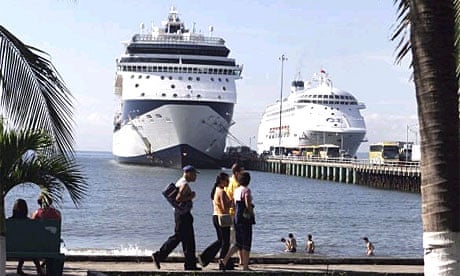
Is cruising any greener than flying?
Cunard Cruises spokesman
“We do get people crossing the Atlantic because they don’t want to fly. Every ship has to meet environmental targets and the Queen Mary II has a zero-discharge policy.”
Climate Care , carbon offsetting company
“According to our calculations, a cruiseliner such as Queen Mary 2 emits 0.43kg of CO2 per passenger mile, compared with 0.257kg for a long-haul flight (even allowing for the further damage of emissions being produced in the upper atmosphere). Sometimes our instincts about what’s best for the environment are wrong and this shows the importance of calculating the actual carbon emissions from different activities and making our decisions - both as individuals and government policy - based on the real numbers. We would certainly welcome the cruise liner industry taking a closer look at their carbon footprint. As these figures show, it is not negligible.”
Richard Hammond, the Guardian's green travel columnist
"Quite aside from the carbon emissions, there is a high cost to the ocean. The cruise industry has a poor record in terms of waste water treatment and disposal, and therefore it has to clean up its act if it is to be considered as an environmentally friendly means of travel. The size of the industry is also crucial: cruising is the fastest growing sector of the travel industry. In 2003, 9.3 million passengers took a cruise while the International Eco-tourism Society projects that 17 million passengers will do so in 2010.”
Gwyn Topham, author of Overboard: the stories cruise lines don't want told
“Mile for mile, the carbon footprint for a cruise is worse - and many passengers will take planes to join a cruise. Since the big cruise lines were hit with massive fines in the US for polluting waters a few years ago, they have made improvements - but ships are not facing that same kind of scrutiny outside Alaska and California. The overall benefits to the ports of call are questionable. And while environmentalists do generally agree that new ships are greener, it takes a long time to adapt older ships and in many areas - such as cleaner fuel, better waste treatment systems - campaigners think cruise lines aren't doing nearly enough.”
Tricia Barnett, director of Tourism Concern
"It’s not greener, and it's a much broader issue than carbon emissions alone. Cruise ships are the ultimate all-inclusive holiday experience where everything is paid for before you board. So the benefits to locals when you dock are minimal, but they have to deal with the waste that the cruise ship leaves behind. While you're on board huge amounts of electricity will be used to provide everyone with the services they expect.”
Justin Francis, Responsible Travel
“You might naturally assume that a ship would emit less carbon dioxide than a long-haul flight but it’s not the case. On a typical one-week voyage a cruise ship generates more than 50 tonnes of garbage and a million tonnes of grey (waste) water, 210,000 gallons of sewage and 35,000 gallons of oil-contaminated water. Some of this is pumped into ocean and some treated. The cultural impact of large numbers of tourists descending on, in some cases, small destinations has also been overlooked. People are after simple answers, simple solutions. But we’ve oversimplified it with flying: if people really want to reduce their carbon, they can make a larger difference by lagging their boiler or taking showers not baths, rather than cutting out a flight to somewhere which needs it.”
George Monbiot , environmental campaigner and author
“There are remarkably few figures. But George Marshall of the Climate Outreach Information Network has conducted a rough initial calculation for the Queen Elizabeth II. Cunard says the ship burns 433 tonnes of fuel a day, and takes six days to travel from Southampton to New York. If the ship is full, every passenger with a return ticket consumes 2.9 tonnes. A tonne of shipping fuel contains 0.85 tonnes of carbon, which produces 3.1 tonnes of carbon dioxide when it is burnt. Every passenger is responsible for 9.1 tonnes of emissions. Travelling to New York and back on the QEII, in other words, uses almost 7.6 times as much carbon as making the same journey by plane.”
- Green travel
Most viewed

Pulse of Pride
Top 10 Tips for Choosing Eco-Friendly Cruise Options
Posted: May 10, 2024 | Last updated: May 10, 2024
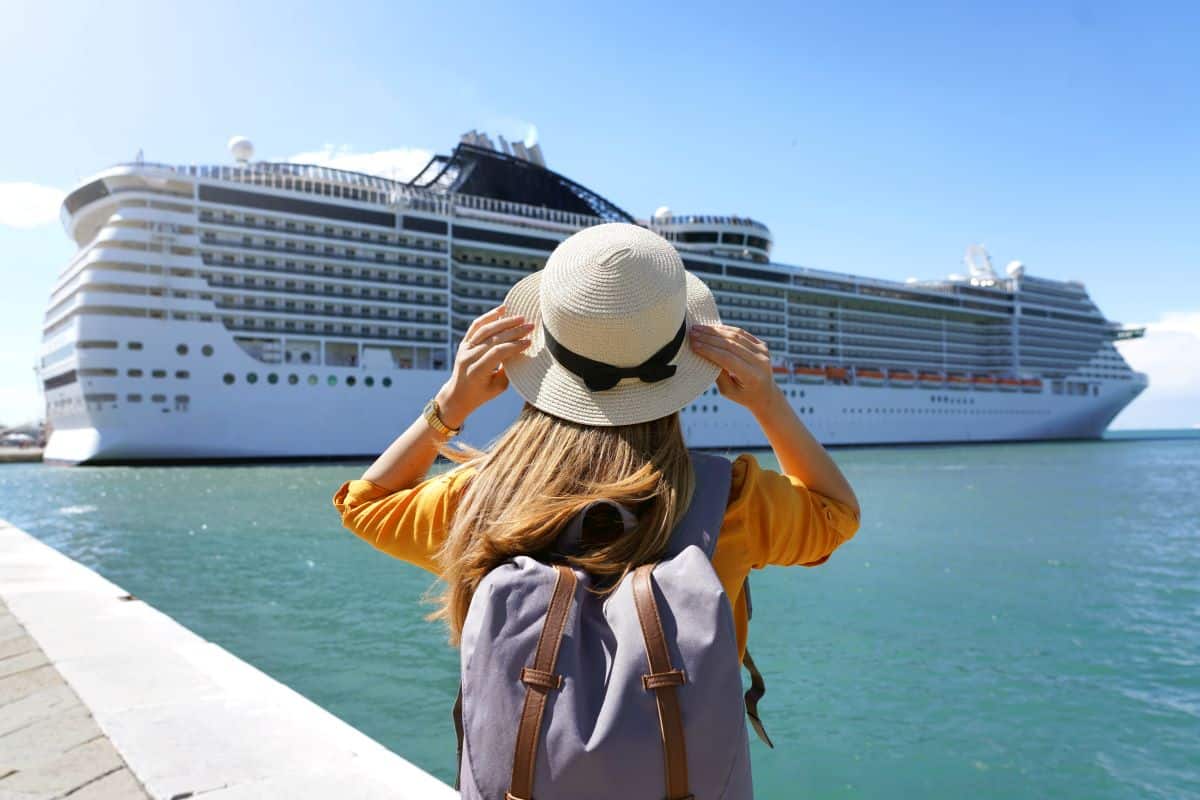
In an era where environmental consciousness is paramount, the question arises: Can cruising be eco-friendly? This guide explores the evolving world of sustainable cruising, exploring how the industry adapts to minimize its environmental footprint. From innovative ship designs to responsible onshore activities, we uncover the strides being made towards greener seas. Whether you’re an avid cruiser or a conscious traveler, this exploration into eco-friendly cruising offers insights into how you can enjoy the oceans while preserving them for future generations.
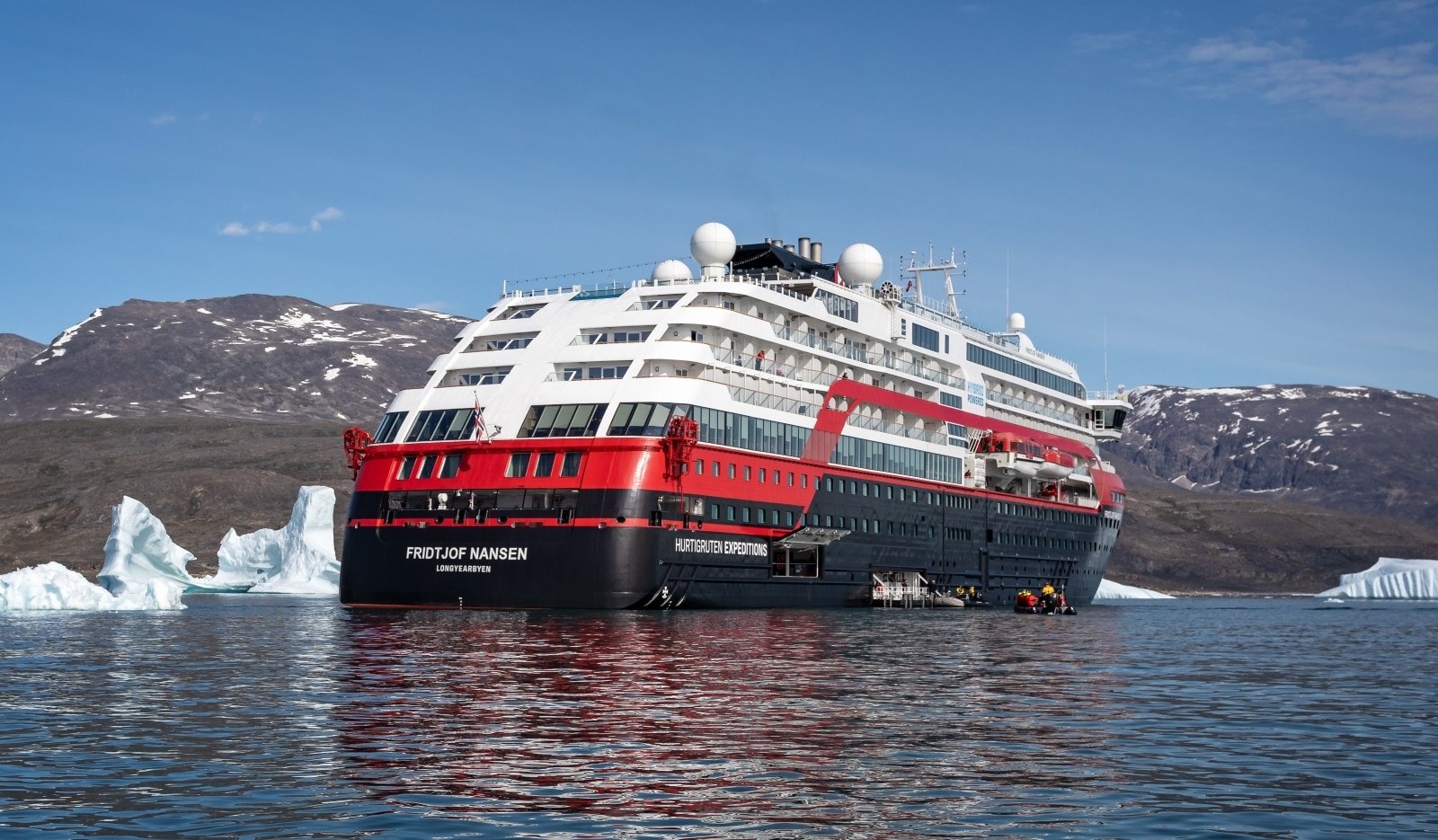
1. Choosing Eco-Conscious Cruise Lines
Selecting a cruise line committed to sustainability is the first step towards eco-friendly cruising. Many companies are now implementing practices like using cleaner fuels, reducing waste, and conserving water. Lines such as Hurtigruten and Ponant are leading the way with hybrid-powered ships and advanced waste management systems. These cruises offer a luxurious experience and ensure that your journey has a reduced environmental impact.
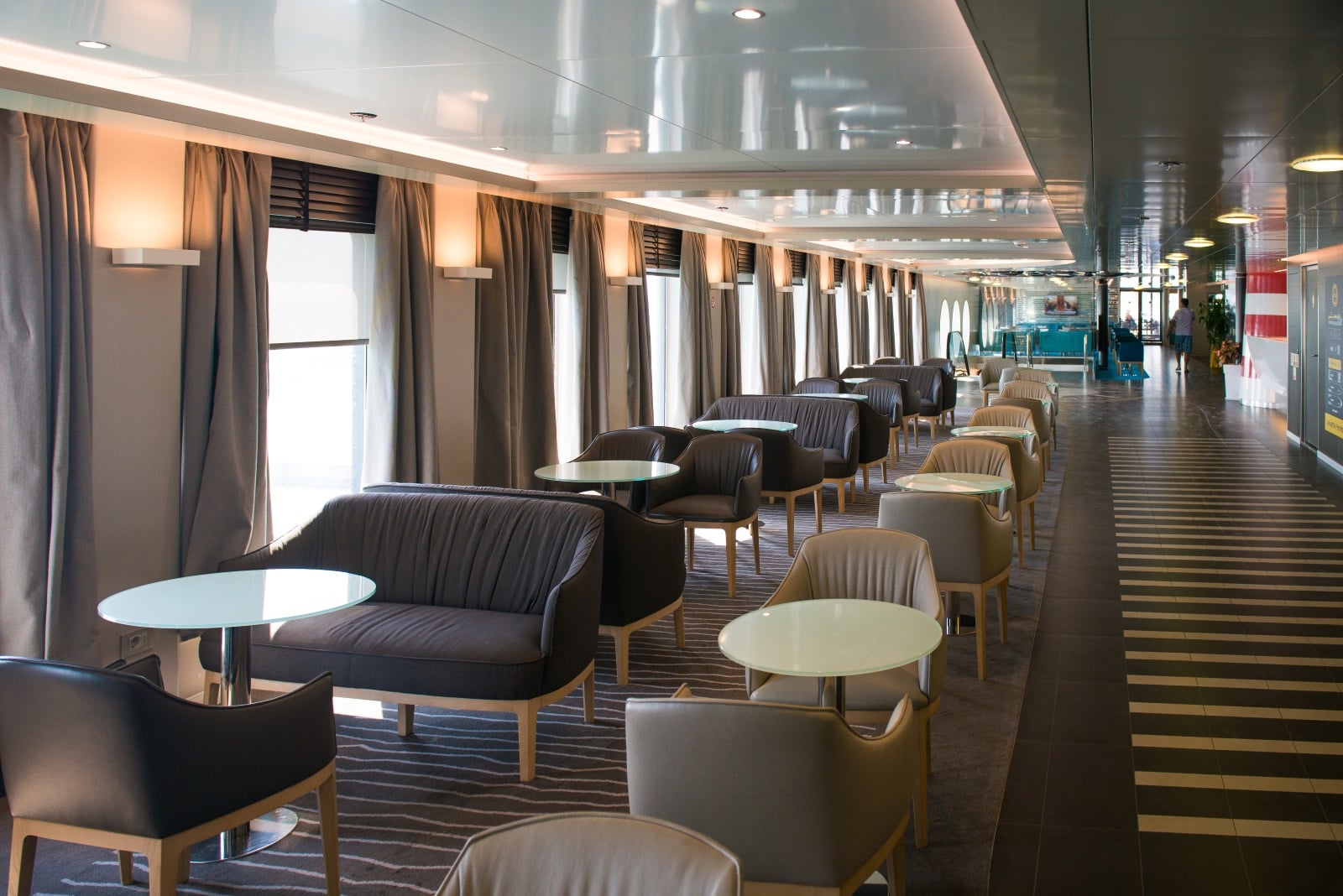
2. Onboard Sustainability Practices
Once aboard, the sustainability practices of the cruise ship come into play. Modern eco-friendly ships are equipped with energy-efficient technologies like LED lighting, solar panels, and advanced air conditioning systems. Many also offer educational programs about marine conservation and sustainable tourism. As a passenger, participating in these programs can enhance your understanding of the environment and how cruising impacts it.
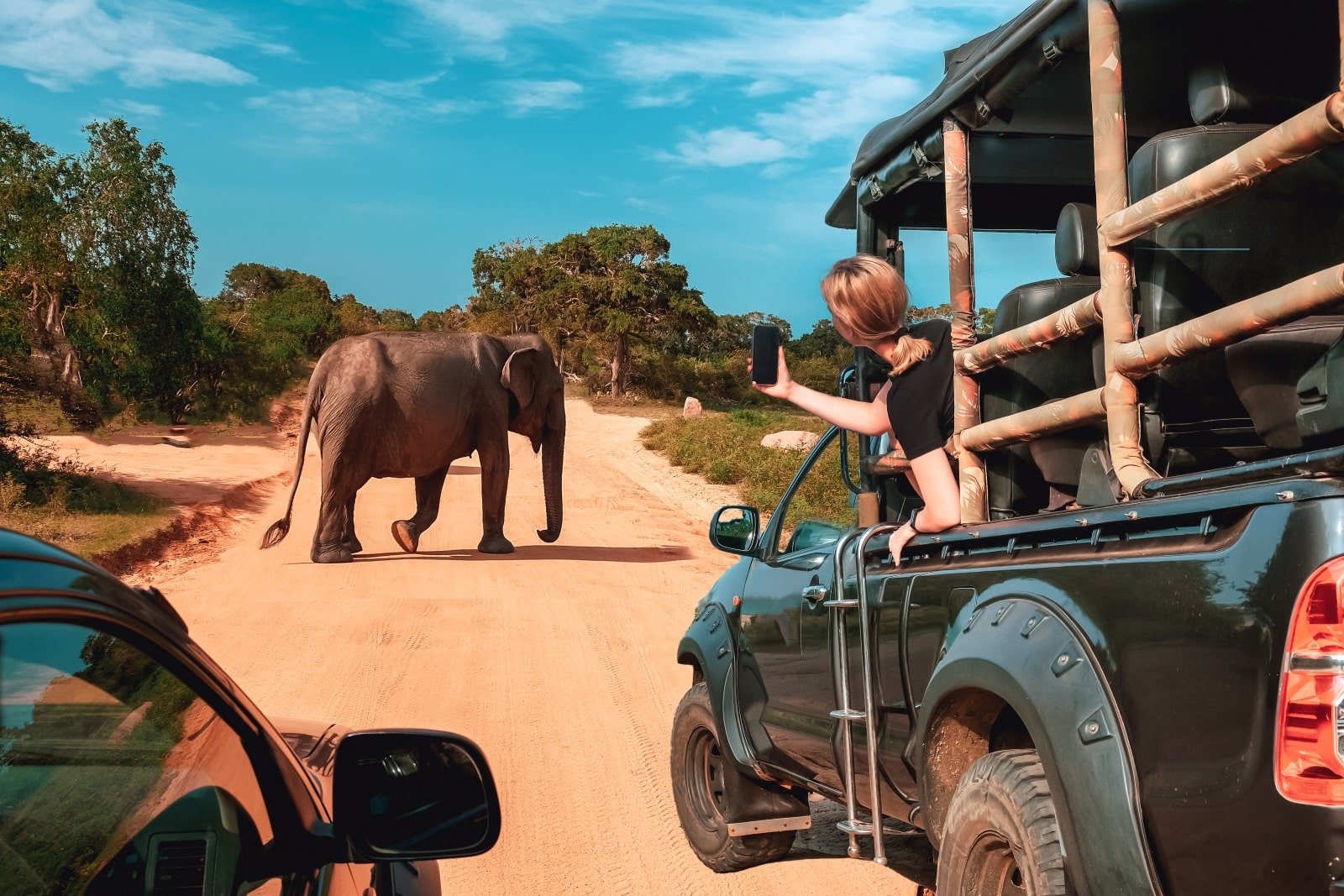
3. Responsible Shore Excursions
Eco-friendly cruising extends to the activities you choose on land. Opt for shore excursions emphasizing sustainability, such as wildlife tours with certified guides, visits to conservation areas, or cultural tours supporting local communities. Responsible tour operators ensure that your visit contributes positively to the environment and local economy.

4. Minimizing Your Onboard Footprint
As a cruiser, you can contribute to sustainability by minimizing your own footprint. Simple actions like reusing towels, turning off lights when not in use, and avoiding single-use plastics make a difference. Many eco-friendly cruises also offer options for recycling and composting, which you can participate in.
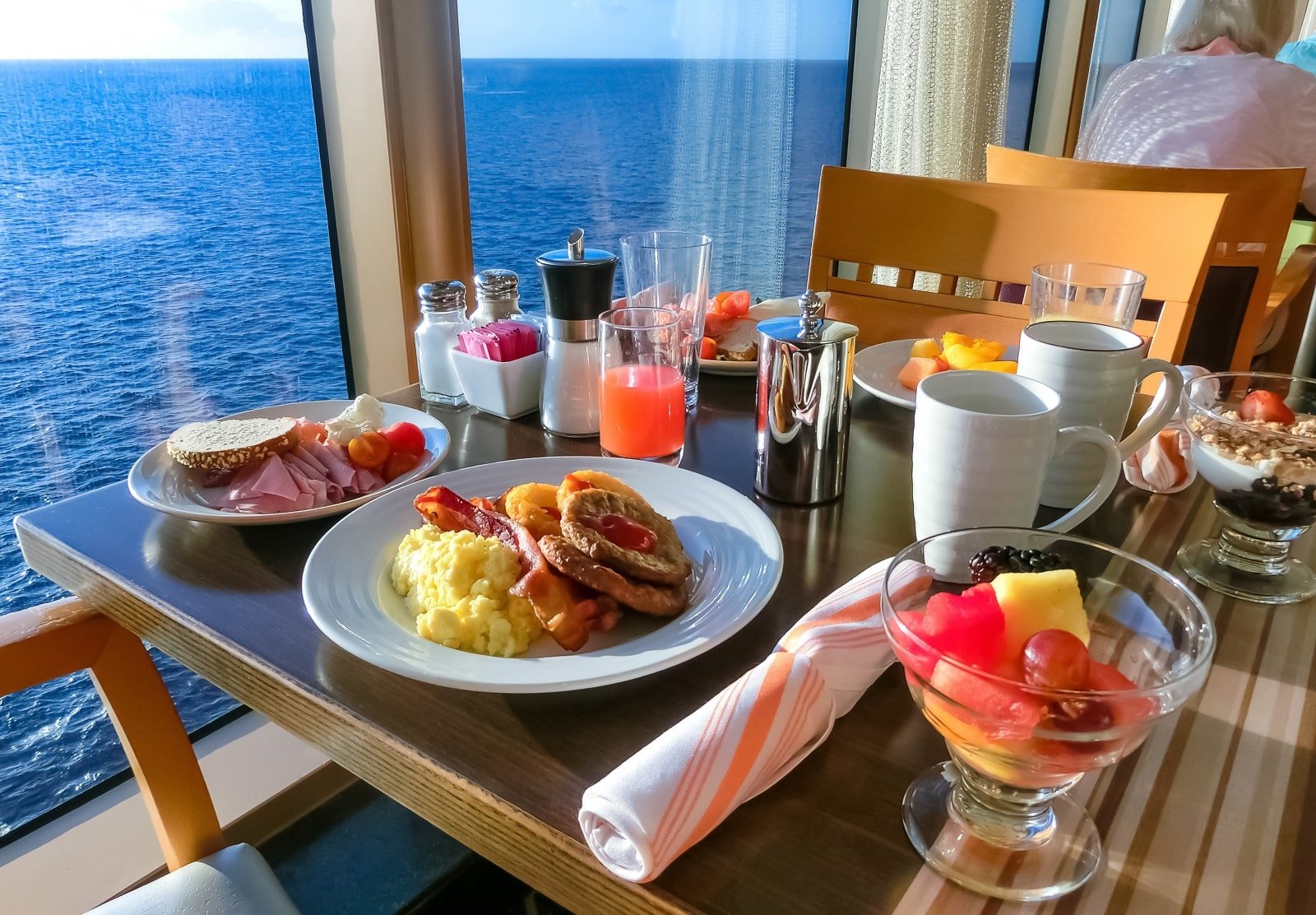
5. Sustainable Dining Options
Many cruise lines now offer sustainable dining options, featuring locally sourced and organic ingredients. These culinary choices provide a taste of the local cuisine, support sustainable agriculture, and reduce the carbon footprint associated with food transportation.

6. Supporting Conservation Efforts
Some cruise lines contribute to marine conservation efforts through direct initiatives or partnerships with environmental organizations. By choosing these cruises, your journey can help support vital research and conservation projects.
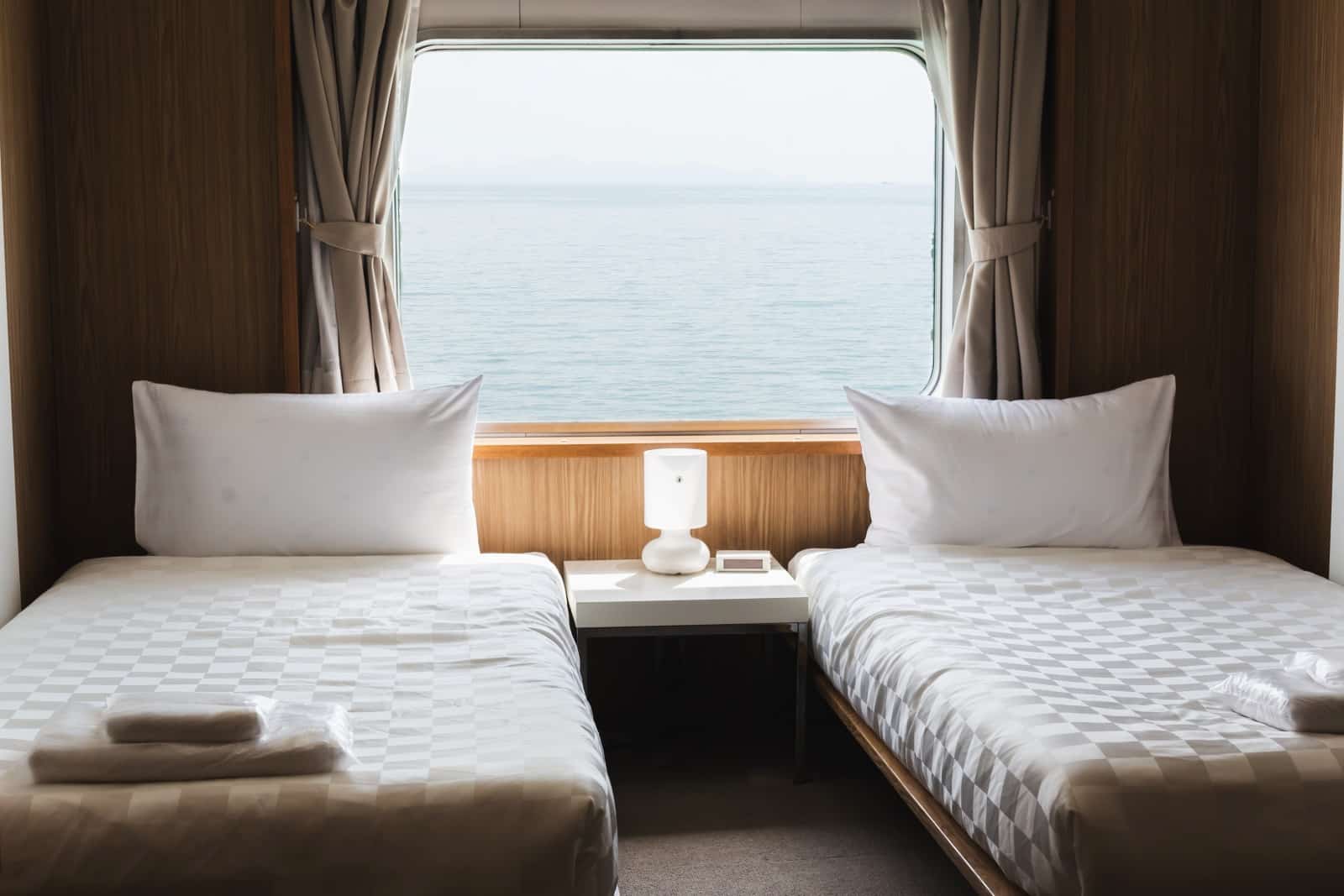
7. Eco-Friendly Cabin Choices
When booking your cruise, consider eco-friendly cabin options. Many newer ships offer cabins designed with sustainable materials and equipped with energy-saving features. Choosing these accommodations supports the industry’s move towards greener options.

8. Reducing Water Usage
Water conservation is a critical aspect of eco-friendly cruising. Modern cruise ships are equipped with advanced water treatment systems and practices to reduce water usage. Being mindful of your water use as a passenger contributes to these conservation efforts.

9. Participating in Environmental Programs
Many eco-friendly cruises offer environmental programs and workshops. These can range from lectures on marine ecosystems to beach clean-ups and citizen science projects. Participating in these activities enriches your cruise experience and contributes to a greater understanding and protection of the marine environment.
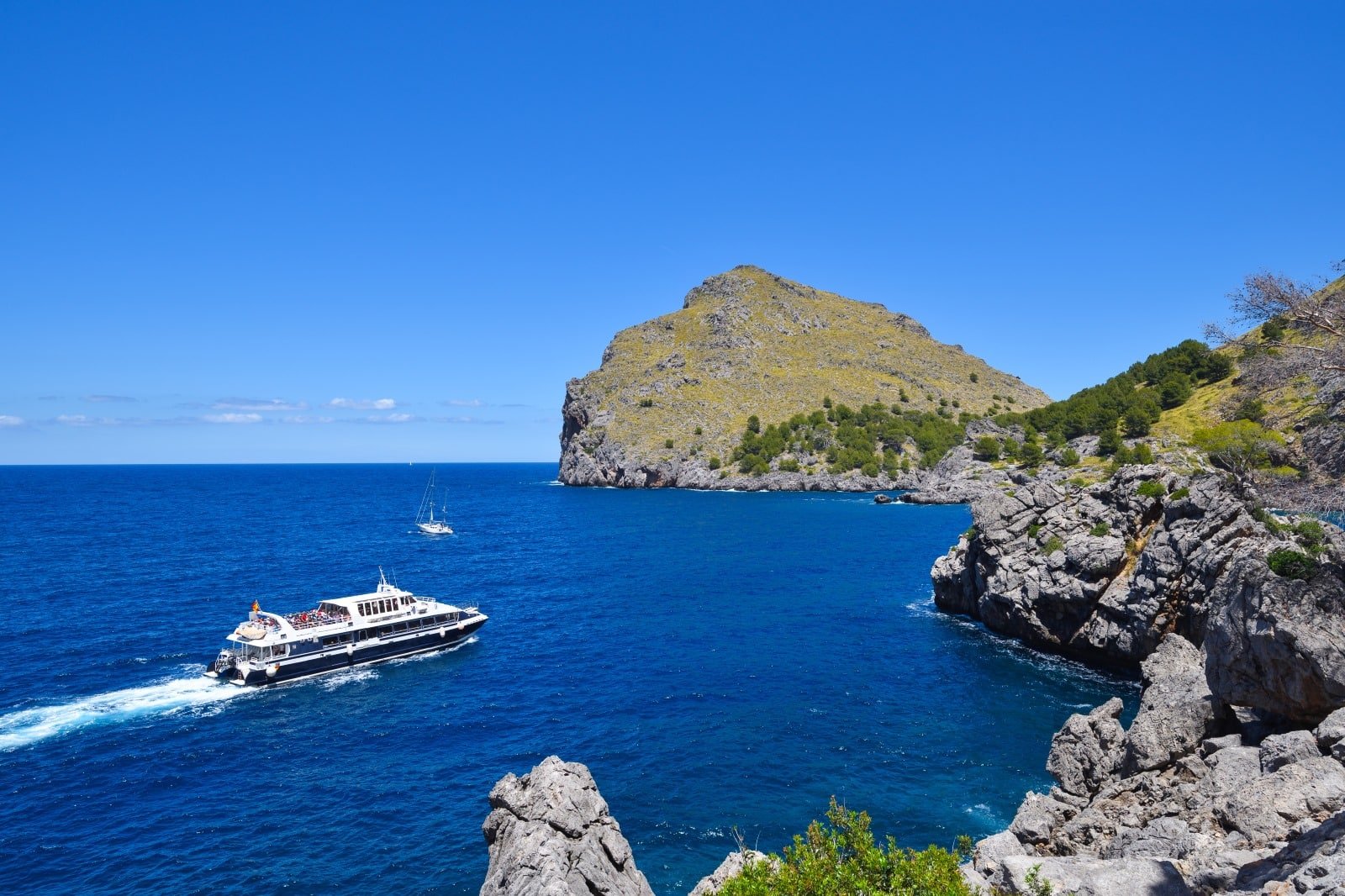
10. Choosing Smaller, Eco-Friendly Ships
Smaller cruise ships often have a lower environmental impact due to their size and passenger capacity. These vessels can also access smaller, less-visited ports, offering a more unique and intimate cruising experience while reducing the impact on popular tourist destinations.

The Bottom Line
As you contemplate your next cruise, remember that your choices can steer the industry towards a more sustainable future. By opting for eco-friendly options, from the cruise line to onshore activities, you preserve the oceans and the diverse life they sustain. Embrace the wave of sustainable cruising, and embark on a journey that satisfies your wanderlust and aligns with your commitment to the environment. The seas are calling for responsible exploration, and as a conscious traveler, you can make a positive impact. Set sail on an eco-friendly cruise, and enjoy the wonders of the ocean while contributing to its preservation. Your journey is more than just a vacation; it’s a step towards a sustainable future for our planet’s magnificent seas.
The post Top 10 Tips for Choosing Eco-Friendly Cruise Options first appeared on Pulse of Pride .
Featured Image Credit: Shutterstock / Zigres.
For transparency, this content was partly developed with AI assistance and carefully curated by an experienced editor to be informative and ensure accuracy.
More for You
Garfield by Jim Davis
Trump could face a $100 million tax bill after the IRS says he tried to write off the same losses twice on his Chicago skyscraper
Denver Nuggets change complexion of series with Game 3 demolition of Minnesota Timberwolves
US Housing Market To Be Upended This Summer: What To Know
Ranked, the 25 Greatest Tom Hanks Performances of All Time
Bankruptcy Looms for California Electric Vehicle Company Once Worth Billions
Peanuts by Charles Schulz
I Asked 5 Chefs to Name Their Favorite Mayo, and They All Chose the Same Brand
Iowa Gov. Kim Reynolds: This is unconscionable
3 New Required Minimum Distribution (RMD) Rules Retirees Need to Know About in 2024
The world's 9th biggest country is an undiscovered marvel with 'jaw-dropping' scenery
Kevin Durant Calls Michael And Deloris Jordan As GOATs After $10 Million Donation To Open Health Clinic
Fast food is expensive. Applebee’s and Chili’s are moving in
Don't Crush Your Metal Cans When You Recycle Them. Here's Why
Donald Trump Threatened With New Investigation
25 Must-See Teen Movies You Shouldn't Miss
Four RBs who could be the NFL's next breakout star
Young American Males Don’t Want a College Education and Here’s Why
The best thrillers to watch on Netflix this May
My partner is against marriage. I’m not on the deed to his home, but he set up a revocable trust in case he dies first. Is this risky?
- Bahasa Indonesia
- Slovenščina
- Science & Tech
- Russian Kitchen
Top 10 eco-friendly destinations in Russia
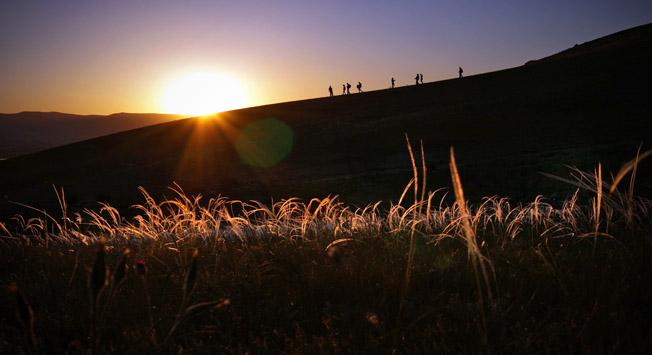
In Russia, there are many beautiful trails for ecotourists to tread. Source: Ruslan Shamukov / Itar-Tass
Nikola Lenivets, Kaluga Region
Nikola Lenivets is an art park and organic farm that regularly hosts architectural festivals, new media conferences, science events, electronic music parties and ecological workshops. Guests can camp and volunteer at the farm, but without having to leave showers or wi-fi behind. There is a hostel, a restaurant, a bar and cottages available to rent.
For more information on how to get there and where to stay check out nikola-lenivets.com
La Fattoria Little Italy, Tver Region
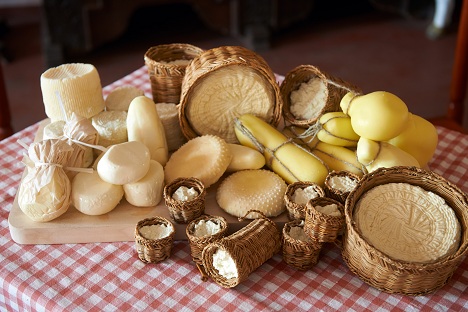
Source: ITAR-TASS
Cheesemaker and Italian native Pietro Mazza, welcomes visitors to his 40-acre farm where he keeps over 100 cows. The first part of the visit is the tasting room to sample the selection of cheeses produced on the farm. Of course this is all accompanied by a glass of Italian wine, and followed by lasagne or an Italian crepe! To work off the fine food, guests can spend a few days riding horses, milking the cows and helping with the cheese making process. Keep in mind that Pietro maintains farm hours so work begins at four in the morning!
For more information on how to get there and where to stay check out italianskaiaferma.ru (in Russian)
Bogdarnya, Vladimir Region

This farm is considered by its owners to be a promoter of healthy living, mixed with the best traditions of Russian rural life. Bogdarnya offers a wide range of activities including farm tours, food tasting, cookery classes, food processing workshops and training for restorative agriculture. The main idea is for guests to become immersed in and adapt to Russian village life. Visitors can stay in Bogdarnya’s hotel or have the option of going more “native” and staying in a picturesque cottage in a nearby village or accommodation in a reconstructed village school.
For more information on how to get there and where to stay check out bogdarnya.ru/en/
Sumarokovo Moose Farm, Kostroma Region

To get in touch with your inner moose, come to this experimental farm founded in the Soviet period on the outskirts of Kostroma. Today, there are several moose farms around Russia, although this is the Taj Mahal of them! Here the moose roam the grounds freely and produce milk and antler velvet. Guests can learn how to look after a moose and sup fresh moose’s milk at the farm’s bar. Camping is possible with prior permission from the farm, although there is no formal accommodation on the site.
For more information on how to get there and where to stay check out loseferma.ru (in Russian) and moosefarm.newmail.ru (English and Russian)
Olgino Horse Farm, Moscow Region

Source: RIA Novosti
Although horse riding is the main activity here, there are a wide range of other experiences on offer. There is a farm on site that supplies the food for its café which specializes in hearty peasant fare. Local lamb, goose, duck and rabbit meat are also available to buy for barbequing. Guests can relax in the sauna, rent a bicycle, go swimming or fishing, with skiing and horse-drawn sleigh riding available in the winter.
For more information on how to get there and where to stay check out olgino-tur.ru
Russkinskaya Reindeer village, Khanty-Mansi Autonomous Region

Source: Getty Images/Photobank
In the village located out on the tundra 130 km from Surgut, visitors can feed reindeer at a special farm, go canoeing, fishing and hunting. One of the village’s main attractions is the Museum of Natural History, which features exhibits on local wildlife and the indigenous population, who make up over half of the local population. Russkinskaya tries to maintain its traditions through song, dance, food and handicrafts all of which can be had in abundance here.
For more information on how to get there and where to stay check out russadm.ru/in/md/main (in Russian)
Avanpost Ranch, Moscow region

Source: Lori/Legion-Media
Role playing is one of the ranch’s main attractions and many come to dress up and enact fantasies such as being a cowboy in the Wild West or a noble out on the hunt with hounds leading the way. Private parties can be arranged that include an MC called Sheriff, country music and line dancing.
For more information on how to get there and where to stay check out bezpovoda.ru (in Russian)
Primorsky Safari Park, Primorsky Region

Source: Yury Smityuk / Itar-Tass
In this wildlife sanctuary, animals roam the grounds of the park as if in the natural habitat. The animals are separated into four areas with tigers, hoofed mammals, birds and carnivorous animals occupying separate parts. The park is also populated by Himalayan black bears and Amur tigers, as well as foxes, red wolves, badgers, wild boar, goats and birds. Visitors will be able to get great views of the tigers from a bridge and get up close with many of the smaller animals. The sanctuary acts as a rehabilitation centre and promotes knowledge about the environment.
For more information on how to get there and where to stay check out safaripark25.ru (in Russian)
Dog sledding in Kamchatka, Kamchatka Region

This excursion promises to turn you into a dog ‘musher’ (or in laymen’s terms, a sled dog team driver) by the end of your tour. With jaunts ranging from half a day to a full day, the ride will take you through beautiful scenery on the outskirts of the regional capital and past the peaks of three volcanoes: Avachinsky, Koriaksky and Kozelsky. Upon return to the lodge a picnic awaits! Skiing is also available.
For more information on how to get there and where to stay check out kamchatkahuskies.com
Lake Baikal, Irkutsk Region and Buryat Republic
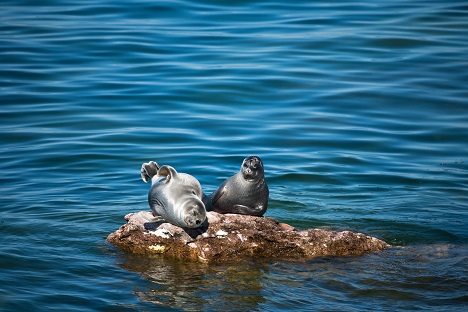
The bracing winds which blow off the world’s oldest and deepest fresh water lake, Baikal, will revive any weary traveller. Many visitors come to see the Baikal seal, one of only three freshwater seals in the world. Scientists are baffled as to how these seals made it so far from the ocean. Another option for visitors is to volunteer with the Great Baikal Trail organisation, whose goal is to build and restore a trail that will circumnavigate the whole Lake. In addition to building the trail, other projects include creating park space for preservation and the restoration of an old watermill.
For more information on how to get there and where to stay check out greatbaikaltrail.org
All rights reserved by Rossiyskaya Gazeta.
to our newsletter!
Get the week's best stories straight to your inbox
This website uses cookies. Click here to find out more.

Eco-friendly travel guide to Moscow advises how to be a responsible tourist. Learn how to explore the attractions in a sustainable way and how to respect the local people and culture. Make your trip green by supporting locally owned hotels, organic restaurants and other businesses. Read more on how to protect the environment by making conscientious choices and how to travel green in Moscow , Russia .

- Air quality : 3.5 / 5
- Exploring by foot : 3 / 5
- Exploring by bicycle : 3.5 / 5
- Public transportation : 4 / 5
- Parks : 4 / 5
- Outdoor activities : 4.5 / 5
- Locals' English level : 3.5 / 5
- Safety : 4 / 5
- Accommodation : US$50 - $550
- Budget per day : US$30 - $500
- 1 Responsible Travel
- 2 Air Quality and Pollution
- 3 Respect the Culture
- 4 Top 10 Places to Visit
- 5.1 City Parks
- 5.2 National Parks
- 5.3 Beaches
- 5.4 Landmarks
- 5.5 Museums
- 6.1 Traditional Local Restaurants
- 6.2 Vegetarian and Vegan
- 6.3 Street Food
- 7.1 Tap-water
- 7.2 Organic Cafés
- 7.3 Breweries
- 8.1 Yoga and Retreats
- 9.1 Green Hotels
- 9.2 Hostels and Guest Houses
- 9.3 Apartments
- 9.4 Couchsurfing
- 9.5 Camping
- 10.4 Hitchhiking
- 10.5 Others
- 11.2 Bicycle
- 11.3 Electronic Vehicles
- 11.4 Public Bus
- 11.5 Tram, Train and Subway
- 12.1 Food Markets
- 12.2 Flea Markets
- 12.3 Second Hand Stores
- 12.4 Eco-Fashion
- 14.1 Exchange Student
- 14.2 Au Pair
- 14.3 Volunteering
- 15 See Also
Responsible Travel
Moscow is the capital of Russia. As a result of that, you will find many foreigners going in and out of there every period. Being a tourist in today's world comes with its own set of responsibilities and obligations. The change climate of the planet urges us to be more responsible and take accountability for our actions and also study the impact we have on the environment. One must travel in an eco friendly way and ensure that the local citizens or the natural surroundings are not affected. These are some of the most crucial tips that vacationers must follow to travel responsibly.
- Choose green hotels over other accommodation options and if you cannot find a green hotel of your choice then opt for an apartment or hostel. This is because most of the five star hotels and resorts create tonnes of waste every day including 79,000 tonnes of food waste (9% total food waste from the sector) and they do not adhere to sustainable business practices. If you choose to stay in an apartment you can work on your carbon footprint and decide on things like using no plastic, minimum waste etc. This will not only help with reducing your carbon footprint but massively help help with improving the environment.
- Eat Local food and buy the food from street food stalls or small restaurants. This is because most of the big restaurant chains or fast food conglomerates are guilty of producing so much waste and directly contributing the problem of pollution and climate change due to their harmful business models. Not only do the small business owners need the help of tourists to run their business and provide for their family but they also have ethical practices for example most of them do not use plastic.
- Use local transportation or electronic vehicles to keep the city pollution-free and save a lot of money at the same time.
- Shop local . In order to support local craftsmen and artisans always shop local. During your trip to the city, you will come across small shops and food stalls in almost every lane of the city. If you want to have an unforgettable experience in the city, then buy goods and handicrafts from these shops. This will not only help you to save a lot of money but you will be supporting a lot of local people who are dependent on their small businesses to earn a livelihood
Air Quality and Pollution
There are a lot of things that pollute the atmosphere of Moscow. Out of all those things, traffic is the biggest . More than 80% of all emissions into the atmosphere is from traffic. Even though those emissions are quite harmful, there is no cause for alarm.
The weather condition has helped to reduce the effect of the emissions on Russian and foreigners living in Russia. However, you can play a part in helping to reduce air pollution in Russia . Make sure your car and other things that emit smoke are in good condition. Sometimes, machines only need good engine oil to stop producing smoke .
As of now, the government is trying everything to make sure air pollution reduces. Since factories contribute to air pollution, Russian engineers are working on new machines that will produce less smoke. As of now, the weather condition in Russia is still stable. So air pollution shouldn’t be something that will stop you from going there.
Respect the Culture
It is easy to adapt to the culture and traditions in Moscow. You just have to be willing to learn new things . Russians greet by shaking hands. In some cases, people of different sexes greet each other by kissing. You should only do that with someone that you know well. Eye contacts are important when greeting. They see it as a sign of respect. So you should stare at the person that you’re greeting.
Russians dress like responsible people. Since adults go to work on weekdays, they dress corporately. To avoid looking strange, you should try and fit in with their style. You can wear a trouser and a long-sleeve t-shirt on weekdays. If you like, you can even wear a tie. On weekends, Russians dress casually. You can wear neat jeans and a shirt . You can also dress differently. You just have to avoid stepping out like a thug.
Top 10 Places to Visit
- Hermitage Museum : It is one of the largest museums in the world. Everything there is all about arts
- Peterhof Palace : Details of a battle Russia won in the past are documented here. It is a place of historical importance.
- Kolomenskoye : It is one of the oldest estates in Moscow and the whole of Russia. Recently, it was changed to a Museum.
- Kremlin Armoury : Russian historical items from as early as 1851 are displayed here.
- Moskvarium : A lot of Russian Aquariums are in full display here. It was established about one decade ago. The number of species there are estimated to be around 8500.
- Diamond Fund : If you want to know what a real diamond looks like, you should visit the Diamond Fund
- Ostankino Tower : it is one of the tallest buildings in the world. If you want to get a nice view of Moscow, you should go there. You can even take nice pictures there.
- VDNKh : From palaces to pavilions, you will see a lot of things here. It is a place of great historical importance.
- Moscow Kremlin : You must have heard tales of the great River Moskva. You will get a nice view of the river here.
- Saint Basil’s Cathedral : It is an old Christian church. Before leaving Moscow, you have to go there. It is one of the most exciting places in the city.

No matter how short you plan to stay in Moscow, you should create time to explore the city. From history to mystery, there are a lot of things you’re going to learn from visiting the tourist attractions in Moscow. If you’re not planning to stay long, you can decide to visit a few places. To have a nice time, you should only go to places where they do things that you like.
For instance, if you love history, you shouldn’t think twice before going to a Museum. As we go further, you will learn more about interesting places to explore in Moscow.
- Gorky Park : If you want to relax and enjoy fresh here, you should visit Gorky Park.
- Hermitage Garden : You can chill and meet new people here. There are also DJ’s there. So you will enjoy Russian music.
- Tagansky Park : Unlike in other places, kids can have fun here. There are a lot of exciting toys there.
- Yekaterininsky Park : From libraries to ponds, almost everything is available. No matter what your taste is, there is a chance that you will see something that you like.
- Novodevichy Ponds : You will get a nice view of beautiful Russian ducks.
- Zaryadye Park : It is the perfect place to chill and have fun. Zaryadye is full of beautiful plants and trees.
- Bauman Garden : Different sporting activities are held here weekly. From football to basketball, you can go there if you like any kind of sport.
- The Apothecaries’ Garden : It is one of the most popular botanical gardens in Moscow and the whole of Russia.
- Morozovsky Garden : it is the perfect place to relax and think. You will hardly see any place that is as quiet as Morozovsky Garden in Moscow
- Trubetskiye Garden : It is a popular playground in Moscow. If you want to make new friends, you should create time to go there.

National Parks
- MGU Botanic Garden : It is not always open. Before you go there, you have to check their time-table. You can do that by visiting their official website. Some people will guide and educate you about all the flowers, trees, and plants in the botanical garden.
- Losiny Ostrov National Park : It is the largest forest in Moscow and one of the largest in the whole of Russia. From elks to reptiles, there are a lot of animals you’re going to see there
- Prirodny Zakaznik Zhulebinskiy : Unlike other parks, Prirodny Zakaznik Zhulebinskiy is more of a modern wildlife park. With a little fee, you can take a walk through the structures.

- Troparyovo : If you’re searching for the right place to learn swimming, you should visit Troparyovo. Even though it is small, a lot of locals like going there. Apart from swimming, there are a lot of other adventurous things you can do at the lake. You can play different kinds of sport, browse unlimited with the Wi-Fi and even rent bicycles.
- Rublyovo Beach : From wakeboarding to parties, many activities are performed at Rublyovo beach every day. On weekends, they host beach parties there. Since the river is clean, you can swim and have fun inside.
- Bolshoi Gorodskoi Prud : Unlike other beaches, you don’t need to pay an entry fee here. You can also play several games there. Some of the games are air hockey, volleyball, and likes. If you can use a boat, you will explore the pond to know its end.
- Central Moscow Hippodrome : It was established about 200 years ago. No matter when you are free, you can also go to explore Central Moscow Hippodrome. During summer, horse race competition is conducted there. There are a lot of seats for spectators. So you’re going to watch and enjoy every bit of the competition.
- Monument of the Conquerors of Space : Russia has achieved a lot in Space travel. You will get to read and view everything about their Space travel history here.
- Palace of Tsar Alexei Mikhailovich : If you want to know how Russian royal families lived in the past, you should go there. The majority of the structures are still in good condition.

- State Tretyakov Gallery : The portrait of great Russian men is displayed here. From great politicians to scientists, you will see every there. With a small entry fee, you will be allowed to enter. Since Tretyakov is big, an instructor would guide you through the place. If you’re a foreigner who is finding out information about old things in Russia, you should also go there.
- WinZavod : Wines and other drinks were produced here originally. Recently, they have started using it for art. You can also go there to watch the latest movies. There is a big cinema inside.
- Flacon Design Factory : Everything here is all about creativity. If you want to invent a new thing, you can go there to search for similar inventions. From science to art, there are inventions of almost every field there.
- Garage Museum of Contemporary Art : Although the modern facilities used here doesn’t make it look like a traditional museum, it contains a lot of artifacts.
- State Guleg Museum : The artifacts here can be used to explain how Russia transformed over the years. You will also learn about recent inventions that were crafted from the old ones.
Since they’ve banned the importation of foodstuffs, the local restaurants in Moscow have stepped up . Apart from mastering how to prepare basic Russian foods, Russian chefs have been able to combine different ingredients to produce new meals. The weather determines what the majority of people eat in Moscow. For instance, the majority of people eat meals made from vegetables during the winter. Since most Russians go to their workplace in the morning, they take breakfast to have energy.
Another name for breakfast in Moscow is Zavtrak. The breakfast options available in the city are buckwheat, semolina pancakes, bread, and the likes. Russians also love to take Appetizers. The majority of them take it in the afternoon. Some of the appetizers available in the city are cavier, beluga sturgeon, and Olivier salad . In their language, they refer to appetizers as Zakuski. With soups, you can take your Russian meal in different ways. Soups such as beetroot and solyanka are in high demand there.
Traditional Local Restaurants
- Chestnaya Kukhnya : The chairs here are arranged in a family-style. So you can go there with your loved ones. You won’t only be given a menu; you will also be allowed to select any combination of ingredients that you want. After ordering, you would be served in a short time.
- Varvara Café : It is known for its beautiful interior. From morning till evening, delicious Russian meals are served here. The kitchen is an open one. So you will see that your food is prepared in a clean place.
- Matryoshka : From baked vegetables to mushrooms, almost all the traditional Russian meals are offered here. You can also go there for bland food. Mini-pies, doughnuts, and other snacks are always available there.
- Mushrooms : Mushrooms with different options are available here. You can combine mushrooms with any other Russian meal that you like. Desserts are also sold there.
- Oblomov : The price of pickles and other Russian meals here are a little bit high. If you can afford the meals, you will enjoy the value of your money.
Vegetarian and Vegan
- Jagannath: It is one of the oldest vegetarians in Moscow. Jagannath serves as a vegetarian and a restaurant. Even though they sell a lot of dishes, they specialize in vegetables. If you do heavy work, you should visit the place often. Jagannath vegetables will give you enough energy to work for hours.
- Fruits & Veges: It is quite small in size. A meal such as hummus and different soups are served there. The meals there are also easily affordable.
- Sok: If you’re a foreigner, there is a chance that you will be able to eat local food from your country here. They specialize in preparing Italian, Indian and Russian dishes.
- Moscow-Delhi: You can eat here for as low as $17 and as high as $30. It depends on what you want.
- Veganutye: If you love Pizza, you should visit Vegenutye frequently. You can purchase Pizza for as low as $5.
Street Food
Wherever you are in the city, you will notice kiosks of different colors and people around them. The majority of those kiosks sell fast food. Some of the foods are listed below
- Cheburek : The Cheburek’s great taste has made it a favorite among locals and foreigners in Moscow. It is prepared by frying dough, meat, and other ingredients together. If you’re eating it hot, you should bite carefully. The oil in your Cheburek might just squirt and stain you.
- Baked potato : Since there are various types, you will find one that you like. Some are made with butter and cheese, while the others are made with mushrooms and salmon.
- Doughnuts : Russian doughnuts are a little bit different from American doughnuts. It is called Ponchiki. Just like Cheburek, doughnuts are made by frying. The majority of them are made to have a ball shape. Since it is a popular snack, you will find it in almost every street kiosk.
From alcoholic to non-alcoholic drinks, you have a lot of options in Moscow. If you love alcoholic drinks, you can go for Vodka. Don’t drink too much. If you get drunk, you might start to misbehave. If you want a drink with little alcohol, you can go for Kvas. The percentage of alcohol in the drink is around 0.5%. So you can drink much without getting drunk. Since it is produced in Moscow, it goes for a low price.
If you’re in a restaurant, you can ask the staff to serve you. If you want the packaged one, you should visit the nearest shopping mall or supermarket. Another popular drink in Moscow is Mors. Just like Kvas, the percentage of alcohol in Mors is just about 1%. It is more of a juice made from natural Russian fruits. In case you find it difficult to get a drink for your children, you can serve them Mors.
Russians use Sodium hypochlorite to treat their water. So it is safe. You can drink and use it for other things. Some bodies monitor the quality of tap-water in Moscow. The most popular one of them is Mosvodokanal. Mosvodokanal often tests the tap water in Moscow. They close all the ones that don’t meet their requirement. So only the safe ones are left for the public to use.
The ground and surface water are used to supply all the taps in Moscow. Those two originate from three different sources. The three sources are Moskva, Vazuskoye, and Volga river. Out of all the three, Moskva supplies the highest percentage of tap water in the city. It is estimated to supply about 60%. The Volga supplies the remaining 40%.
In case the tap water gets contaminated, Vazuskoye is used. Unlike the other two, Vazuskoye is more of a reserve. Even though the tap water in Moscow is safe to drink, it is better to use bottled water . You can always use the tap water to brush your teeth and do other things.
Organic Cafés
- Gorod-Sad : All the ingredients used in preparing the meal here is natural. So it is a good choice if you’re considering your health. Even though natural ingredients are used, meals at Gorod-Sad still have a great test. It even tastes better meals from other cafes in Moscow. For as low as $2.6., you can have a great breakfast there.
- Latuk : it is a high-class café. Before entry, you must have booked a space. They serve different meals in different seasons. During winter, their menu consists of meals that will keep you warm. Latuk’s menu includes porridge, solyanka, cake, and other great meals.
- Receptor : With an amount of $15, you will eat any meal you want here. Some of the meals are burgers, noodles, and chicken.
- Voronezh : it is known for its delicious fish and vegetable salads. Other Russian meals are served there as well.
- LavkaLavka : The ingredients used in preparing meals in LavkaLavka are made from small farms. So it is safe for everyone.
- Rants & Raves Brewery : It is always opened by 11 am and closed by 11 pm. They work on all weekdays. On Sundays, Rants and Raves Brewery is closed by 9 pm. They don’t only sell beers; delicious Russian meals are also available there. If the place is far from you, you can order any of their beers online. It would be delivered to you.
- The Moscow Brewing Company : It is the first brewery in Moscow. It is always opened by 4 pm and closed by 8 pm. Apart from Sunday, they work on all other weekdays. Since it is a local brewery, they specialize in producing Russian drinks. If you go there, you will be served on time. You will also have a lot of options. They produce beers in different flavors. Even though the place is not big, there is a DJ there. The DJ plays local Russian music.
When you’re less busy, there are a lot of fun activities that you can do in Moscow. There are a lot of lakes in the city. So you can always go fishing. You have to know that entry fees are paid to access the majority of those lakes. The atmosphere is also cool the majority of the time. So you can plug in your earpiece and walk around your street. If you have an interest in history, you can take lectures on Russian culture.
Since the majority of their restaurants sell traditional Russian meals, you’re going to enjoy them when you’re there. There are also a lot of tourist attractions in the city. Some of them are Armoury Chamber, Patriarch’s palace, and the likes. In case you’re into music, you will enjoy the different musical shows held in the city. Different local and international musicians perform there regularly. If you’re an upcoming musician, you can even get a chance to perform in a concert.
Yoga and Retreats
If you love yoga or any other related exercise, you will get the chance to practice here. Some of the popular places to practice yoga are listed below
- Ashtanga : People often see yoga as a means of relaxing. Ashtanga is not about that. Even though yoga practice is a little bit exhausting, it is effective. Ashtanga has two branches in the city. So no matter where you’re based, one of those branches would be easy for you to access.
- Yoga 108 : Standard yoga is practiced here. It is aimed at building the strength of its students. The students there are taught in the Russian language. You will attend an average of eight classes in a month.
- Bikram Yoga MSK : You should only go here if you’re not new to yoga. The majority of their classes last an average of 90 minutes. So that it will easy for international students; some of their classes are taught in English.
Accommodation
You need a good accommodation to have a nice time in the city . So you’ve to choose well. When choosing the right one, you have to consider the price. You don’t want to spend half of all the money you brought on accommodation. There are almost all kinds of accommodations in Moscow. The one you will stay depends on the amount you’re willing to spend. You will have to choose between a hotel, a hostel, or an apartment. There are great local hotels in town. Some of them are listed below.
Local hotels are the best for people who want to stay alone. On the other hand, you should consider an apartment if you want to stay with your family or friends. If you’re going to stay long, getting an apartment is also the right choice for you. If you’re in Moscow to study, you should get a hostel. When compared with the other two options, hostels are the cheapest. You can even share rooms, kitchens, bathrooms, and almost every other thing.
Green Hotels
Moscow is popular for its exciting tourist attractions. So you will find foreigners from different parts of the world there. So that foreigners will find it easy to settle in the city, green hotels were established. Green hotels don’t only help foreigners to adapt; they also contribute to the economic development of the city. To help make Moscow a better place, you should book only green hotels. Some of them are listed below
- Radisson blu hotel : From the local staff to local food, everything here is done to introduce foreigners to the lifestyle in Moscow. All the rooms have Wi-Fi and televisions. So you’re going to have a nice time there.
- Park Inn : The activities here contribute a lot to making Moscow a better place. Almost everything sold there is locally made. They also serve local breakfast meals to foreigners.
- Hotel Metropol : When it was established, it competed with the great international hotels in Moscow. They employ only well-trained staff that are willing to guide foreign men on how to cope in the city.
Hostels and Guest Houses
- Netizen Moscow Rimskaya : You won’t only sleep comfortably here, there are facilities in place to ensure that you have a nice time. There are restaurants, cafes, and likes inside. You don’t have to bring many things when you want to enter. There are clean towels and shelves inside. It is also recommended for students. There are good reading lamps there. So you can stay awake and study all night.
- Capsule Hotel Botanist : The rooms here are wide and neat. Since you’re ready to pay, you can continue staying in a room as long as you like. If you also want to switch rooms, you would be allowed. During the weekend, you can scroll through the beautiful botanical garden at the back of the hotel. It is also a nice place to take dope pictures.
- Urban Jedi Hostel : Up to 2 people can sleep comfortably in the private room here. If you are more than that, you can book a shared room. The shared room can contain up to 6 people comfortably. It is one of the best hostels for foreigners in Moscow. As you begin to explore the city, the staff here would educate you on the dos and don’ts in Moscow.
If you live in an eco-friendly apartment, you will enjoy the comfort, social, and health benefits. In general, the quality of living in an eco-friendly environment is too obvious to be ignored. In Moscow, almost all local apartments were built with good materials. Good window materials are used. So you will have good ventilation. There is also Wi-Fi in almost all local apartments in Moscow. So you will enjoy the fast internet.
Even though all local apartments in Moscow are great, you will still have to choose one. That is why you’ve to access any apartment you want and check it yourself. All you have to do is meet the landlord. Inform him if he needs to make replacements in the apartment. Since the utility bills of local apartments are shared, you are not going to pay much. Airbnb is also popular in the city. You can visit their site and do researches about the available apartments in Moscow.
Couchsurfing
Moscow is a lovely place to visit . The majority of Russians love to mingle with foreign men. So they are quite accommodating. If you read through history books, you would have learned a lot from Moscow and the rest of Russia. A lot of beautiful inventions have been made there. They contribute a lot to modern technology.
Couchsurfing is quite easy in Moscow. A lot of lonely people don’t mind accommodating Russians for a particular period. All you have to do is search online. You should have made your findings before leaving your home country.
When you meet a host online, you should start interacting with him/her. So you would be familiar by the time you get to Moscow. You won’t find it difficult to get hosts. Couchsurfing is popular among people that are from developing or less-developing countries. Since some of them can afford to rent an apartment when they reach Moscow, they search for hosts that can accommodate them.
- Sokolniki Camping : A lot of people do camp here every time. So you won’t feel lonely. It is also close to where you can take a taxi. So you can find it easy to access the city. Since the Wi-Fi is in good condition, you are going to enjoy stable internet access. Since showers are not much there, you might have to wait for a while before taking your bath.
- Moscow Escape Aviapark Glamping: The staff here makes it easy for foreigners to settle there. Some cleaners ensure that the place is always clean. There is a swimming pool there. The pool is not deep. So newbies can learn how to swim there. There is even a space for parking cars.
- Camping Yamskaya Sloboda : It is close to almost all the exciting places in Moscow. So you won’t have to move far before exploring. Breakfasts are always served there. Unlike other places, they prepare a lot of Russian meals for breakfast. So you would be able to choose anyone you like.
How to Get There
It is not difficult to visit Moscow. It just depends on your home country. If you’re in a close country, you are not going to spend much. On the other hand, you will spend much if you’re coming from a far country . If you’re from a developed nation, you will find it easy to access Russia. You just have to pay for your ticket fee.
On the other hand, you might find it difficult to enter Russia if you’re from a less developed nation. The country is trying to control its population. So they only accept people that are going there for genuine reasons. Another reason they are careful about immigrants is because of security. All immigrants are properly scanned before they are allowed to enter.
International students contribute a lot to Russia. So they are always open to accepting students. If you meet all their requirements, you will find it easy to study there. You can enter Russia through air, bus, or train. It depends on how far it is to you.
The international airports in Moscow are in good condition. Their planes are also safe and easy to travel. They have embassies in almost all countries. So you can visit the one in your country. Before booking a flight to Moscow, you have to visit different websites and figure out where you’re going to get the best deal.
If you’re going to book a flight in advance, your fair is not going to be expensive. On the other hand, you might have to spend much. There are a lot of good airlines in Russia. Even though they offer the same thing, some of them operate in different ways. The most popular ones are Aeroflot, S7, and Rossiya. Immediately after you reach Moscow, you will find public transport buses that can take you to anywhere you’re going to in the city.

The new e-buses in Moscow work from morning till evening. Since e-buses are far better than regular buses we used to know, Moscow is trying to change to it completely. E-buses contributes to better air quality in Moscow and the rest of Russia. Unlike the regular buses, e-buses doesn’t discharge emissions.
E-buses are also easier to maintain than regular ones. An estimate shows that the cost of maintaining an e-bus is about 15% lesser than the regular bus. As early as 4:00 am, e-buses have started working. So you can get to any place you’re going early. Some of those buses work till mid-night. The majority of the e-buses in Moscow have 30 seats . About 83 people can sit inside them comfortably. The noise is also less. So it is comfortable to travel with one.
It is quite comfortable to travel to Moscow by train. Since it can be used to access anywhere in Russia, some people prefer it to all other means. Since some travels can take about a week, you have to pack in all the necessary things that you need. Even when a train stops, it doesn’t take more than 15 minutes before it continues moving. Whenever you’re traveling by train, make sure you get every necessary information. Know your timetable and departure times.
Since about 40 minutes are given to passengers to board, make sure you arrive there on time. If you want to rest, you’re going to pay for a bed. Unfortunately, your bedding fee isn’t included in the ticket fee. So you will have to pay around $4. It depends on the train that is carrying you. Even though it is safe to travel by train in Moscow, you have to be smart . Don’t trust anyone with your belongings. Make sure that your things are always with you.
Hitchhiking
If you sight any car moving to Moscow, you can politely stop the driver and ask him to take you there. In some cases, the driver would ask you for a small amount of money. If you are not ready to pay, you can reject his order and search for other drivers. Even though you’re going to see someone that will take you for free, it might take you long.
You can easily hitchhike at a gas station. A lot of drivers do leave there regularly. You can also hitch at places where trucks stop. Some truck drivers stop driving to rest. If you’re lucky enough to meet one, you can ask him for a lift. It is safe to hitchhike to Moscow. You just have to be smart. If you’re a woman, you should go with a man.
You can reach Moscow by car. That is only possible if you live in a neighboring city. Unlike trains and buses, you don’t need any processing to do that. You can even drive your car by yourself. Just make sure it is in good condition. You should ask her a mechanic to test your car before you start driving. You should also have an extra tire. You should fix it if any of your tires run flat.
To travel safely, don’t move at night. Since the road is less busy at night, a lot of people drive at high speeds. You will be surprised that some of those drivers don’t even have functioning lights. Make sure you have enough petrol in your fuel tank. You shouldn’t exceed the speed limit. Every city and road in Moscow has a speed limit. Only experienced drivers should drive while traveling. If you’re still new to driving, you should hire a driver. Your travel would be safe and faster.
Moving Around
As a foreigner, you can go wherever you like in Moscow. Just make sure that you avoid conflicts by all means. At night, you can just plug in your earpiece and explore the city. You have to be careful. Entry fees are paid to enter some places. So make sure you avoid them if you’re not ready to pay.
The mode of transport that you will use depends on where you’re going. You can trek, ride bicycles, cars, and buses. You can even use a plane or private jet to move within the city. It depends on how buoyant you’re in finances. As a tourist who is not going to stay long, you have to utilize your time in Moscow. If you want to explore a lot of things, you shouldn’t rent an apartment. Since Moscow is a large city, you can’t stay in one place if you want to visit almost all the tourist attractions in a short time. That is why you should rent hotels or hostels. As we go further, you will learn the means of moving within the city easily.
If you’re close to where you’re going, you might decide not to take a taxi. Some doctors would even advise you to walk as much as possible so that you will be in perfect shape. Even though the security in Moscow is good, you should avoid walking at night. Some thieves are ready to snatch bags and other things.
You should also avoid trekking early in the morning. A lot of people trek to work. If you’re not as fast as them in trekking, you might cause foot traffic. If you aim to view the landmarks and tourist attractions in the city, you shouldn’t trek. The reason is that majority of them are far from each other. You should only trek if you don’t plan on seeing more than one in a day.
Bicycles are allowed at all streets in Moscow. If you’re just learning how to ride one, you shouldn’t practice in the main streets. The traffic is always much. So you can only drive on the main road if you’re pretty good. As there are international riding competitions held in the city, they also organize local riding competitions . You can join them if you’re good enough. If you win, you’re going to become popular within your short time in the city.
In case you can’t bring your bicycle to the city, you can always rent. For instance, a company named Velobike rents out bicycles to natives and foreigners in Moscow. All you have to do is register on their website. All you need for the registration are a valid email address, an active phone number, and some of your bank details. When you’re done with registration, you can visit their nearest station and get a bicycle. After doing that, the rent amount will be deducted from your bank account.
Electronic Vehicles
Just like you can rent bicycles, you can also rent an electronic vehicle in Moscow. Even though the two processes are similar, there are some little differences. Once you register on their official website of any operator, you will receive an email at the nearest place to pick up an electronic scooter. Some operators have only one station in town while others have a lot.
Some of the most popular operators in Moscow are Youdrive station and Delimobile operators. Surprisingly, those two were established in one day. After using their vehicle, you are expected to return it in a few hours. The amount you are going to spend depends on how long you want to use the vehicles.
The applications you will need to rent those vehicles can be downloaded on both google play store and apple store. It is available to both android and iPhone users. People using windows can also download it on the Microsoft store. There are official bodies that ensure that their vehicles are in good condition. So it is safe for use.
It is one of the cheapest means of transport in Moscow. Unlike other places, you don’t pay upon entry. You have to purchase tickets. You can either purchase the tickets when you get there or in advance. Since the tickets sell out early in the morning, it is advisable to purchase it in advance. There are several modes of paying for public bus tickets in Moscow. One of them is the use of Troika cards. That same Troika card can also be used to book for electronic vehicles and other things. The amount of money you will pay depends on when you’re going. There are different bus stops in the city. So you’ve to get down at the bus stop that is close to where you’re going. If you miss a particular bus stop, you will have to wait until the driver reaches the next bus stop.
Tram, Train and Subway
Just like you will get a public bus, it is also easy to get a train in Moscow. Unlike buses, the train doesn’t stop at many places. So it is only taken by people who are going to the same place. There are schedules for when trains move. So you’ve to plan so that you can meet up with any train you’re taking. In the past, the tram in Moscow was one of the most used in the city and the whole of Russia.
With the recent modes of transport, trams are not as used as before again. The tram at Mosco are in different places, and they reach a lot of locations. Due to the recent improvement in technology, they have also been made to be safer. Moscow has one of the best subways in the world. Even though the subway is fast and safe, it still goes for a low price.
Sustainable Shopping
There are a lot of markets and shopping malls that you can visit in Moscow. So you can purchase almost everything that you want. To make it easy for everyone, you don’t have to hold cash whenever you want to purchase. You can make use of your card. If you’re from another country, you will likely experience a change in the weather. To adapt easily, you can purchase the local skincare products in the city.
There are also several local boutiques in the city. Beautiful Russian clothes are sold there. When you start to put on such clothes, you will appear like a Russian. There are also flea markets in Moscow. From clothes to artifacts, a lot of vintage things are always sold there. Some flea markets open once in a week while the others open every day. To help improve the economy, you should patronize the local Russian malls in Morocco. All sorts of goods and services are available there.
Food Markets
- Central Market: It was established in 1840. The central market became the major food market in Moscow, immediately that it started running. After sometimes, it was closed. In 2017, it started operating again, but they made some major changes. So that it can be easy for customers to purchase, fresh foods and street foods were sold differently. Since the traders in the same section sell almost the same thing, you would be able to select from different options.
- Vokrug Sveta : You can drink and listen to music without visiting any nightlife place. That is possible at Vokrug Sveta. They also sell both local and foreign meals there.
- Depo Moscow: It was opened recently. Depo Moscow is the definition of a modern market. It is the perfect spot to purchase freshly cooked meals in the city. On weekends, a lot of people go there to purchase, and it becomes so lively.
Flea Markets
- Levsha : It was established in 1824. If you want to purchase good things here, you should go early on Saturday morning. That is when people rush the things available. By the afternoon, you won’t find exciting things to purchase anymore. From shoes to coins, almost everything is sold there.
- Tishinka Flea Market : You should go there if you want to purchase design materials. You should also know that a lot of things that you will purchase there are not Russian. People from France, Germany, and other countries sell there. Unlike Levsha, the Tishinka market is opened once in a while. There are no specific days of operation. If you stick around for a few months, you would have the chance to purchase there.
- Izmaylovsky vernisage Flea market : If you want to purchase the great things Russian used in the past, you should go there. It is highly recommended for people that love history. From old cameras to souvenirs, a lot of things are sold there. Since a lot of people visit the market, some artistes advertise themselves there. A lot of exhibitions are always on full display. On weekends, Izmaylovsky vernisage is opened from 9 am to 6 pm.
Second Hand Stores
- Vintage Heritage: You can purchase clothes from as early as the 60s here. If you love fantastic jewelry, you can also purchase them at low prices. Even though their goods are old, they are still in good condition. The online store is also available for Russians only.
- Feelosophy : They don’t only sell second-hand items here; they also sell some new Russian products. New companies take their items there and sell for low prices. They do that mainly for marketing. When they become popular, they start selling at normal prices.
- Vintage X: Vintage clothes and other old and clean items are available for purchase here. You just have to pay a little amount of money for the quality items there.
Eco-Fashion
With the new brands that have been introduced in Moscow, eco-fashion is starting to become popular. Since they produce quality clothes, Russians purchase them. So they have started to expand production to every part of the city. Moscow and the wholee of Russia are using quality materials to produce their clothes. Animal furs are one of those materials.
Even though the major designers in the city are yet to be accepted globally, the future is bright. The majority of Russians now prefer to purchase locally made clothes in Moscow. The only set-back Moscow brands have in production is enough capital. That is why you have to patrionize them well. If they sell for both natives and foreigners, they will generate enough money to produce better dresses for the people. Popular local brands in Moscow are listed below
- Gosha Rubchinskiy
- Yulia Yadryshnikova
Not all waste products should be destroyed. Some of them can be recycled and used for other things. Even though a lot of programs have been done to enlighten Russians about recycling, they still destroy almost all their waste. Waste management companies focus on the money that they get from customers. Such a useful waste like bottles is destroyed together with the remaining waste.
Recently, some waste management companies in Moscow have started to realize that some waste products can be recycled and reused. That move has helped some companies to gather their variable capital easily. Since waste management companies don’t charge much for plastics, private individuals purchase and use them.
About 4% of all waste in the city is now being recycled. The remaining 94% is burned or destroyed in other ways. You would be surprised that some of the products that you even use today were made from recycling products.
There is thrash can in almost every street. Moscow is a neat city. So no one is expected to litter the place. All households must register with at least one waste management company . To determine the one you should register with, you have to consider certain things.
Waste management companies don’t operate in the same way. Some of them work on weekends while the others work on weekdays. You should register with the waste management company that would be around when you are at home. You’re expected to pack all your waste in one place. So it will be easy for them to take it whenever they arrive.
The majority of waste management companies work once a week. They have a specific day that they collect waste. Since most people are usually around on Saturdays, that is when they come the most. Moscow is a clean city. So you won’t find trash on the streets. If you’re looking for materials to recycle, you should request from waste management companies.
Work and Study Abroad
Since the currency in Russia is good, a lot of students love to study there. Some of those international students choose to study in Moscow. There are world-class universities there. So your certificate would be of good value. You are also going to meet a lot of international students like you. So you’re going to adapt quickly.
Moscow generates a lot of revenue from international students yearly. That revenue is from the school fee that each student pays. To encourage more foreigners to study in Moscow, they introduced the work and study. As an international student in the city, you would be able to apply for the same job as natives.
Even though you won’t have much opportunity to work as an undergraduate student, you’re still going to make some money. Postgraduate students are the ones that benefit the most from the work and study programmer. Since they attend classes once in a while, they have every chance to work and get rich before leaving the city.
Exchange Student
If you’re in a school that partner with Moscow schools, you can go there as an exchange student. In most cases, you would be on scholarship. If the school fee of the institution you’re going to study is too much, you might be asked to pay part. Exchange students either live in school hostels or rent houses outside. It depends on the terms of the agreement.
Since the standard of education in Moscow is high, they only admit intelligent students. So you’ve to work and study hard if you want to enjoy the program. In some cases, exchange students will automatically start doing masters after the undergraduate program. So they are entitled to work and study there. After you’re done with your master, you can also enroll for your doctorate. Just know that you’re going to sponsor yourself on that one.
If you’re not financially stable, you can work as an Au Pair in Moscow. Au Pair operates in different ways. It depends on your host. In most cases, an Au pair is usually asked to take good care of everything at home. If your host has children, you will also be asked to take care of them. In exchange for all those services, you will live in Moscow for free. Your host will shelter you, feed you, and he can even give you pocket money.
The majority of the hosts in Moscow prefer young people. So if you’re old, it might not be easy for you to get a host. They also prefer to house young boys or girls with good character. So you might have to make your changes if you have bad characters. When you know about the city well, you can leave and start to stay on your own. If you’re still financially dependent on your host, you shouldn’t leave yet.
Volunteering
Since Moscow started changing to a capitalist nation, they have been demanding from a lot of Volunteers. There is no racism in the city. So both local and foreign volunteers are allowed. Even though the government is working to make everything comfortable for its citizens, they can’t provide everything. That is why they need people who can work for free in certain sectors. Volunteers are needed for environmental works. The waste management company can’t reach everywhere.
There is a need for someone who can help and destroy the refuse left by people in those places. It will make their environment to be clean. Not all the schools in Moscow are of a good standard. Some parents can’t even afford to send their children to good schools. Volunteers can help send the children of those parents to good schools. It will yield a good result in the nearest future.
- Europe | List of Countries in Europe | List of Cities in Europe
- North America | List of Countries in North America | List of Cities in North America
- Asia | List of Countries in Asia | List of Cities in Asia
- South America | List of Countries in South America | List of Cities in South America
- Oceania | List of Countries in Oceania | List of Cities in Oceania
- Africa | List of Countries in Africa | List of Cities in Africa
- Cities in Europe
- Cities in Russia
Advertisement
Supported by
Artificially Intelligent Help for Planning Your Summer Vacation
Travel-focused A.I. bots and more eco-friendly transportation options in online maps and search tools can help you quickly organize your seasonal getaway.
- Share full article

By J. D. Biersdorfer
J.D. Biersdorfer has been using smartphone apps for travel since the summer of 2007.
The summer travel season starts in just a few weeks, but if you are looking for software that goes beyond simply booking flights and hotels, you’re in luck. Search engines enhanced by artificial intelligence can help with your research and outline full itineraries. Certain older apps have recently been updated to suggest more eco-friendly travel options. And keeping it all organized on your phone is easier than ever. Here’s an overview.
Using an A.I. Travel Agent
General-purpose A.I.-powered search tools and chatbots like Google’s Gemini spin up a list of things to do on your vacation when asked, but A.I. bots that are fine-tuned for travel queries are often more comprehensive. These bots scout destinations, plan itineraries, search for accommodations and flights, map out road trips and do more — grabbing a lot of information at once and saving you all that time-consuming web trawling.
Give the software your specifics — like destination, length of stay, interests — and see what it suggests. Many A.I. helpers are free to use if you sign up for an account, but some charge a subscription fee for premium services; your app store has specifics.
Layla , formerly Roam Around, is one of the free vacation-oriented A.I. helpers you can find online, and it has teamed up with travel sites that include Skyscanner , Get Your Guide and Booking.com . If you prefer land-based car and camper journeys, Roadtrippers (free trial; $60 year) includes real-time traffic and air-quality information along with route planning. And old stalwarts like Tripadvisor and Expedia are now using A.I.-generated vacation builders.
But as others have also noted, while A.I. travel planners have much potential, many are still works in progress and usually display disclaimers admitting so.
A.I. bots have been known to offer generic advice like “enjoy lunch at a local restaurant,” suggest activities that are out of season or too far apart, repeatedly recommend the same restaurant, consistently steer you to their advertisers or point you to locations that have closed. If you ask different bots the same question, you may get nearly identical suggestions, all scraped from the same tourism websites.
Still, A.I. travel apps are improving as they learn, and can be useful for the trip research and coordination phase. Just be sure to double-check the bot’s work before you commit to a plan.
Finding Earth-Friendly Options
There’s no shortage of apps for booking transportation to your destination. But if you want to keep the environment in mind, recent updates to Google’s Maps and Search apps now suggest routes and methods that lower your personal impact on the planet.
Google for the past few years has been pointing people to flights with lower carbon emissions , alternative train routes , fuel-efficient driving directions and eco-friendly hotels . It is now expanding its walking, biking and public transit suggestions alongside car routes in several major cities and adding more electric-vehicle charging information. Google Flights shows jet emissions estimates . Google Search has a “consider taking the train” nudge with rail routes and prices under certain flight results.
Apple’s Maps app also shows mass transit , walking and cycling options for getting around town, along with charge-friendly routes for electric vehicles . However, the default apps on your phone are not the only aids. Third-party software for directions and sustainable travel abound.
For example, Citymapper, which covers most major cities in the United States, Europe and Asia, includes environmental impact statistics on some trips. Its directions often include accessibility options that avoid stairways , along with routes for the fastest, cheapest or easiest way to get where you’re going; Citymapper is free with in-app purchases.
Other apps available for those seeking environmentally minded vacations include Bikemap for community-sourced cycling routes around the world, HappyCow for vegan and vegetarian travelers and Tap Hydration and Water Stations to locate sources for refilling reusable water bottles.
Keeping Organized
If you don’t already have software for consolidating your trip information, your phone’s default apps can help. Electronic boarding passes, hotel reservations and advance tickets can be quickly added to the digital wallet on your phone; a pragmatic paper backup tucked in your bag is insurance. Google and Apple offer to automatically add reservations and events from email and messages to your calendar .
Free services like TripIt (and its phone apps ), TripCase (also with Android or iOS apps) and Wanderlog automatically put all your travel information in one place, typically by scanning the information in your confirmation emails. TripIt Pro , a $50-a-year subscription version, adds more features like seat, fare and airline-points trackers, as well as international travel tools and regional risk alerts like those for extreme weather that can affect airline schedules and public safety .
A.I. bots and travel apps will continue to evolve and, hopefully, make vacation planning even easier in the future. Just don’t forget to occasionally put the phone down and enjoy your time off once you get there.
J.D. Biersdorfer has been writing about consumer technology for The Times since 1998. She also creates the weekly interactive literary quiz for the Book Review and occasionally contributes reviews. More about J. D. Biersdorfer
Explore Our Coverage of Artificial Intelligence
News and Analysis
As experts warn that A.I.-generated images, audio and video could influence the 2024 elections, OpenAI is releasing a tool designed to detect content created by DALL-E , its popular image generator.
American and Chinese diplomats plan to meet in Geneva to begin what amounts to the first, tentative arms control talks over the use of A.I.
Wayve, a London maker of A.I. systems for autonomous vehicles, said that it had raised $1 billion , an illustration of investor optimism about A.I.’s ability to reshape industries.
The Age of A.I.
A new category of apps promises to relieve parents of drudgery, with an assist from A.I. But a family’s grunt work is more human, and valuable, than it seems.
Despite Mark Zuckerberg’s hope for Meta’s A.I. assistant to be the smartest , it struggles with facts, numbers and web search.
Much as ChatGPT generates poetry, a new A.I. system devises blueprints for microscopic mechanisms that can edit your DNA.
Which A.I. system writes the best computer code or generates the most realistic image? Right now, there’s no easy way to answer those questions, our technology columnist writes .

COMMENTS
Virgin's Flight 100 was the world's first transatlantic flight using 100% sustainable aviation fuel on a commercial jet and garnered the airline and its partners a prize of 1 million pounds from ...
First transatlantic flight using 100% sustainable jet fuel takes off ... Rishi Sunak said the flight was "a major milestone towards making air travel more environmentally friendly and ...
In 2019, after boycotting air travel on account of its colossal carbon footprint, Swedish climate activist Greta Thunberg set sail on a 15-day transatlantic voyage from the U.K. to New York for a ...
In a defining moment for the aviation industry, the inaugural sustainable transatlantic flight, VS100, has broken ground in pursuing eco-friendly air travel. Departing from London's Heathrow Airport on November 28, 2023, this historic journey marked the first-ever transatlantic flight powered entirely by sustainable aviation fuel (SAF).
Havila Voyages. Havila Voyages' hybrid ships can operate on battery-power for periods of up to four hours. Havila Voyages. This 2022-debuted Norwegian cruise line has launched two of four planned ...
Choose a Fuel-Efficient Airline. Not all airlines are as fuel-efficient as they could be. Frontier, Spirit, and Southwest are the 3 most fuel-efficient airlines in the U.S., and American, Hawaiian, and JetBlue are the least efficient. For transatlantic flights, Norwegian is ranked the best, and British Airways is the worst.
This has led to a new wave of designs for eco-friendly sailing vessels, from the transatlantic car carrier Oceanbird and various cargo ships with retractable sails, to Oceanco's Black Pearl ...
Whereas the Airbus A321 Neo LR, with its maximum range of 4,000 nautical miles, can easily operate the across the transatlantic corridor and has the added flexibility to serve the equally lucrative short haul high demand routes. The upcoming A321 NEO XLR will further extend this to 4,700 nautical miles.
A Virgin Atlantic plane powered using only sustainable fuel completed its flight from London to New York on Tuesday, highlighting an eco-friendly and low-carbon option for transatlantic flights.
The single more significant way to reduce the carbon emissions of travelling is to tackle the transport portion, which is often responsible for at least 70% of the carbon emissions of a holiday ...
Since climate campaigner's transatlantic adventures, more people are looking to travel by sail Jessica Murray Fri 15 Nov 2019 06.30 EST Last modified on Fri 15 Nov 2019 11.40 EST
Virgin Atlantic's Flight100 makes history with 100% Sustainable Aviation Fuel, a milestone for greener air travel and carbon reduction in the aviation sector. Read more >> Subscribe to Updates Get the latest creative news from FooBar about art, design and business. ... The Future Of Eco-Friendly Finance.
Carol McPherson is an Editor for SmarterTravel Media. Follow her on Instagram @cj_mcpherson. A member of SmarterTravel since 2019, Carol is an eco-friendly travel enthusiast with a passion for ...
It's a similar story on the global front. In the European Union, road transport accounted for 72 percent of transportation-related CO 2 emissions in 2016, according to a report released by the European Parliament this year. The next largest contributor was water transport (boats and ships), at 13.6 percent, followed by air travel at 13.4 percent.
If you must fly, do it only for long flights and go nonstop whenever possible. 4 Planes also emit lots of pollutants at high altitudes, particularly nitrogen oxides, which may triple the climate impact of plane travel. 5 Flying is generally by far the least eco-friendly option. If you must drive a car, consider not just going fuel-efficient but ...
In travel, as in all other things, the people with the greatest capacity to combat warming are those with the money and power to introduce systemic change. Governments must regulate carbon ...
The emphasis is on exploration, education, and connecting with nature. 5. Ponant. Ponant is a luxury expedition cruise line that ventures into remote and extraordinary destinations, including the Arctic, Antarctica, and the Amazon. Their small ships provide an intimate setting for exploration and adventure. 6.
Eco travel, also known as sustainable travel, is a type of travel that minimizes its impact on the environment and local communities. It involves being mindful of how our travels affect the world around us and taking steps to reduce the negative impact while enhancing the positive. Eco travel is not just about the destination, but also about ...
We asked travel industry experts for their opinions on whether travelling by cruise ship was a more environmentally friendly way to travel Wed 20 Dec 2006 11.20 EST Last modified on Wed 20 Dec ...
Modern eco-friendly ships are equipped with energy-efficient technologies like LED lighting, solar panels, and advanced air conditioning systems. Many also offer educational programs about marine ...
On July 15, 2021, on the dock of Moscow's 'Zaryadye' park, mayor Sergey Sobyanin was shown the first model of the upcoming river cruise boat. The model of the electrical boat with panoramic ...
Olgino Horse Farm, Moscow Region. Source: RIA Novosti. Although horse riding is the main activity here, there are a wide range of other experiences on offer. There is a farm on site that supplies ...
Eco-friendly travel guide to Moscow advises how to be a responsible tourist. Learn how to explore the attractions in a sustainable way and how to respect the local people and culture. Make your trip green by supporting locally owned hotels, organic restaurants and other businesses. Read more on how to protect the environment by making conscientious choices and how to travel green in Moscow ...
Travel-focused A.I. bots and more eco-friendly transportation options in online maps and search tools can help you quickly organize your seasonal getaway. By J. D. Biersdorfer J.D. Biersdorfer has ...